
Weird patterns in history and movies
— The House of Mouse and the True Meaning of Christmas —
🔼The Über-Movie
The universe is a data storage device. We know this because the first thing it started to do was store data in atomic nuclei, and then, on a grander scale in the dimension of time. The next upgrade came with DNA, which was again a data storage device, but much more potent, or so it seemed. The next upgrade came with consciousness, which again was a data storage device. And conscious beings began to talk and write and make movies.
And while congratulating themselves for being so novel, the humans completely failed to understand that they were storing data not because they had invented a whole new thing but rather because they were part of a universe that had been doing just that for as long as it had existed. Humans stored their stories in their movies but what they didn't realize was that the universe was storing its story in their movies, like some über-movie spliced into every subsequent movie, one frame per reel, like a story in the story of a story.
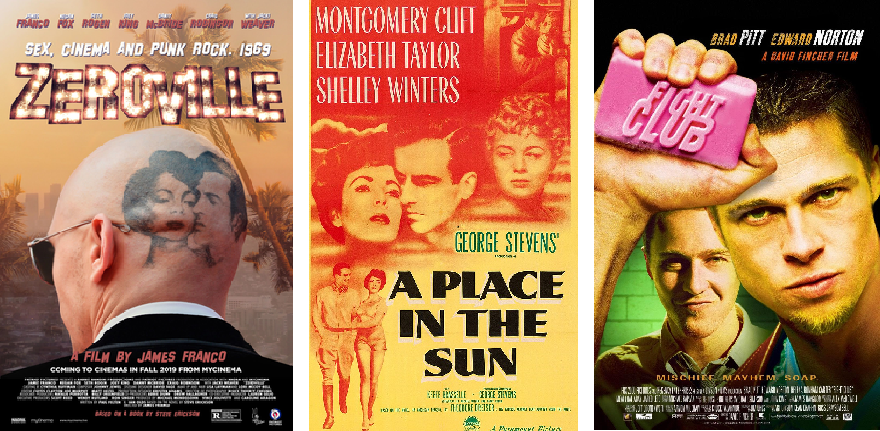
Somewhere along the line humans forgot that they were telling stories because they were integral to the universe, and the universe had been doing it since long before they were around. And they also seem to have forgotten that the universe creates upgrades out of the complex symbiosis of a select few elements of the previous stage. Hence certain atoms made DNA, although most didn't. And certain DNA made consciousness, although most didn't. And certain consciousness made movies, although most didn't.
Knowing this we should expect two things:
- If there are "certain" movies, then these certain movies might be expected to create patterns that nobody deliberately designed but which are spontaneously generated natural patterns. These patterns would reflect a kind of global meta-mind, rather alike the graphs of the stock market, which ultimately reveals the combined psychology of humanity's society.
- At some point, nature should be able to produce a data storage device that is so efficient that it is able to store the entire universe, and in effect duplicate the whole thing.
Both expectable things rather obviously resonate with major portions of the New Testament, and specifically the coming of the Christ. That means that we appear to be entering the cosmic equivalent of Christmas, in a Tyler sort of way. Hurray...!
🔼Santa is on his way
We've been getting ready for centuries, but finally the season to be jolly is upon us: Santa Claus is coming to town! The name Saint Nicolas means Holy Victor Over The People, so that should put all us bungled and botched right at ease.
As every child knows, Santa Claus resides in an unexamined haven somewhere out of reach of common review. He controls all labor, all resources and all production and oversees an economy of privilege rather than market discovery. To maintain all this, Santa also controls a pervasive intelligence apparatus with which he records all activities of all children, even down to their very thoughts and intentions. Then he gives all children a social score and dispenses resources, benefits and social status accordingly. Children that are calm, compliant and obedient get showered with love and rewards. Kids that aren't, well, their situation is grim and the odds are against them.
And since Santa is omniscient and almighty, the bad children are not eligible to legal defense or rights of recourse or appeal and get processed with lightning speed. For all this generosity Santa merely requires homage and a little offering. And we've been giving it to him for centuries, so he gets more eager every year to get here.
The modern figure of Santa Claus derives from older sources, most notably the version still told in the Netherlands. In the Netherlands, he's called Sinterklaas, is a white-bearded bishop and wears a red robe and miter and a crosier, which derives from a shepherd's staff. Every year he shows up and dispenses candy and presents to the obvious delight of an overwhelming majority.
The all-seeing intelligence agents of Sinterklaas aren't green elves, as they are in America, but full grown black men called Black Pete (Zwarte Piet). They all have the same name but operate in hierarchy. The chief of the Black Petes is called Peter Boss (Pieterbaas), and carries a jute sack full of presents for the good children, and also a bundle of birch rods. This bundle of rods Peter Boss uses to chastise the bad children. If that doesn't improve their behavior, Peter Boss wrestles them into his sack and takes them away, never to be seen again.
Even further up Santa's evolutionary timeline, Santa sheds his red costume and white beard all together, and becomes quite a bit younger. Younger Santa usually has only a mustache, sometimes a broad smiley one and sometimes a silly toothbrush. In this version of the story, his all-seeing minions have names like Gestapo or KGB, and bad children get taken to Gulags or are disposed of in gas chambers.

🔼Back to the Future
Historians have always struggled to explain how the regimes of Hitler and Stalin could possibly have arisen in a world peopled by reasonable and humane adults. But that's because the tracking system of history has never been able to properly differentiate between the reasonable masses and the early versions of these insidious movements. A naive spectator might expect to be treated to a young Adolf dressed in black lederhosen kicking puppies, but that's why young Adolf has always gone undetected.
In 1949, when George Orwell published 1984, he called Santa's intelligent agency "Big Brother", but never explained how Big Brother would have appeared in his own infancy. The Greek word for brother is αδελφος (adelphos), which bears a striking resemblance to the name Adolf. But the name Adolf is actually old Germanic and means "noble wolf" or "great at being a wolf".
A wolf is a highly social animal that hunts in packs. A solitary hunter will aim straight for its prey but a wolf pack's weapon is intelligence. Pack members have specialized tasks, spread out and away from the direct line of attack, and even take point in turns. When the few individuals at point finally slay the prey, they call in the others by howling and barking for joy, often when the prey is still living. When everybody is there, the feast begins.

Let's pull a Marty and take a ride on the spirit of futures' past to a world where aftermath becomes premonition. Speeding up to 88 miles per hour1 toward the mirror sphere at the heart of our world — that celebrated magic crystal palace, or rather the shopping mall in this particular version of the story — we slip further down Santa's evolutionary rabbit hole.
Note 1) Since we here at Abarim Publications have an outstanding sense of humor, we'll make playful use of references that we don't explain in the expectation that the reader understands: In The Aftermath (2019) an American officer tracks down remaining Nazi faithfuls by looking for a signature tattoo of the number 88. This number stands for HH or Heil Hitler. It's highly unlikely that Spielberg was unaware of this number and used it accidentally in Back to the Future. Also note that the word "Führer" and the name Euphrates, of the proverbial "river of Babylon," come from the same ancient root; see our article on the verb πειρω, peiro, to pierce, for more.
Going back in time from the elderly Santa we all know and love, we pass Santa in his prime as Hitler/Stalin, and Santa becomes a younger man until he is a boy who never grows old. His minions are called Lost Boys, and when Peter found Michael and John, their supervision by their older sister was being compromised. But Peter can do what ordinary boys cannot but dream to: Peter can fly because he gets away with violating natural law, and who doesn't want a taste of that? He stays young because he can defy time and he separates from his shadow because even light can't master him. He's dressed in autumn leaves or lush spring green because he's a natural.

Peter's full name is Peter Pan, named after the god of shepherds — our English word "panic" comes from that name. Peter's enemies are time (a crocodile), and a pirate captain called Hook. This pirate captain, Peter Panic has seriously maimed in previous encounters, but now Hook got his one remaining hand on princess Tiger Lily, also a natural, in order to draw out Peter. Peter and his Lost Boys receive their super-flight from an angelic sprite called Tinkerbell, who Peter makes to snow on them. Thus ganged up they outwit both the crocodile and the captain, and captives are liberated. As the captain is surrendered to the crocodile's snapping maw, all others pay homage to Peter, as Peter helps himself to the captain's abandoned garb, ship and role.
In a very similar way, Mary Poppins too flies into a London nursery and invigorates middle class but discouraged children. Their names, again, are Michael and Jane (Jane is the feminine version of John). Mary Poppins assumes deliberate blackface as she follows her pupils out the chimney of their house and onto heaven. Likewise, the Dutch legend tells that Black Pete isn't black because he's African but because he's covered in soot, and the children understand that this is from going up and down chimneys, to deliver presents and sugar candy.

But while all Dutch children know that Sinterklaas comes from Spain, the parents know that Black Pete is covered in soot because he collaborates with the Spanish Inquisition. Black Pete is black because he rounds up Protestant subversives and burns them at the stake. Sinterklaas himself hails back to the worship of Molech, when parents were indoctrinated to the point where they voluntarily laid their own living children in the glowing arms of a giant metal monster, whose priests bellowed air into its raging hearth within.

Cultures forget in the same way in which a jungle overgrows a building. Life will always find a way to split rock, and ultimately all buildings will return to dust and will be re-absorbed into the living world. But some temples take thousands of years to subdue, and continue to dominate the shape of the forest many generations after they were abandoned and their shadows are reassumed in cities built anew.
We moderns like to congratulate ourselves for being so much more sophisticated than the ancients, but in fact our modern world is organized exactly the same way, we only call its elements by different names. Our commercial world works the same way as the ancient Greek world of polytheism, with consumers "trusting" companies and brands and showing fidelities by sporting logos. In the old world, people manifested their individual identity by the display of their favored deities in precisely the same way as we moderns express our identity in the array of products we endorse. Athens in Paul's days looked just like a modern shopping mall, where people are continuously bombarded with hypnotizing images that entice them to part with both their money and their proper judgment (Acts 17:16).
Our souls are now our wallets, our jobs are our lives and the loss of each is described in the same terms in which our modern mythologies describe the disposal of misfits by Black Pete: losing our job means getting sacked and fired.
But, as Marty would say, all this seriousness is getting heavy. Let's look at some monkeys!
🔼Theory of Mind
The curiously termed "Theory of Mind" is the common mental faculty that allows a person to understand that the solid ground of one's knowledge, experience and conclusions are essentially one's own and may not be shared with someone else, for the simple reason that the other person may have observed other things, have other experiences and thus other conclusions.
The understanding that someone else might be living in a wholly other reality first requires a sense of self, which is a trait that only the most intelligent social animals possess. The extensive review of someone else's position in relation to one's own, so as to conclude into Theory of Mind, requires careful definitions and thus words, which are unique to humans. This is why animals, even animals that know words, ask no questions (Who asked the First Question, 2006).
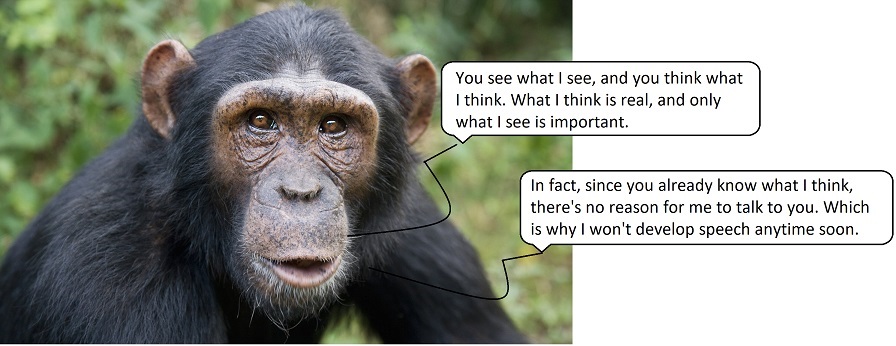
Human children begin to develop sense of self at around 18 months of age and are around 7 years old when their Theory of Mind has finished forming. It takes, however, many years of further practice to learn to respect or even to benefit from people's otherness, and many never attain the escape velocity required to break orbit of their own sense of reality. Very few truly take flight and of those very few truly soar freely. As we will see below, the gift of flight is never achieved by the rich and powerful but always by the poor and weak.
🔼Memories of a Brazen Age
Imagine a group of, say, 100 children of about five years old and younger. They've been left in a forest after a devastating crash has wiped out their metropolis and killed off all adults including their parents and most urban children. They will always remember their parents, but always as children who once watched grown-ups go about their complex urban and tech-saturated business. The children of the forest will never see a similar metropolis in their lifetime and they will never be able to begin to comprehend their parents' way of life, even though the parents' way of life grew out from the same human nature that now guides the children through their childhood in the wilderness.
Some of the initial survivors had been just a few months old when the cataclysm occurred. But the older children hadn't known how to save their little siblings and could only watch them fade away. They had tried to hold them like they had seen their parents do, but their parents had the gift of life and they clearly didn't. That left a haunting existential trauma that dominates the layout of the surviving children's earliest settlements, a cluster of very rudimentary camps that in turn merely comprise loosely dedicated areas for sleeping, for processing food, and for leaving wastes.
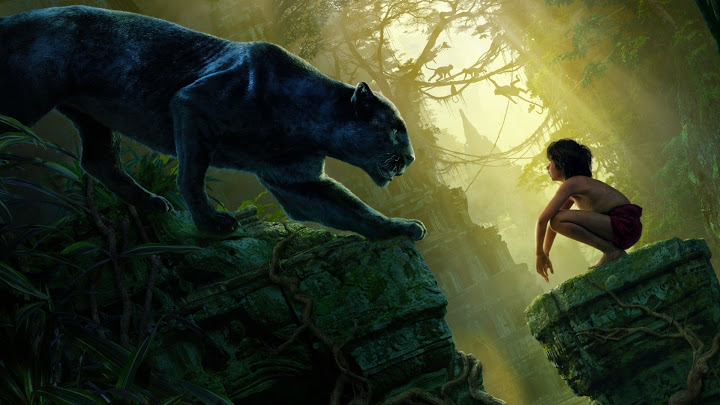
Despite their plight, the children love life like all young things do. As they find their way through the wilderness, perhaps they occasionally come upon the utter ruins of their lost city, but they feel barely connected to it and give it little regard. They have better things to do. They play and frolic, subdue and release.
After some years, one of the children — a young girl; let's call her Roma — notices that she and all the others have been growing in size, just like all living things in the forest do. That leads her to conclude that somehow the Parents have returned and started to give the children life. "But why us and not our little siblings?" she wonders as she saunters through her camp and organizes her life while she ponders.
Roma remembers being younger, and notices that she doesn't simply know more but also that her thoughts change. Sometimes she's joyful for no reason and sometimes she's angry for even less. And one day, while at the place of waste, she discovers that she is wounded deep within her belly. She's bleeding from her very heart, and that unsettles her. She feels deep inner pains that she's never felt before and begins to seek shelter with one of the bigger and stronger kids, a boy; let's call him Marty.
Marty fights a lot but he also keeps the other kids in check and her secure. Periodically the pains return and the wound reopens, until that cycle stops and the girl begins to grow fat. She has seen with her own eyes that when children die, they first grow thin. So growing fat means that the Parents are giving her extra substance and extra life. The girl is grateful and happy and feels safe in the care of both Parents and Marty. She eats like a wolf and grows like an elephant. Life has never been this good.
Then suddenly, out of nowhere, the pains return and they return with a vengeance. Then the bleeding starts again! In panic she staggers to the place of waste and tries to defecate. The other children have no idea what to do. Roma was the fattest child, the one with the most life and approval of the Parents! Why were the Parents so angry with her? They scream and Marty begins to beat them because that's all he knows to do.
As her peaceful village erupts in pandemonium, Roma feels like she's being torn apart by an invisible wild animal, and as she screams in morbid fear, her insides — her heart! — come out of her in a gush of blood and body parts. It's the bloodiest manifestation of death any of the children have ever seen and all scream in horror and angst. But instead of death claiming its prize, the children see in their astonishment that both Roma and one half of the girl's severed heart keep moving! They keep crying while they should be dead!
The girl, exhausted and wildly confused, takes her squirming heart in her arms. It's obviously and clearly a part of her, but it also brings up a five-year old's association of a precious thing that might die if not properly cared for. She stares at it and it stares back. She screams and it screams back. She has no idea what to do.
In the days that come her subconscious and hormones guide her. Her living heart finds her breasts, and as she physically heals, her psyche stabilizes and homes in on that strange inner part of her that now lives on her outside. Neither she nor the child realizes that they are two people rather than one. She turns to the child as much as the child turns to her. What she had thought was a mass of accumulated reserves in her belly had turned into a bloody mess first and then into a living external heart. Now her breasts turn her real mass of fat into white milk.
🔼A Game of Drones
Both the word "panic" and the name Pan come from the Greek adjective πας (pas), meaning all or total. The familiar magical incantation "hocus pocus" was first recorded in England in the 17th century, but appears to have originated in the Netherlands as the more elaborate hocus pocus pilatus pas. The original seems to have been hoc pacis pilatus passio, which means "this peace, Pilate suffering". If we allow this incantation to be a Latin/Greek hybrid phrase (such hybrids are not uncommon in literature), it becomes "(Latin:) through this comes peace, (Greek:) when Pilate is over everything" or paraphrased in German: "Sieg Heil, Pilatus über alles".
In the 17th century, the Dutch had been able to construct an economic empire based on a kingless republic that they had carved out of the greater Spanish realm. Their war of independence had started in the mid-16th century, as a social mist of folks who fell out of the Catholic norm. Despite being horribly brutalized by their proper Catholic neighbors, these nameless troublemakers somehow managed to find each other and band together and introduce the Low Lands to an 80 year-long war that was a maddening hybrid of a civil war and an international war against Spain.
In order to put reigns on the insurrection, the Dutch and Spanish agreed on a truce, during which the movement would be formalized and made to heel. During that truce, the seminal debate between Gomarus and Arminius split the Reformers into two main camps. This debate occurred in Leiden, in 1609, where the Puritans of England had taken temporary refuge. The Puritans liked Arminius' take on things but, for political reasons, the Dutch government favored Gomarus, and outlawed Arminianism and began to violently persecute Armenian-minded thinkers. In 1611 King James published his Bible, and in 1620 the Puritans began their desperate trek to North America as the war between the now formally Gomarian Dutch and the Catholic Spanish was continued.
Thus, Protestantism was born a twin, with Europe in the East as the slightly older brother and the Colonies in the West as the younger one. Protestant Christianity in the United States is largely Arminian, which is why Americans generally emphasize personal freedom and personal responsibility. Protestant Christianity in Europe is largely Gomarian, and emphasizes obedience to the leaders of state and church. This is one of the reasons why Hitler's ideas found fertile soil in Europe much easier than in the US, and it's also the reason why European Protestantism was largely abandoned after the war.
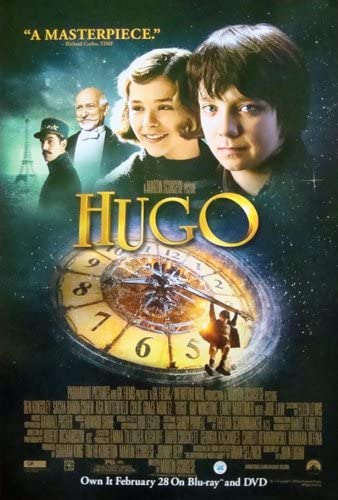
The formal name of the Netherlands is the United States of the Netherlands (Staten-Generaal der Nederlanden / Republiek der Verenigde Nederlanden) since the founding fathers published their Declaration of Independence (Acte van Verlatinghe) in 1581. This allowed them to create the first republic of the modern world, which in turn had quickly become a haven for refugees from all over Europe's oppressive monarchal regimes. Not only Britain was bubbling with reformers, France was too. And they too were slaughtered. A very large group of so-called Huguenots ("like-minded ones": hug means mind, and the Dutch extension -genoten means joint or shared, possibly after Ephesians 4:4) who had survived the St. Bartholomew's Day massacre of 1572 in Paris, had also ended up in the Netherlands. They sided with Gomarus.
The Dutch magic weapon of liberation was financial credit, which in time lead the way to fiat currencies, which in turn is the fermentation that's making our world drunk today (Revelation 18:3). The Dutch Revolution fed into the American Revolution, which fed into the French Revolution via Jefferson and Lafayette, who introduced the Declaration of the Rights of Man and of the Citizen, which in turn inspired the 1948 United Nations Universal Declaration of Human Rights and ultimately the International Bill of Human Rights of 1976.
In early 17th century England, the Puritans were supported by the Dutch Reformers but systematically brutalized by English state and church leaders. Some had their properties confiscated, the letters SS (Sower of Sedition) branded into their foreheads, and ears and noses cut off. The name Rudolf is like Adolf and means "famous wolf" or "wolf of collective appreciation". At Christmas, Americans don't sing jolly songs about a mythical red-nosed reindeer but about rounding up and mutilating non-conformants. The name Tinkerbell is the same as "jingle bell," which is a church bell and thus a summons to gather; a social alarm that rings when someone is found tinkering with the norm. When the sleigh bells ring we don't sing a cheerful sleighing song, but when the slay-bell rings the murderers sing a slaying song.
This horrible arrangement doesn't play out when there is winter in the air, but when people grow cold and there's a redshift in their stars. People grow cold when in their temples of narration violations of natural law are increasingly applauded, and the yearning to understand natural law is increasingly suppressed (Matthew 24:12). Free people, whose quality of life depends on their understanding of natural law, gather fearlessly and noisily in massive droves that are neither ordered nor centralized and cannot be governed or directed. Stone cold and petrified people gather in ordered rows, like mindless zombies silently obedient to their commander up front, and collectively capable of unspeakable acts of evil.

A wife who has had to suffer abuse for years will cower in a corner at the mere sight of her husband's raised fist. When a Medieval Catholic bishop raised a crucifix, he did that to remind the viewers of the worlds of pain that resided in the legions of his quietly awaiting minions. Constantine didn't abolish crucifixion because it was too holy or too brutal but because it wasn't necessary anymore. The fangs had struck sufficiently deep and the poison had sufficiently spread.
The dominion of Dutch Sinterklaas only covers Catholic and Protestant Europe. The much milder American Santa lives on the north pole, and his dominion is global. America's Santa relates to Europe's Sinterklaas the way the sight of a crucifix relates to the sight of thousands of one's countrymen, their wives and their children dying slowly on crosses. The principle is firmly anchored in our collective mind and Santa is told of in all guises.
Sometimes Santa is dressed in black, clearly despicable but also adorable, and his minions are yellow midgets (allies among Asians). And sometimes Santa is the CEO of a chocolate factory and his minions are orange (allies among the Soviet Union). We tell our younger children the story of the big super-brother and call it Shazam!. For the slightly older children, and barely disguised as Nickolas Fury, Santa heads an international intelligence network called S.H.I.E.L.D. (Genesis 15:1) and periodically deploys his Lost Boys, now called Avengers (Deuteronomy 32:35), who are barely disguised elements of the US global military. Together the Avengers patrol the earth and keep the peace by blowing up bad guys (Job 1:7, Zechariah 1:11).

🔼The Passion
The purpose of crucifixion was not to kill somebody because that was far easier achieved with a blow of a sword. The purpose of crucifixion was to strike terror in the hearts of the audience; those among the onlookers who might harbor ideas that were similar to those of the one dying. The purpose of crucifixion was to clearly demonstrate what kind of behavior led to death, what kind of behavior could get you fired and sacked. It was a show that was supposed to last for days.
When Jesus died on the cross, he died much too soon, and most people were surprised that he had died that quickly (Mark 15:44). The whole idea of the cross was to make it difficult for a person to breathe and when a crucified person finally died, he died from asphyxiation and exhaustion. Someone who died after mere hours and did so with a loud shout, didn't die from the crucifixion (Mark 15:37). Jesus certainly died, and he was certainly put to die on the cross, but he did not enter death because people had decided that he should do so.
When Jesus died he shouted, "Father, in your hands I commit my spirit" (Luke 23:46). Nobody but Jesus himself committed his own spirit to whoever he wanted, wherever he wanted, and whenever he wanted. His life was his and not for someone else to direct, not even into death. In Jesus' own words: "For this reason the Father loves Me, because I lay down My life so that I may take it again. No one has taken it away from Me, but I lay it down on My own initiative. I have authority to lay it down, and I have authority to take it up again. This commandment I received from My Father" (John 10:17-18).
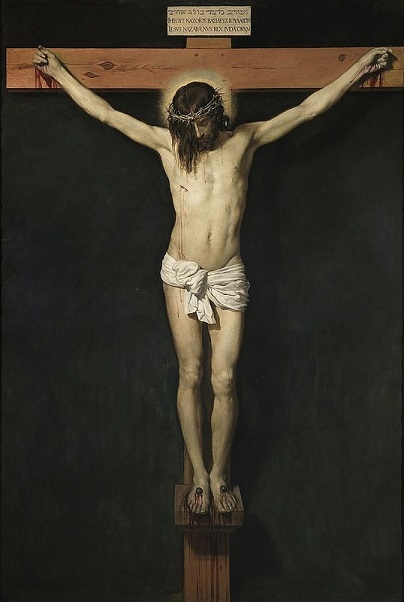
The Roman centurion who saw all this happen was a Roman polytheist. When he cried out: "Truly this was the Son of God!" he meant it in the primitive polytheistic sense of the words. The Jews who reported these things were monotheists and spoke of the Son of God in a blockchain sense.
Remember Roma, the girl from our story. She knows nothing of human reproduction. She has no clue that an encounter nine months earlier — which had been in no way any different from any of the violent or playful encounters that she had grown up with — had caused her instability and collapse at the place of waste. She has no words or pictures in her consciousness that can describe or even explain the birth of her Child, or even that she and the Child are different persons. She has no cultural Theory of Mind. She does not know that the Child is Other. She doesn't know what the Child needs, or how to raise it, how much freedom it should have to wander away from her, or how closely she should protect it. She simply doesn't know that the Child will be an adult some day and look her in the eye like any other adult and talk with her and guide her into the magic kingdom of Theory of Mind.
All Roma knows about her Child comes from her subconscious. Roma only knows what wafts up from the depths, dreams in the night that speak in ghostly images of recognizable objects that shape-shift and then dissipate. That's all Roma knows! Now how on earth is she going to explain Marty and all the other kids, even the animals in the forest, that her Child is unspeakably important to her, and that she will fight to the death to protect it?
🔼The Roman phage
Jesus Christ was not born in the year zero, but in the decade from the death of Herod the Great in 4 BCE (Matthew 2:1) to the ascension of Quirinius as governor in Syria in 6 CE (Luke 2:2). This time span coincides precisely with the Judean reign of Herod's son Archelaus, who messed things up to such a degree that Emperor Augustus personally deposed him and overruled Judah's future puppet kings with Roman governors. By that time, however, the world was already a desert.
In 107 BCE, Gaius Marius had reformed the rules by which the Roman army operated. Prior to the Marian reforms, only rich citizens of nobility — only people who were proven experts in running a society and who themselves were heavily invested in it — could be soldiers and they would pay for their own equipment out of their own means. The lowest ranking participants of the pre-Marian army were so-called fifth-rank citizens who couldn't even afford a shield and had only a spear. These fifth-rankers would run ahead of the main army and fling their spear at the enemy and run back; an activity clearly instilled in the name Pontius Pilate.
The most visible of the Marian reforms was the inclusion of people who had no properties and would soldier for a wage. These people could not afford fighting equipment, and so Marius had the state supply it: hence the familiar Roman uniform. Prior to the Marian reforms, the governing elite only took to soldiering when there were conflicts that could not otherwise be solved. Marius formed a standing army of professional soldiers, whose continuous training let them develop fighting skills far beyond those of any Germanic or Celtic peasant. Roman soldiers began to be practically invincible. War began to be a game and soldiers began to look forward to combat and pick fights wherever they could.
Mere decades before the reforms, Greece had been deflated and Carthage had been utterly leveled — half its population slaughtered, the other half sold into slavery — and turned into the capital of Rome's north-central African province (Africa is where Rome's food was produced, and Roman Carthage's province became the wealthiest province after Italia). Within a hundred years after the Marian reforms , the lush freedom-loving Roman Republic had destabilized and had become an arid control-addicted military death machine: an Empire centered wholly on the Emperor in Rome. The Celts of Europe, once as decentralized as the Phoenicians had been, had likewise been slaughtered and sold into slavery.
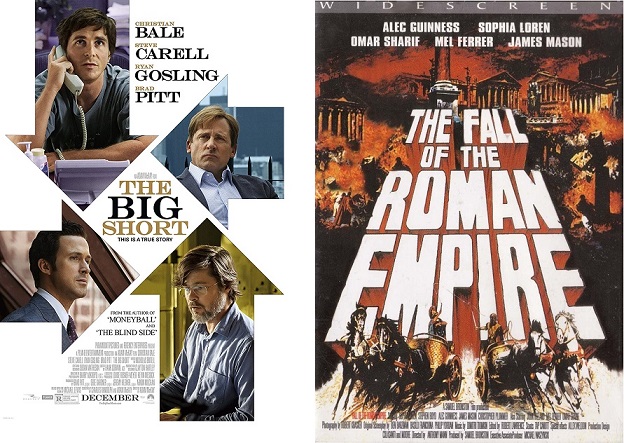
The "rise" of the Roman Empire was really much more alike the early stage of a modern market crash. It was a disaster for an exploited majority and desired by nobody really. Market crashes occur when on the ocean of human collective psychology waves of uneasiness converge into a perfect storm of fear. Nobody wants a crash but fewer like to ride their investments into bankruptcy, so when the market trend turns bearish, high-end investors begin to slowly sell to maintain a margin of safety. The price drops further and if it finds no support to settle on (support comes from a solid and shared conviction of a large group of traders that the market is underpriced), further descent results in an all-out sell-off in which the vast majority loses. When the crash is big enough, it will dissolve economic cohesion: companies will begin to disintegrate and jobs will evaporate. If a depression is deep enough it will trigger a long term recession, and a bad enough recession will trigger a war. A big enough war may halt or even revert human cultural evolution.
The lush and highly liquid market of wisdom topped out around the time of Alexander of Macedonia, and the centuries long bull run began to bend bearish. By the last half of the last century BCE, the market-makers realized that the world was headed for a stupefying crash and tried desperately to stop it. A group of Roman senators banded together under the name the Liberators (namely Rome from tyranny), and assassinated the rogue-general Julius Caesar, whose defiance of the senate would ultimately result in the formation of the Empire. But in the subsequent civil war, the Liberators lost from the Triumvirates headed by Octavian (means The Eighth), who would be Rome's first Emperor Augustus.
The Roman Empire rose as the wisdom-market began to nose-dive, and in 6 CE the opposing forces gathered for one final, two-pronged offensive. In the same year that Judea lost the last vestige of its autonomy, the Illyrians — who peopled the area of later Yugoslavia — rose in rebellion. The Romans sent in legion after legion and the Illyrians brought the Empire to the very brink of collapse.
In 9 CE, when most of the Roman Imperial Army was in Illyria fighting for its very existence, the Germanian tribes of northern Europe lured the rest of it into the dark heart of Teutoburg Forest. There three whole legions (30,000 men) were slaughtered in what would be remembered as Rome's greatest defeat ever. And that means that the Illyrian Revolt resulted in victory for Rome. Illyria was leveled and ethnically cleansed. The world gridlocked. And the free market of wisdom became insolvent.
🔼Panem et Circenses
When a trading house notices that a crash is in the works, it will close its trading floor to check the propagation of panic and preserve the house. Usually that works, but if the panic is deep enough the crash will continue in the corridors, and even pour out onto the street and keep going until all stocks are of companies that have ceased to exist and nothing of value remains. No one person created the Roman Empire but many people who worked hard to bring it about, despite its great many enemies, seem to have understood that humanity was in a panic-driven free fall.
If humanity's fall was left unchecked it could ultimately erase all mankind had ever achieved. A crash bad enough could wipe out all humanity's technology and science. A worse one could even erase mankind's ability to write (this actually nearly happened in the Bronze Age Collapse — read 1177 B.C.: The Year Civilization Collapsed, 2014). One worse than that may have spread the survivors so thin that even languages would have evaporated. Human evolution itself could have been forced back, and humanity could have been swallowed up to become just one more clever mammal in the biosphere. Even the human body could have started to revert, and humanity could have turned into pink pigs.
Whether consciously or not, whether deliberately or not, Rome became humanity's emergency brake. It declared Pax Romana to calm everybody's nerves, doused itself in concrete, and strove to preserve whatever was left. Sculptures told stories and buildings became sculptures. The wisdom elite stopped searching for new insights but concentrated on casting concrete indexes of what had been achieved. Pliny, Ptolemy, even Josephus all wrote histories and encyclopedias rather than fiction and new science. The library of Alexandria became a bearish storehouse of what was thus far produced, rather than a bullish academia that probed forever onward.
When the danger of lesser military mountains had abated, Rome's primary problem became that humanity desires liquidity the way an individual desires water (physical thirst is self-similar to mental boredom). The last of the Latin satirists, Juvenal (who lived sometime between 50 and 150 CE), lamented that the people who would once never sell their vote and hence [collectively and sovereignly] gave form to their own government, now retreated in fear and hoped only for bread and circuses. The joke, of course, is that a normal person would hope for bread and water.
The circus was a major element of Rome's core psychology. It was a place where all the turbulence of life was confined to a small narrow circle (hence the name) from which it couldn't escape, and from which the audience could take a hardy gulp without the risk of getting swept up by it. The Romans likewise loved physical water, as long as it came in aqueducts and circular pipes from which it could be summoned but from which it wouldn't escape. Roman water let you wash your dishes but wouldn't change the landscape.
Jesus spoke of "living water" (John 7:38), which was a fairly common Hebrew term for freely flowing water, as opposed to stagnant water or water that's forced through a conduit. When Minerva asked Jim Williams if his water "ain't been through no pipe," she referred to just that (Midnight in the Garden of Good and Evil, 1997).
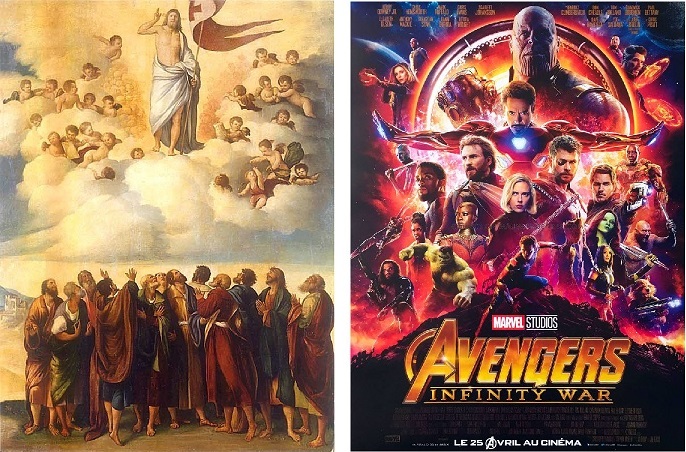
Historians have always struggled to explain how the Roman Empire could have persecuted Christians for three centuries and then become Christian itself, simply because the premise is as patently absurd as suggesting that if Nazi Germany had prevailed, it would have been a Jewish state by 1948. The people who were killed in the early Empire were liberty seekers from all sorts of cultural and ideological backgrounds. They had no single label and were certainly not organized in any formal way. In fact, the Roman historian Cassius Dio reports that these people were executed on account of their Atheism, "a charge on which many [...] who drifted into Jewish ways were condemned" (67.14).
And although to Roman legislation the word "Atheism" referred to a refusal to submit to state sanctioned deities, those people were certainly not Christians in any way that would be recognizable to us moderns. The Christianity that is familiar to us was formulated in the 4th century by emperor Constantine, who blatantly rebooted Roman Imperial Theology, and made Christianity a polytheistic circus complete with a flying superhero and a saintly band of demigods.
The key to all this is that a modern society is based on property rights, which necessitates ID tags for both things and their owners. And that means that roaming vagrants and people who are without category are a lethal threat to a modern government and the order they seek to generate. But any kind of novelty (and all improvement comes from new things) are by their very nature without category. That means that a modern government must allow a certain degree of landlessness, in which (in the words of Herman Melville) may be found the highest truth. And that in turn means that true progress can only be found amidst the worthless, and that true treasure can only be found buried in dirt.
When John the Baptist had his disciples ask Jesus if he were the One or another One was still to come, Jesus didn't curse, take flight or smite but invited the men to look around: the blind were receiving their sight and the lame were walking again (Matthew 11:2-5). Later Jesus said that his people would do even greater things (John 14:12). Today most forms of blindness and lameness, and a great many more horrible diseases, are curable. That's because over the centuries since, generations of diligent scientists have submitted themselves to the study of nature, scrutinizing and building upon each other's works, freely and independently and according to the same simple rules. They had no superhero to guide them and nobody took flight. The victory of the scientists was all natural, and it's really the only one that counts.
The Romans were into water works. To build their city, they drained off a vast marshland, a natural sanctuary of biodiversity, and called it human glory. To hide their filth, they worked armies of slaves to death building a network of sewers, and called it cleanliness. They built fountains that looked like springs and canals that looked like rivers. They would change names rather than natures, and get away with murder and call it life.
🔼The House of Mouse
The principle of "market discovery" dictates that a market that is sufficiently liquid will settle on prices that are proportional to the usefulness of products relative to their availability. A free market will form a pattern that resembles a river, with tributaries of discovery on one end and a delta of saturation on the other, and a main body that meanders through the landscape in response to the gravity of demand, avoiding mountains of tradition while corroding them in the process.
When a culture is sufficiently liquid, all a culture's sense of value is determined by market discovery. It will not only determine the value of goods and services, but it will also determine the meaning of words, symbols and images. Global correspondence resulted in standardization of spelling first and then expressions and finally figures of speech. When the market of writing had become sufficiently liquid, it began to invent a world on top of words: archetypes, metaphors and allegories that formed from the mist that rose from the surface and began to float like clouds over the landscape.
A free market itself determines both the shape of the clouds and what they come to mean. That in turns means that a free market contemplates its own existence in its stories, and that in the unified identity that thus arises the market cannot lie. That makes fiction a much more accurate mirror of society than dramatic realism or even journalism. A society remembers everything, and societal memory can go back for millennia, even hundreds of thousands of years. And it does not lie but instead tells of everything that happened to her and within her in the bold confessions of themes shared between stories.

In our modern world Mickey Mouse is commonly regarded as the patron saint of all that's vain and tacky, but it appears that for reasons of cultural trauma, the image of Mickey Mouse is strongly undervalued in the world today. When in 1928 Walt Disney drew Mickey Mouse, the term "mickey" was derogatory and described a duped or mocked person and that from a confluence of reasons. The familiar Irish and Scottish prefixes Mc and Mac come from the Gaelic word for "son of," and the term "son of a bitch" (which appears to relate to Queen Ness) has been in use since at least the time of Shakespeare. Moreover, the Dutch verb mikken means to target; the phrasal present perfect eruit gemikt, means "micked out" or "targeted and removed".
The market discovery principle appears to have associated the Hebrew name Michael — which means Who Is Like God? or What Is God Like? — to the many Irish who bore that name, and who had showed up in massive droves of hungry refugees from Ireland in the mid-nineteenth century, at the dawn of la belle époque. Back then, the economy in Ireland was as strongly polarized on the potato as it is on the finance industry today, and when in 1845 the blight struck out of nowhere and without warning, the country collapsed and its population fled to higher ground.
In 1928 America, the image of the mouse or rat represented an economic refugee who had been flushed out of its native sewers by a flood of unforeseen liquidity — which in turn is the natural reaction to synthetic polarization, and follows the second law of thermodynamics. Walt Disney's cartoon mouse struck a cultural nerve and became a surprise hit. The market discovery principle pushed Mickey Mouse to gravitate to movies that made light of the poor and homeless, which in turn made Mickey Mouse uniquely black (mice and rats in world literature are normally white or grey).
Mickey Mouse is usually dressed only in a loin cloth, and is most often depicted with his arms wide. This is commonly thought to represent a welcoming gesture, but it much rather resembles a man with his back against a wall and his hands up in forced surrender and supplication. Deep in the subconscious of every Western human, an image of a person with arms spread is associated with the ubiquitous archetype of the Crucified Christ.
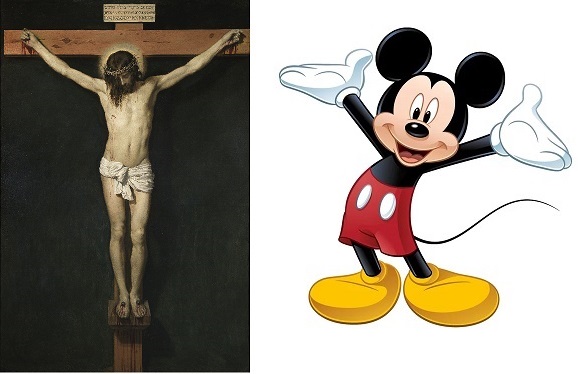
Mickey Mouse is America's Man of Sorrows, triumphantly resurrected in the para-Protestant Paradise of the City of Angels. He relates to the empty cross of Protestantism the way the resurrected Jesus relates to Golgotha on eastern morning. Both symbols derive from the common ancestor that is the Crucifix of the Medieval Catholic church.
🔼The House of God
You can only see something when light from that something travels to you and crosses your organic membranes and enters you. Prior to it entering you, you didn't see it. That means that everything you detect with any of your senses is inside your head, not outside of it. Colors, smells and sounds are the brain's interpretations of electromagnetic, chemical and mechanical pulses that are all mere slivers of far greater spectrums. You are not inside the world; the world is inside of you. That's why symbolic representation is such a miracle. It proves that you are not alone (Genesis 2:18).
Symbolic representation began when observable reality was understood to consist of discrete elements, such as bison and lions, which were rendered in art that was as unique to every artist as worlds were in heads. People began to depict the bison and lions of their world, not with detached "photographic" realism but rather with emotional realism; the only kind of realism that was available to them. People drew what they experienced, and particularly man's view of himself seems to have taken many millennia to settle upon a globally recognized consensus.

Over time a consensus was achieved and tens of thousands of years later we still marvel at the beauty of stone age rock art but forget that we are able to recognize the image because we have inherited the consensus, not because our brains follow the same natural law. In fact, there is no natural law that dictates that the buffalo depicted has anything to do with the actual buffalo. Rather the opposite is true: natural law dictates that the two have nothing to do with each other, and the link is entirely illusory, which is why dogs and cats don't see anything in our pictures: they are not in on the dealio (hence also Westworld's leitmotif of the picture that "doesn't look like anything").

There's nothing "real" or "realistic" about the picture above. Our celebrated conscious reality is made up. It's synthetic, and those ancient buffalo are really the oldest forms of artificial intelligence we have. The crucial difference between artificial and unnatural is that artificial remains faithful to natural parameters and processes (Blade Runner 2049), whereas unnatural doesn't. When natural humans realized that nature consists of elements, they began to sort the elements for commonalities and the commonalities became pictograms and then hieroglyphs and finally letters — artificial but not unnatural.
The alphabet as we know it appears to have originated in Egypt and was perfected by the Phoenicians. But the crucial contribution of vowel notation came from the Hebrews, around the time of king David (1000 BCE).
The Hebrews made the alphabet into a lasting wonder by assigning three particular consonantal symbols the additional function of representing vowels. These symbols were: י (yod), ה (he), and ו (waw). These three letters allowed humanity to construct a reality on which all people could agree, and which would allow humanity to embody all of creation and ultimately the Creator. These three letters combined formed יהוה, YHWH, the familiar name of God (Joel Hoffman, In The Beginning, 2004).
Letters appear physically on physical paper and make words, which make thoughts and realities in people's minds. And that means that text is both visible and invisible, both physical and mental, both earthly and heavenly. These two essential natures can neither be separated nor consolidated, and the mystery of this triggered the first great Council that would lead to formal Christianity (Nicaea, 325 CE). Christianity quickly plummeted toward the familiar cabaret of saintly superheroes, but text remained the true marvel, and the substance of the only true Marvel Universe.

The universe expands but the purple threat of evolution goes via our DNA, through our brains into our minds, where we construct a united world in the image of the Creator. The primary principle of evolution is not mere accidental mutations, or even some desire of creatures to have some unimaginable trait, but the tendency of living things to collectively create an artificial support that allows it to function more efficiently, then organize life upon that support to perfection while at the same time naturally selecting traits that embody that artificial support so that, over time, it will be assumed into the living biology of the individuals. This is why pictures probably preceded words, and actually served to hone words in the minds of people that sought a common center.
The story of the tabernacle that was based on Egyptian designs but which derived from "heavenly patterns" (Exodus 25:40, Hebrews 8:5) is about the development of the alphabet, which was completed when Solomon and the Phoenician king Hiram jointly built the temple of YHWH:
- The First Temple of the Word of God is the alphabet, which was invented in the Levant and was represented by its mild-mannered public alter ego of Solomon's temple of YHWH in Jerusalem. Solomon's realm covers the whole of formalization, or everything that is written, whether in prose and poetry, numbers and mathematics, or even musical notes, paintings, photos and movies.
-
The Second Temple represents the singular unified web of sustained correspondence between multiple centers, which originated as the original "internet" of Jewish synagogues in Persia, and of which the temple of Zerubbabel was the public alter ego. The Romans perfected (i.e. systemized, commercialized and weaponized) the Persian public postal service and called it Cursus Publicus, meaning the Public Way. The folks whom the Romans called "Atheists" referred to themselves as "People of the Way" (Isaiah 35:8, Acts 9:2, 19:9, 19:23, 24:14, 24:22), and the Way refers to Jesus (John 14:6) as much as Herod's templar building program relates to the Roman road and mail system. The People of the Way called themselves such because they preferred empire-wide open-source file-sharing over forced devotion to silly local deities. If it hadn't been for the devotion to continued correspondence of the People of the Way, we wouldn't have the New Testament today, which is largely epistolary.
All signature elements of Judaism, including the parts of the Torah that visit the patriarchal era, stem from the Second Temple period, which is where the many references to the postal service in movies come from: from Norville Barnes in The Hudsucker Proxy, (1994), to Agent K in MIB-II (2002), Jimmy "Mailroom" McGill in Better Call Saul (2015), the High Five's postal van in Ready Player One (2018), and even The Postman (1997) with bad-guy general Bethlehem to make things clearer than necessary. The problem that governments have in separating postmen from vagrants is explored by the archetype of the Drifter (Clint Eastwood's Man with No Name, The Postman Always Rings Twice, 1934, Rambo, 1982). - The Third Temple is formed on the point of intersection of multiple webs, which emerged as imaginative allegory. Its "tabernacle" was once Hollywood, and the State of Israel its public alter ego. But nowadays the most obvious publicly accessible manifestation of the Third Temple is of course the digital Internet we have now. And as the lady said, "You can't hold the tide with a broom."
All these temples have two courts, an inner and an outer. The Third Temple's inner court is peopled by "Jewish" narrative (DreamWorks, Star Trek, Men In Black, Coen Brothers) and the outer by "Gentile" narrative (Disney, Star Wars, The Matrix, Tarantino). Neither kind has anything to do with a religion but rather with scope and compass. We'll have a closer look below but for now let's say that the actual temple at the heart of the complex is all about oneness, the inner court contains stories that fit together seamlessly in a kind of Über-movie Metaverse, whereas the outer court contains stories that don't perfectly relate to any of the others; stories that contain a certain degree of unrelatable "craziness".
The inner court is associated with a "bitter" familiarity, whereas the outer is of an attractive "sweet gentility" (in the weighty words of Mary Poppins). The inner court is perfectly centered and always confirmed (Deuteronomy 19:15, Matthew 18:16), whereas the second inevitably incorporates elements of unknown origin, and is at best only "crystal clear". This frequently deployed quality of gentile narrative, "crystal clarity," alludes to diamond clarity, which in turn explains references to Tiffany's — that's the Jewish nickname for the gentile library within which the Jewish library safely resides.

The name Tiffany comes from the word "theophany," which means "that which reveals God" (Hebrews 1:3). Many of the most splendid movies of the last century (Dances With Wolves, 1990, Shawshank Redemption, 1994, Forrest Gump, 1994, A Love Song for Bobby Long, 2004) were in fact barely recognizable adaptations of poorly performing novels that were nevertheless recognized for the uncut gems or diamonds in the rough they were.
The two courts, and the temple at the center, are part of a narrative continuum, but not all elements are able to travel along the whole spectrum. Many never even find the complex. Most who do, never make it past the first court. But those who do, even those who make it to the actual inner sanctuary, are still perfectly at home in the outer court and beyond. In fact, although the outer court cannot know the inner court, the narratives of the inner court walk freely among those of the outer court and are as familiar to the outer court as any. Or as Wanda said rather unkindly in A Fish Called Wanda (1988): "Yes, Otto, apes read philosophy; they just don't understand it!"
The "gold" at the heart of the Third Temple is not the data but the patterns within the data, not the linear patterns that Big Data compiles but rather those non-linear patterns that computers can't find and any child can see: living patterns that emerge spontaneously within the imagery.
The difference between these two kinds of patterns is that the first utilizes statistics to count and calculate clarity within vast stellar clouds of data points but ultimately remains puddle-deep, whereas the second is based wholly on the completeness and autonomy of data sets, no matter how small. A set of the latter kind may be much smaller than a set of the former kind, but still of a level of complexity that the first can't begin to dream of.
As Jesus explained: one tiny seed that is whole and complete contains an entire eternal forest, whereas the most glorious palace made from the greatest blocks of stone is doomed to eventually turn to dust. That is why someone with five PhDs and a prolific output may be ultimately forgotten by history, while a child who accepts help from strangers may be celebrated forever as the savior of our kind (Red Planet, 2000). It's not size that matters. What matters is having a set of knowledge that derives in full from the entire singular universe (Matthew 13:31-32). Or in the immortal word of Frank the Pug, "You humans! When are you going to learn that size doesn't matter? Just because it's important doesn't mean it's not very, very small." (Men In Black, 1997).
🔼Beauty and the Beast
Mickey's canine friend is called Pluto, which means wealth, from the Proto-Indo-European root pleu, to flow, hence the French il pleut, or "it/he rains". The one and only rightful king of any jungle is the Lion King, which is natural law, whereas domesticated cats are local legislators (and mouse-hunters) who don't get along with dogs for obvious reasons.
In societies where dogs dominate cats, play overwhelms form, business overwhelms regulation, the military overwhelms the government and everybody gets plundered in an ongoing struggle for substance. In societies where cats dominate dogs, loose mice are rare but so are accumulated reserves; in feline societies people worry more about decorum than about economy, and everybody gets checked out in an ongoing struggle for compliance. A canine-dominated world is noisy and chaotic and consists of large communities and low walls, and a feline community is quiet and ordered and consists of high walls and small communities.
A world with a cat for a god is a rigid singularity: a fire-raging desert centered on an iron throne. A world with a dog for a god settles in a heat death: a dark, frozen infinite of tiny emaciated corpses drifting ever further apart. A world with an ape for a god is a highly diversified, well-watered jungle where every animal has a place.
The peace between cats and dogs, of course, originates in the governed balance between the two. The dumbest mistake any society can make is violating the First Commandment, and insist that both cats and dogs stay fixed where they are at the moment of fixation. This gets societies in trouble with the second law of thermodynamics, which will build up tension in the superstructure of the society, and ultimate cause a violent explosion when the structure begins to snap.
No matter what an ape wants, as long as the zenith of his world is part of the swing of the seasons, the seasons will continue and the world of the ape will be dominated by the weather. As long as the House of Ape will be for apes alone, an ape will stay an ape, no matter how big he builds his castle. But when ape touches the summer ceiling and finds the door, the door will open and a sapient will be on the other side, reaching down through the door in his floor. The ape will know that it has touched sapience when he begins to build a house that is warm in the winter and cool in the summer, and a permanent shelter for domesticated cats and dogs.
This is the reason why in civilized households, dogs are leashed and cats are tagged, and also explains Rosenberg's cryptic assertion that "to prevent war, the Galaxy is on Orion's belt" (Mark 4:14). It's a small world, after all.
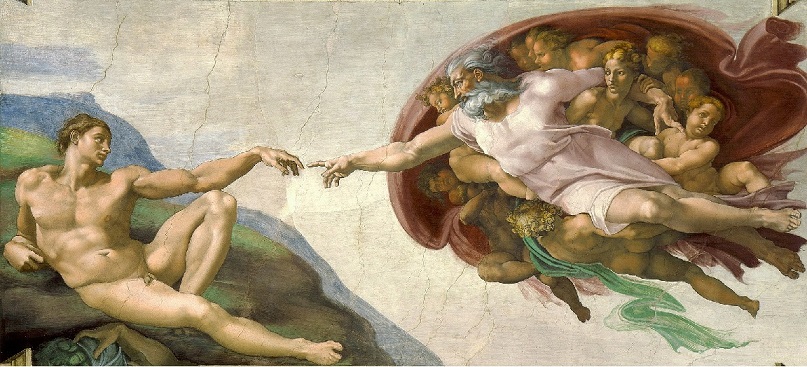
🔼The Legend of Farmer George
Most of our animal symbolisms derive from mankind's first dabbling with agriculture, with dogs (military) guarding the flocks (industry) and cats (legalism) hunting rodents (petty criminals). Carnivores have a simple digestive track (spontaneous action, narrow pack scope, concise instructions) and herbivores have a very complex one (action after deliberation, broad gregarious scope, lengthy sermons). Dogs are pleasure-first hyper-social carnivores and cats are duty-first solitary carnivores. Dogs are associated with nomadic animal husbandry, and cats are associated with sedentary crop farming.
A good farmer (human government, omnivorous and equal parts social and solitary) aims to develop the created order into a domesticated version without compromising the natural balance. A bad farmer curtails natural behavior and demands unnatural relations, to which nature reacts with plagues, diseases and wars. A good farmer thinks in cycles and complete processes, which is why a good farmer produces no garbage and his fires produce no smoke. A bad farmer is sedentary, produces piles of wastes and fires that cover the world in soot.
The western world that many of us are so comfortable with is largely the result of centuries of waxing Georgian, Edwardian and Victorian etiquette, which moved the white man's world firmly to the feline extreme of the cultural pendulum. Some norms derive from a sense of hygiene or social safety but most are utterly arbitrary and feel only normal to people born into them. Noncompliance to norms is seen as willfully abnormal and rude, but to abnormal people it's largely a mystery how normal people operate within their norms, which are like invisible chains. Minorities in a canine society will develop subcultures that lean toward a feline attractor, which is why pockets of minorities among "unmannered" cavemen began to seek the norms of language and artistic standards, which eventually would force the whole culture toward the feline end of hyper-normalization.
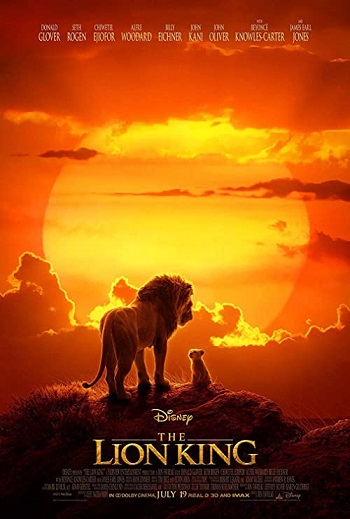
Our English world had its apex of hyper-normalization in the late 19th century, which made it easy to control autonomous minorities that had no formal representation in the British empire: American Natives, Asians, Africans, Jews, Germans, Italians, and so on. The Brits have always loved their hounds as long as the hounds obeyed the master, and that went wrong rather spectacularly in the early 20th century. The dogs broke loose and went feral and Germany became the wolf heaven against which National Socialism began to hyper-normalize. Fortunately for everybody, young Simba had been building a new pride in North America, and his hounds have prowled the global savannah for over a century now. The Italian mafia formed modern business (as Coppola volunteered in The Godfather, 1972). The Hebrew story tellers created Hollywood (An Empire of Their Own, 1988). And the Africans went from blues to hip hop with gangster rap as its most demonstrative canine inflection.
The most hated societies in humanity's history were those who were, for a relatively brief period, hyper-normalized and then came crashing down: the Roman Empire, the British Empire, Nazi Germany; all proverbial Babylonian Towers (Genesis 11:1). The downfall of hyper-normalization always comes in an inevitable counteraction of hyper-liberalization (Genesis 11:7, 12:1).
The most celebrated and beloved societies in human history were those who absorbed refugees from all over the region: the garbage collectors of the world, the strain on the drain of the human sewer, where all the washouts, rejects and riff-raff collected: Middle Bronze Age Arabia, Late Bronze Age Crete, Iron Age Israel, 5th century Post-Roman Britain and specifically post-11th century Scotland, 16th century Protestant Holland, and Industrial Age United States.
Too much normalization leads to cultural insolvency and ultimately a death of thirst (Jesus: John 19:28), but too much liberalization leads to soggy foundations and a death by drowning (Jonah: Jonah 1:15). The story of the Bible is like a pendulum that sways between two extremes of hyper-normalization, namely Egypt, the land of earthly matters and sunny days, and Babylon, the land of heavenly matters and starry skies. Most of the action in the Bible derives from the relation between a nightly-oriented minority in a daytime oriented land (summer), and a daytime oriented minority in a nightly-oriented land (winter).
A peaceful resolution is achieved when stars are recognized for what they are (Nehemiah 4:21, Genesis 15:5, Daniel 12:3, Matthew 2:2, note that Esther means "star"), and a heated polarization comes when the blistering sun is recognized for what it is (Genesis 18:1, Matthew 20:12). Uncertainly begins at sunset (Genesis 15:12, Nehemiah 4:21), and certainty at sunrise (Genesis 32:24, Psalm 130:6).
A humanity that is clever enough to rise above the earth might head for the sun and will perish in the eternal "lake of fire" of narcissistic hyper-normalization from which there is no escape (hence the crispy end of all those monarchs who identified with the sun). A humanity that wisely steers clear from hyper-narcissism may set sail into the Theory of Mind of an eternal ocean of stars and enjoy any length of day by touching down upon any other planet.
Natural law emphasizes a dynamic balance over static dominion, which is why God's law is embodied by a Lion in service of a Lamb (Revelation 5:5-6). The doomed myth of Survival of the Fittest (and thus hyper-normalization) is feline too but in literature depicted as a treacherous usurper lion or tiger (1 Peter 5:8) or even a reptile posturing as a lamb (Revelation 13:11).
The familiar story of the Lion King is the American version of the British Jungle Book, and explained that for the sake of the world, young Simba needs to stay true to the complete circle of life, or the hounds will sucker into the lure of the law of survival of the fittest once again and the world will be in very serious trouble. The British version too understood the acute danger of feral law (Kahn), was kind about the sloth bear (Baloo), not so much about the ape (Louis), and warned for the hypnotic stare of the ancient reptilian python (Kaa).
🔼Supercalifragilisticexpialidocious
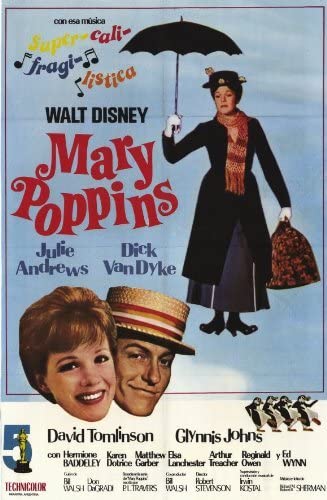
Since before the time of Saint Augustine's Confessions and The City of God, people have struggled to understand how a community of happy and prosperous adults may disintegrate to a point where gangs of locals fall upon their own neighbors, drag them into the streets to torture them to death while laughing and singing. The Romans did it to the People of the Way. The Germans did it to the Jews and Social Misfits of Europe, and it happened to everybody by everybody most recently during the mad collapse of Yugoslavia. In north America, the domestic persecutions of the natives, Asians, Africans and communists followed the same pattern.
As we've seen above, our culture at large tends to contemplate these events in images that hail back to the crucifixion of Jesus. The account of the crucifixion of Jesus in turn embodies the focal point of Jewish thought, but comes to us with a fatal wound of a typically pagan archetype. In the gospels this murderous archetype is told as the betrayal of Peter (Matthew 16:23, 26:34).
Jewish dogma holds to a resurrection of the body and a new life on earth (Revelation 14:1, 21:24). To Jews, the purification of mankind is brought about gradually over time by an accumulative progression of mankind's understanding of Natural Law. This idea stands in contrast to pagan thought, which lacks the dimension of time and foresees a sudden Judgment Day at the end, with good people going up to heaven and bad people going down to burn in hell. The great injustice of pagan thought is its failure to understand blockchain, which leaves only the alternative of a centralized rule. This in turn invites the absurd doctrine of the "right of kings", which asserts that God is an emperor and human kings are his vassals who rule in his obvious absence. This tempts paganism to attempt to master and overrule the decrees of the deity, from which come the observable processes of nature, and thus to aspire to supernatural magic.
The deadly wound of Roman Christianity is demonstrated by its insistence on telling the deity what to do. The original effect of Christianity's congress with Jewish thought is an accumulative progression of Judgment Day. The final result of this congress, however, is a state of deep contrition. And in between lies a long period of convalescence and introspection, an accumulative progression of mankind's understanding of its betrayal of natural law. Western culture tells the story of Santa with an increasing sense of guilt and bewilderment as it slowly discovers whom it has pierced.
Many an academic has attempted to explain why humanity keeps allowing Santa to return every winter, but never with such sympathy for the devil as that of the 1964 Disney children's musical Mary Poppins. This film shows how a mere change of "wind" allows the vilest of spirits to assume the appearance of a chipper nanny who volunteers to sort out a banking house. The nanny starts out dispensing order, joy and wisdom, and helps this medicine go down with a spoonful of sugar, which obviously relates to the nanny's "make-belief" or "fiat" that ultimately ferments and results in dementia and delirium. In the wake of a banking crisis, the white sugar turns to black soot and the lovely nanny becomes the gleeful overseer of a holocaust.
With their famous Invisible Gorilla experiment, Chabris and Simons showed that when an average observer trains her gaze to follow a ball that's passed between players on a screen, she is unlikely to notice a dude in a gorilla suit stepping into the picture and strolling among the players. Likewise, audiences have gaped at Mary Poppins for more than half a century without noticing that it tells of the first five decades of the twentieth century. Hitler, or so Disney seems to say, was once as enticing as Mary Poppins. We all believed him, and so would you have. You would have delighted and danced and sang along with songs you didn't really understand just like the rest of us.
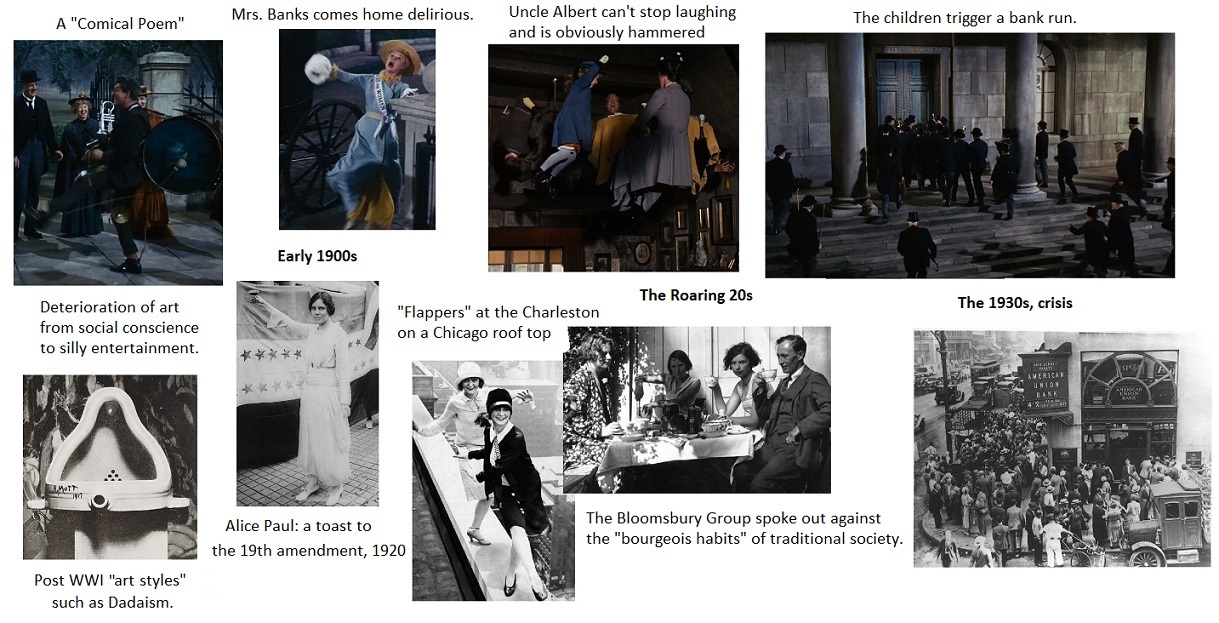

According to the films titular character, the magic spell supercalifragilisticexpialidocious, which already existed when P. L. Travers incorporated it in her book in the 1930s, describes one's feelings when one wins a race and explains: "Even though the sound of it is something quite atrocious, if you say it loud enough you'll always sound precocious." It must have done so at the time. It's an Anglicized scriptio continua of familiar Latin words:
- Super, above all, exceeding all, covering all; über alles.
- Calidus, hot, which comes from calor, heat, hence our English word "calorie". These words also relate to the name Caligula, which refers to a soldier's boot. The concepts of heat, pressure, anger and military engagement are closely related in classical literature, for obvious reasons. Add to this the common observation that a sick person often heals after a period of fever. Fever occurs when the body is infected and tries to burn out its contaminants.
- Fragilitas, fragility, the reason of weakness. This word comes from the verb frango, to violently break into pieces, to dash or shatter. The English word "fragile" literally means "easily broken", "fragment" describes a piece broken off, and a "fracture" is something that has broken. The noun fragor describes the loud crash of something being broken to pieces. In antiquity, perfumes were made from grinding flowers into pulp, and the word "fragrance" literally refers to a treasure extracted from breaking the container. Wine is made in the same way as perfume, but from grapes.
- Ex, out of, and per, through the midst of, hence our word "pierce". Together these particles form words like "expert", "experiment" and "experience", but also "expire". The Latin verb expergo, means to awaken, and expertio means a trial. By far the most commonly used words made from our particles are the verb experior, to try or test, and the adjective expers, to have no part in, not sharing in. This group of words is intimately connected to the scientific process and speaks of the removal of unwanted or failed elements. Science calls this falsification. In Christian terms these words are about sending rejects to hell.
- Doceo, to cause to know, to teach. This verb is the source of our words "doctor" (one who knows or one who teaches), "docile" (easily taught, quick to learn), and "doctrine" (a thing taught). This verb doceo itself comes from decere, to be pleasant or fitting, hence our word "decorum". If doctrine isn't based on natural law, it's inevitably based on fashion and form. A society whose norms and values don't derive from natural law but are synthetic, reckons natural law as subversive, seditious and ridiculously ugly (Isaiah 53:2-3). The further away from natural law the fashions of a society drift, the drunker society becomes and the greater a mist of opposing subversives arises (hence too the Knights who say ni, and the new sheriff being a ni). That too is natural law.
The phrase supercalifragilisticexpialidocious declares the dark resolution posed by the proposition of "Survival of the Fittest". It means "Extermination of the Misfits".
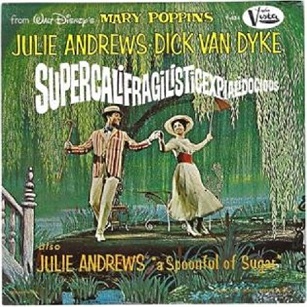
The film Mary Poppins contemplates the paradoxical problem of benevolent finance. It's shaped like a sonnet and consists of two main acts that are separated by a sudden declaration of reversal. At that point of reversal, the financial infidelity of Michael, heir to the banking house, triggers a bank run and near collapse of the financial order. Just prior to the crisis, Mary Poppins disapprovingly participated in synthetic joy but would certainly not be sacked, and wouldn't let her children be sacked either, not even young Michael as he crept ostentatiously under Mary's carpet bag (the term "carpet-bagger" is a post-civil war term denoting the meddling of the victor in the ways of the vanquished).
Prior to the crisis in the bank, Bert was a musician and visual artist, and it's he who first began to tell the story of his beloved Mary Poppins. After the crisis, Bert is a blackface Pete who finds the children unraveled on the docks. Michael tries his hand on chimney sweeping but is sucked in. Fortunately, Mary pops up too and heads a procession ever further up, even up a stairway to heaven made of solid chimney soot. The Black Petes dance and sing manically as they keep the chimneys going.
But what are they burning? Young Michael and Jane watch in delight as the Petes incinerate what can only be those who lacked a nanny as fine as Mary, who supervises the proceedings dressed in Santa's signature red. The mayhem culminates in the fireworks of a thinly disguised war, which in turn leads into a Black Pete invasion of the Banks' home, the sacking of Mister Banks, and ultimately the death by intoxication of the Bank's Imperial Overlord — with convenient visual references to The Birth of a Nation, 1915.
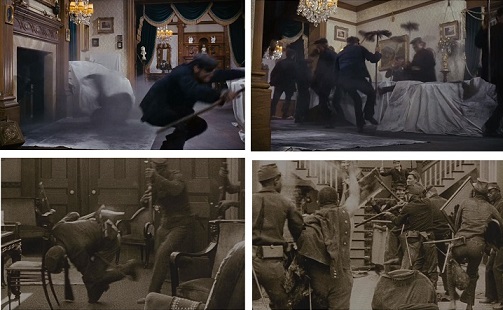
(Line from Mary Poppins, top.)
Entirely void of inherent energy to come up with a happy ending, Mister Banks is saved by an ex-machina reference to the American Revolution, and soon all the liberated Banks and their children fly green kites over a brave new world.
🔼The Jewish Problem
Commentators who struggle to explain anti-Semitism routinely fail to identify the single most important divisor between Jews and non-Jews, namely the Sabbath (Exodus 20:2, 20:11). Years, months and days are natural phenomena but the week has no cosmological significance but rather every appearance of an artificial construct. The Jews have managed to make the entire world heed their week, but paid for it with lasting scorn. Today most anti-Semites don't even consciously know why they hate Jews because while everybody agrees that the weekend is a wonderful invention, adopting it left society with deep trauma and existential angst.
In the ancient world there was no such thing as a day off. Life was just life and interrupting it for no obvious reason made no sense whatsoever. A day off was not at all a vacation. It took much more energy and effort to interrupt life's routines at arbitrary intervals than to simply follow the natural cycles. Counting days in groups of seven made no logic sense, and then letting slaves and even animals loaf about for one whole day was not only wasteful, it also threatened the social order and ultimately people's collective identity.
Humankind has been around for at least 300 millennia; Jews for only 3, which makes the latter a little wooden boy in the workshop of a very old carpenter. This boy, just like anybody or anything else, is unable to choose its nature and only able to choose to embrace it. Not keeping the Sabbath was a threat to the Jewish identity, and Jewishness did not, as is often thought, originate as a religion but rather as an identity rooted in the desire to be free and to live, and thus to rise above fate and animal nature and natural cycles, and ultimately even death. The week was deliberately artificial and as such the first step in escaping natural bondage, which includes death (Ephesians 2:1), but it gave the naturals something to get upset about.

Utterly inconvenient, non-Jews had no way of telling whether it was Sabbath or not, unless they somehow kept track of the days, which nobody did because it served no purpose and had nothing to do with observable reality. Non-Jewish rulers insisted on economic continuity, and interpreted the Sabbath as systematic defiance. Farmers who had to react to weather conditions couldn't depend on Jewish field hands. Ordinary folks might travel a day to reach a Jewish doctor or a merchant or perhaps someone who rented horses or farm equipment, but if the day happened to be a Sabbath, all deals were off, shops were closed and business was on hold. And if the customer was really unlucky, the Jews were having any of their many annual feasts, which could go on for a whole week. And all this inconvenience and interruption came for no reason that made any sense, and was indistinguishable from willful provocation.
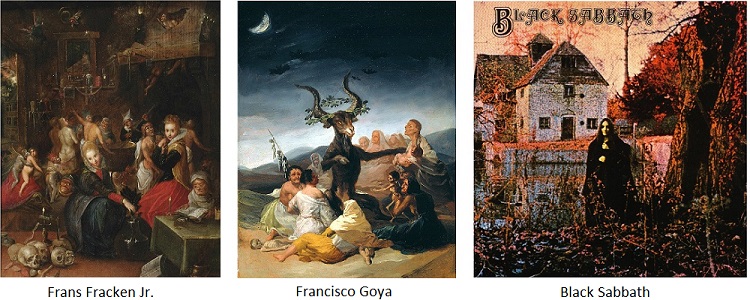
Particularly when Jews were a minority, the rest of the world felt that the Jews should adjust to them rather than the other way around, but the Jews wouldn't budge and if the world wanted Jewish services, the world would have to adopt their week. And so they did. But they also decided that Sunday was a far better day for Sabbath than Saturday, and the whole trouble began again. The Jewish minority wouldn't work on the day before everybody's day off, and were open for business when their customers were expected in church.
The term "Jewish Problem" was coined in 17th century England, around the same time the English had their "Puritan Problem". To the general population back then, the word "Jew" did not refer to a specific race (people didn't know about genes yet) or nation (Jews didn't have one) or religion (all non-Christians were heathens). Back then, the word "Jew" was used as generically as the word "gypsy" is today, and meant rather the same thing.
The familiar word "gypsy" may have romantic overtones in the United States, in modern Europe it relates mostly to the Romany, who originated in India and whose culture has strong Hindi elements that are alien to white Europeans. That caused the word "gypsy" to be applied to anybody who failed to adhere to the social norms of the white community, and evolved to include any dubious stranger, enchanter, trickster, unmannered or overly exuberant individual. What few people realize, however, is that the word "gypsy" is short for "Egyptian" and originally specifically described a refugee perceived to have come from Egypt.
In Titus 1:12 Paul likewise speaks of Cretans as "perpetual liars, evil beasts and lazy gluttons," which isn't very politically correct until we consider words like "cretin" or "secret" or "secrete" or even "crime" and "crisis" that all stem from the proto-Indo-European root "krei," to sieve or discriminate against. This suggests that the word "Cretan" was used as a generally derogatory name for the underclass, and that Paul leaving Titus in Crete is a literary parallel of YHWH leaving Elijah at the brook Cherith (1 Kings 17:3-5). The names Crete and Cherith are clearly alike and both appear to relate to the verb כרת (karat), to round up and cut off.
In 17th century England the term "Jew" was likewise indicative of an entire social class, namely the class of people that had, for whatever reason, trouble fitting in and were usually poor and poorly mannered and thus easily perceived as uncooperative and willingly contrary. It applied to a people that have existed forever, who are not even necessarily related but who in times of crisis are corralled together and collectively driven out. They were then what Cretans were in antiquity and "refugees" or "asylum-seekers" are today. The very fact that our world has found itself with a "Refugee Problem" is a leading indicator of much greater trouble to come.
Contrary to Romantic assumption, poor people very rarely enjoy being poor and usually try very hard to rise above the poverty line. Autistic people (and we at Abarim Publications speak with some authority here) don't enjoy lagging in the social graces and hate it when people think they are deliberately clunky and unmannered. Refugees don't enjoy living in asylum-seeker centers and people of a Jewish or Gypsy tradition don't prefer to live in a ghetto or a camp by the river, but commonly try very hard to find a way to be accepted by society at large.
🔼The Valley of the Shadow of Death
What normal people don't understand is that being normal is incredibly complicated for people who aren't. To poor people, the obvious rules of supply and demand are like the rules of rocket science. To autistic people, complying with simple manners and courtesies is like coming up with Romeo and Juliet. When a person's most intimate personal identity derives from many centuries of Jewish tradition, trying to blend into a Protestant world, where everything seems void of care, sense and clarity, is like learning another language. That person can learn all the words and grammar but she will always speak with an accent that gives away her foreignness. Foreign language teachers often observe that students in their desperation will try to compensate for their embarrassing accent by learning long lists of unusual words by heart. But the only effect this has is that native speakers will now notice even more discrepancy and foreignness. This leads to a broadening of what is commonly referred to as the "uncanny valley."
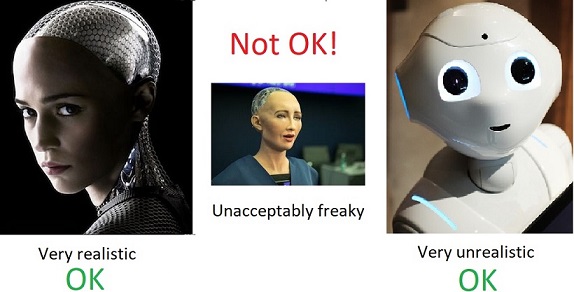
An image of a face is either (a) very realistic, (b) obviously not realistic, or (c) somewhere in the middle. And that's the uncanny valley: knowing something is off, but not exactly what, or why. And this works not only with images, also with sounds and smells and obviously also with real people we see. It's all about recognizing the in-crowd; the people we know, who we have invested in and who have invested in us; the folks we are safe with. The out-crowd are easily identified and kept out when we can confidently recognize their foreignness. But those who occupy the uncanny valley generate doubt and distrust, and fill an observer with the fear of ending up under threat of either the invasion of dangerous outsiders or else demonstrating the failure of being able to recognize fellow insiders. This may not seem like much of a threat but it's how insiders are recognized: the ability to recognize one another. A failure to do so identifies the observer as an outsider. Seeing someone from the uncanny valley tests one's own belonging, or sanity, and that's a very big deal, which is why groups of insecure teenagers commence to laughing, howling and pointing when they see, hear or smell something funny.
The "uncanny valley" is where cheaters, pretenders and scammers hang out. These are people of the "them" category, who deliberately disguise their true identity in order to infiltrate "us". And it also covers the people who were once "us" but somehow slid out. Those may be brothers who descended into crime and abuse, but those may also be brothers who have attracted some disfiguring disease, like leprosy.
The "uncanny valley" protects a society or an individual from a harmful intrusion and is part of the organism's immune system. This is the reason why neurotypicals feel a reflex of revolt when they see an image of a disfigured face: it's their mind throwing up. Doctors don't have that reflex because they can recognize why someone's face is disfigured. Language teachers don't have that reflex either because they know why their students sound funny. But the rest does, and this is where the cinematic effect of "body horror" comes from, and it's also why in movies that are intended for younger audiences, bad guys commonly have accents.
The "uncanny valley" is a place of revolt, horror and rejection, but what most normal people don't realize is that abnormal people have to cross that valley every time they need to get into town, to buy food or visit a doctor. The "Jewish Problem" is not only considered by Nazis and Romans but much more so by the Jews themselves. People who find themselves on the fringe of society and try to get back in as a matter of their own survival, those people end up being experts in formalizing the natural instincts of their society.
And that results in the curious truth that the wildlings know the city better than the city does itself. Or in the words of Isaiah: "with foreign lips and strange tongues God will speak to this people" (Isaiah 28:11). It also means that the city we call science is surrounded by a wilderness in which people know way more, but have no real way of telling. But they also have no real way of hiding what they know, which results in clear traces of "impossible" knowledge in works of art from people like Moses and Muhammad to Leonardo da Vinci and Michelangelo.
To a normal person, the "Jewish Problem" is the problem of how to get rid of pesky non-conformers in society. To a Jew, however, the "Jewish Problem" refers to the problem of how to serve a society that is unaware of its own inner workings. This results in the fringe of society becoming a mirror of society. And when two people look in a mirror and don't like what they see, the person with Theory of Mind will try to alter herself, whereas the person without Theory of Mind will try to destroy the mirror.
🔼A mirror dimly
The main difference between Jewish storytelling and Gentile storytelling is that only Gentiles have "others". In a Gentile story the players are clearly separated into good guys and bad guys, the conflict always comes from without the community, and the resolution in the subdual of the alien. In a Jewish story the problem arises from within the community, and even when an alien lands from outer space (ET, 1982), the resulting conflict is within "us" (children versus parents, in the case of ET). Being in Christ means that you are sovereign responsible for your own life only, and Jews tell stories of internal conflict, introspection and internal resolution that apply to the whole of society.
The most urgent task of any mirror is to teach Theory of Mind to what it reflects. If the fringe people don't succeed in doing that before society begins to recognize an identity in the fringe, the fringe will suffer a holocaust. If the fringe people do succeed in teaching society Theory of Mind, society is enriched with speech, script, a postal service and the blessings of allegory. The "Final Solution" that the fringe people have come up with, long ago, is to teach their society humor and entertainment.
When a baby begins to make out an image that it doesn't like, it begins to cry. If it likes the image, it will laugh. These differing reactions to an unknown image are one in the animal world, which is why dogs and apes show their teeth when they are scared. Laughter evolved from ripping a stranger to bits (assault) to barking at someone (fear) to laughing at someone (mockery) to laughing with someone (humor). The first step toward appreciating otherness as benevolent is to teach people to laugh at a novelty or departure from the norm. The name of Abraham's son who bore the promise, was Isaac, which means He Will Cause Laughter. For eons the fringe has survived by being entertaining, and it's still the best approach for any new industry. The first movie stars — Charlie Chaplin, Laurel and Hardy, Buster Keaton — were comics who portrayed outcasts and bums and their hilarious frictions with society.
If the fringe is successful, society will be like giggling sheep and the fringe will be its shepherd and lead it willingly to green pastures. If the fringe fails, the fringe will be a silent lamb and society will be like snarling wolves that overwhelm the fringe and eat its flesh and drink its blood. False leaders are never funny. True leaders always are.
A primitive proto-prokaryotic society has its fringe people on its outer periphery, and it dies and dries up if it rejects its fringe. A eukaryotic society has its fringe people not on its periphery but in its nucleus as its most appreciated class. A eukaryote's priestly elite disintegrates when the priestly information technology begins to fail. This failure results in the loss of a common standard, and society will either revert to a more primitive prokaryotic identity, or the nucleus is replaced by an elite that has an information technology that is consistent.
The meditation on the working structure of society became in ancient times associated with a game that appears to have originated in China and evolved into the modern deck of cards. The four different suits appear to represent the four corners of the earth (or perhaps rather disciplines of the mind; art, science, literature, and so on), with each their own law (ace), king, queen (the senate), jack (the barony; landlords and business owners) and the have-nots of various ranks from higher management down to the lowest working class. As in the real world, the deck is not the game but only the tool with which a broad spectrum of games can be played. The joker, however, is a modern invention and was born during the American civil war.
The signature definition of the joker is that of a professional clown, but in actuality the joker is uniquely without suit, which means that he's not tied to a single court, function or corner of the world. The joker doesn't even have a defined value or rank and in some games he may take on the identity of any of the other cards, from king to lowly deuce and anything in between. And of any which color. And that definition, as elusive and vague as it is, gave rise to one of the most iconic literary characters in modern narrative: the Joker.

In a world where a wealthy American playboy may assume a superhero alter-ego in the form of an animal known for being a vampire, the joker quickly becomes our hero's arch enemy (Batman, 1939, the Joker 1940). Batman, as few seem to realize, dominates Gotham through superior funding that came from inherited wealth, superior technology that was somehow appropriated by perhaps the always available servant class, and superior and generously dispensed violence. Bad guys are guys who Batman personally doesn't like and things like rule of common law, a careful examination of measurable facts, legal defense, a jury of peers and other elements of jurisprudence are deeply beneath him. But this is probably why an unending supply of shady characters gravitates toward Gotham, the Joker gets ever crazier and the garbage piles up to staggering heights.

When an affluent society begins to thrive in a world defined by scarcity, it easily develops a phobic aversion to frugality, and an underappreciation of the waste management class, which is formed from folks who thrive on the residues of yesterday's old and busted surplus rather than today's new hotness. The fear of parsimony combined with poorly functioning drainage leads to visions of demonic clowns that live in the sewer and go by the name Pennywise (Stephen King's It, 1986).
Andy Dufrene, on the other hand, crawled through a river of shit and came out clean on the other side (Stephen King's The Shawshank Redemption, 1994). Brandon, in the midst of his mission to save fiction from reality, was made to take out the trash by his mother (Galaxy Quest, 1999). The exact same concern brought John Nash in conversation with the garbage men (A Beautiful Mind, 2001). Likewise, Ally Campano was made to take out the trash before her romantic rebirth could start (A Star Is Born, 2018). The garbage truck of secret agent Hellboy was based on the same idea (Hellboy, 2004), but unlike It, which embraced the ever popular wholesale Endlösung, the story of Hellboy meditated on the demon's involuntary origin, possible benevolence, its humanity and even its relatable emotional needs (hence also the sympathetic Yevgraf in Doctor Zhivago, 1965).
The single most repeated command in the Bible is to have no fear (Genesis 15:1, Zechariah 8:13, Matthew 10:28, Revelation 2:10). That is not an invitation to ignore a perfectly useful instinct, but rather to organize one's society in such a way that there is no danger, and to learn to laugh rather than to destroy. When a danger is perceived, a polytheist will attack what he fears whereas a monotheist will scrutinize it and find a way to respect it and engage it and ultimately to receive it as a fellow creature in the grand scheme of things (Matthew 5:44, Revelation 1:17).
A polytheist story is always based on the idea that there are bad guys who are ultimately demons who desire to kill us good guys. A monotheist story is always based on the idea that everything that creation contains was first contained by the Creator. To a monotheist, evil comes from a disturbed balance within creation, not from an intrinsically evil element of creation. To a monotheist, something scary teaches something about the concerns of the Creator, whereas to a polytheist, something scary teaches something about the nature of the devil. By assuming the existence of an evil anti-god, a polytheist becomes ever more like the devil he tries to defeat. By assuming nothing other than one Creator, a monotheist becomes ever more like the Creator he seeks to embrace.

🔼A double helix
In 1965, the year after Mary Poppins was released, a Jewish version of the same story came out, starring the same Julie Andrews in the same role of Mary (or Maria) toting the same carpet bag. This Jewish version was called The Sound of Music. The Black Petes were now Catholic nuns, who sang: "How do you solve a problem like Maria? How do you catch a cloud and pin it down?" The nuns were obviously contemplating the "Jewish Problem" but not with the intend to slay Maria but to utilize her for the mirror she was.

P. L. Travers reflected on the "Jewish Problem" using hardly disguised images from a Roman Bacchanal and its inebriated Liber Pater (Father Freedom). Its "Final Solution" was to identify and burn the social infection and bulldoze over the "uncanny valley" all together. The Sound of Music contemplated the same "Jewish Problem" but now from the perspective of the Jews, and reflected on it in terms of the Jewish Feast of the Passover; the Feast that ultimately culminated in the Exodus (meaning the Way Out).
Maria's game of imagination with the children now inspired them to list their favorite things. The white snow of Poppins' sugar marked now the tops of the mountains of the nations, which in turn formed the staircase to heaven for the Von Trapps. The more important snow was the Manna of the children's music and the real Stairway to Heaven was first the musical scale (or "tone ladder") and then the family itself: Von Trapp means Of The Stairway. But since this film was intended for an English speaking audience, Von Trapp also refers to a society that escaped the Santa trap: the sweet lure of wealth and luxury for the price of one's soul — in the Sound of Music, the role of Santa is played by the high-blond red-dressed baroness:
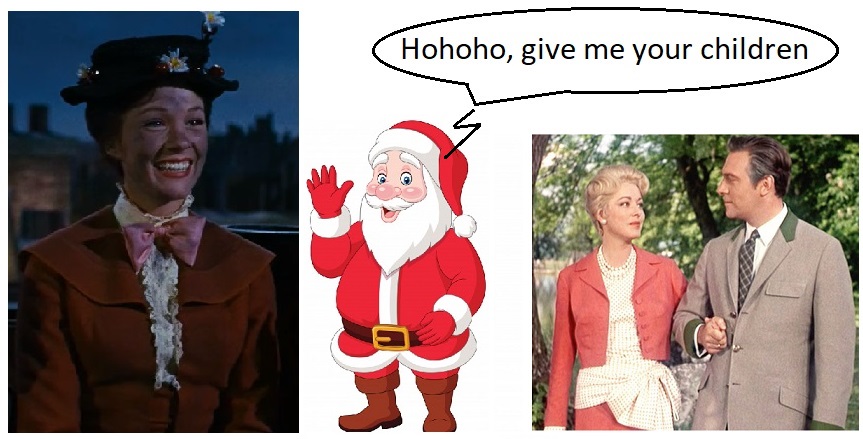
In 1991, Stephen Spielberg directed Hook, which likewise offered a revolutionary perspective on the Peter Panic archetype. Hook is a meditation on the origin of the pirate captain rather than the acts of Peter. Only when Peter reviews Hook's relation to Peter's son, Jack, he realizes that his own failure to take his children under his wing has given rise to his enemy. Peter's battle with the captain is depicted as an internal struggle. This time, Peter wins from Hook not by strength but by weakness, not by bragging about his achievements but by confessing his failure.
In May 1998, Paramount and DreamWorks published Deep Impact, a movie about an incoming global-killer meteor whose path is first discovered by a child scientist named Leo. When the general population finally finds out about the meteor, humanity's governments and industry are well under way to try lessen the meteor's blow. Ultimately the impact is not averted but endured, and humanity rebuilds itself from the ruins. In July 1998, Touchstone and Disney produced Armageddon, a movie likewise about an incoming global-killer meteor whose path is successfully averted by a trinity of human government, human industry and human demigods, spiced with unnaturally careless self-sacrifice and musical bravado.
The conversation between Jesus and Peter continued in the conversation between medieval Jewry and Christianity and has now become the conversation between Jewish movies and Gentile movies. This cosmic conversation between these massive productions causes ripples on the surface of human culture (independent reviews and responses), which show humanity's concern or even awareness of the issues discussed. This mechanism is a very precise probe of humanity's core temperature, and is read on scales of approval percentiles on review aggregates.
In September 1998, DreamWorks produced Ant-Z, about an ant whose society is forced to introspect and heal from an internal conflict. That same year, Disney produced A Bug's Life, in which an insect confederacy of good-guys must withstand an attack from external bad-guys.
In 2006, The Illusionist reviewed the rise of late 19th century stage magicians in Gentile terms. That same year, The Prestige told the same story in Jewish terms. The films were equally well received.
In 2008, Paramount produced The Curious Case of Benjamin Button, which appears to have been the first major attempt to discuss a dynamic union of both perspectives, but still in mostly Jewish terms. It received 13 Oscar nominations, and took home 3. The film was based on a story from 1922 by F. Scott Fitzgerald, which tapped into a much older literary structure from which also derived stories like The Incredible Shrinking Man (1957).
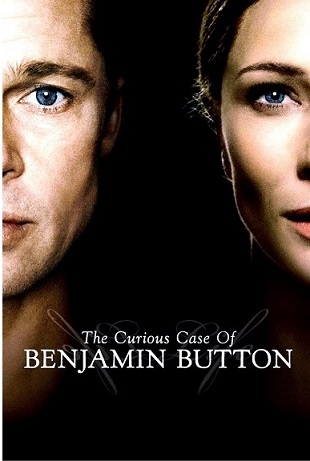
In 2009, the European company Wild Bunch gave the world Mr. Nobody, which was a sympathetic reply to Benjamin Button but failed to recognize the principle of polar reversal, and appears to have been only an unintentional inversion of the Highlander premise (the first told of the last mortal, the last of the final immortal).
🔼E pluribus unum
The movie Highlander (1986) tells of warring earthling immortals of which there could "be only one". As in Star Wars (1977), swords are wisdoms (Ephesians 6:17, Revelation 19:15) and sword fights are battles of wit (Exodus 7:11, Daniel 1:20). The fact that the immortal Connor MacLeod originated as a mortal in the Highlands of Scotland was not a mere excuse to include sweeping vistas in the movie. And the earthling mortals that go about clashing their swords are not fiction. They are very real indeed.
The name Connor means "lover of canines" and MacLeod means "son of the ugly [outcast]". Connor MacLeod's arch-enemy is a Kurgan named Victor — and there's that name again; it's the Latin equivalent of the Greek name Nick or Nickolas.
In the 1950s, the anthropologist Marija Gimbutas first formulated the so-called Kurgan hypothesis that aimed to explain the origin and spread of the proto-Indo-European language. Proto-Indo-European is the common ancestor of languages such as Sanskrit, Persian, Greek, Latin and thus all southern European Latin derivatives, Germanic and thus all northern European derivatives, and finally English, which is a unique hybrid braid of Latin and Germanic strands (and a spritz of Old Norse).
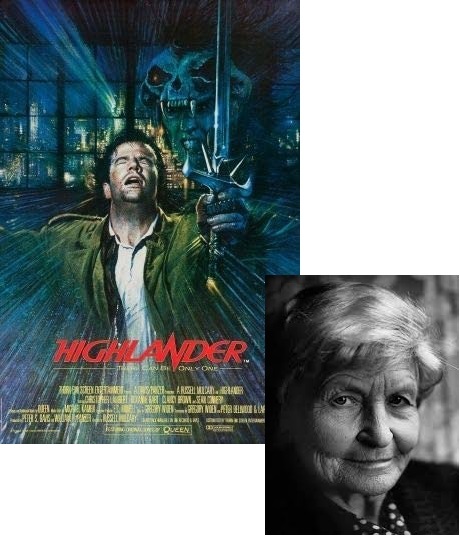
If a people dies, its language dies, its stories die and if the people didn't leave a library, the meta-information (the natural patterns that nobody willingly put there) that was stored in the stories will be deleted from human record. Connor MacLeod was a Gael, a Celtic son, and has been fighting the Kurgan since the invasion of the Romans. Hadrian's wall is a scar from that battle. The movie's character Brenda Wyatt, an expert in metallurgy and ancient "swords," is Marija Gimbutas.
From reconstructions of the language, scholars have concluded that the proto-Indo-Europeans were patriarchal, patrilineal and patrilocal, meaning that the bride left her family and moved in with her husband's. That meant that the men had far stronger social support structures and the wives were all first generation immigrants. That in turn gave masculine traits such as individualism, exclusivity and competition a far greater cultural importance than sensitivity to society, inclusivity and cooperation. The Hebrews, and like-minded peoples, were matrilocal, and lived in societies whose superstructure was feminine (Genesis 2:24).
Proto-Indo-European society consisted of three classes: farmers, priests and warriors. The latter group strongly associated with wolves or dogs. Farming was still dominated by pastoral nomads, but people had begun to settle down in villages, which promoted agriculture. Late in the agricultural revolution, many societies began to focus on large cities, which required crop farming and sedentary animal husbandry to feed the citizens. The price for this was the broad array of zoonotic diseases that still plague us today (anthrax, influenza, Ebola, leprosy, tuberculosis).
Neolithic pastoral nomadism basically channeled the natural behavior of large herds, which grazed a field but simultaneously fertilized it by defecating on it, and then gave the field the opportunity to recuperate by moving on. Pastoral nomadism promoted the domestication of the dog, which was already a reject from the world of wolves but which learned to understand man's heart better than the man did. The Hebrew word for dog is כלב (keleb), which indistinguishable from a combination of the particle כ (ke), "as if" or "like", and the noun לב (leb), heart.
Crop farming, on the other hand, proved a perpetual battle against the forces of nature. Fields had to be plowed. Seed, seedlings and sprouts had to be protected from predators, and the field had to be shielded from the ingress of unwanted weeds. The mature harvest had to be guarded from human or animal thieves. Crop farming required the invention of property rights and land owning, which led to the rise of nobility. It resulted in a loss of natural biodiversity and over time vast areas of exhausted lands and ultimately wide-scale desertification. Crop farming reduced the diversity of what people ate, which caused malnutrition, and the many repetitive motions that are associated to the processing of grains gave rise to chronic joint problems and skeletal deformations. Crop farming also necessitated unnaturally large accumulations of seeds, which in turn invited rodents to assume a life style of urban bliss. This in turn promoted the domestication of cats.
In the Bible the dialogue between crop farming and pastoral husbandry is told as the relationship between Cain (crops) and Abel (cattle). While Abel's offering was accepted by YHWH, Cain's offering wasn't (Genesis 4:3-5). But obviously Can killed Abel and modern farming is mixed but wholly sedentary. Cain also built the first city (Genesis 4:17) and his lineage ran up to the modern industrial age of iron works and a global economy (Tubal-cain), complete with meat-industry and housing (Jabal), musical entertainment (Jubal), and norms and fashion (Naamah). The third son of Adam and Eve was called Seth, who represents humanity's formalization of natural law (Genesis 4:26: "Then men began to call upon the name of YHWH"). The entire rest of the Bible tells of Seth's lineage and only Seth's lineage. The generation of Noah provides an event horizon from which the world of Cain cannot escape, and the rest of the Bible tells exclusively of the evolution of mankind's mastery of natural law.
In the film, the patriarchal Kurgan clearly doesn't think much of people's wives and the suggestion is made that the proto-Indo-European language basin was really a diseased abyss in which a plague of masculinity targeted and wiped out sustained femininity (which is a situation also contemplated in Light of My Life, 2019). A case could be made that it's ultimately this plague that gives empires their strength, and that it's this struggle that sits at the heart of any popular resistance to empire. Or in the words of Sol Robeson: "Listen to your wife, Max! [instead of the lady and her husband next door]" (Pi, 1998).
Roman historians tell of a Celtic Queen named Boudicca, whom the Romans flogged and whose daughters they raped. In 60 CE, while the Great Jewish Revolt was brewing in the Middle East and while the Roman governor of Britain, general Suetonius, was busy besieging a stronghold of druids and refugees on the Welsh island of Anglesey, Queen Boudicca rallied her troops and staged a revolt that culminated in a battle that centered on Londinium (modern day London). The Queen won, and 75,000 Romans and collaborators were tortured and killed. Emperor Nero considered pulling the Romans out of Britain, but Suetonius collected and reinforced his troops and managed to defeat the Queen. Her soldiers and their families were massacred and Britain became irrevocably Latin.
After his first encounter with the Kurgan, Connor is driven out of his village and begins to work as a "blacksmith" (see 1 Samuel 13:19). One day a flamboyant foreigner of many talents named Juan Sanchez Villa-Lobos Ramirez shows up. Ramirez tells Connor the story of the immortals and begins to instruct and train Connor. He also reveals that he originated in Egypt in 896 BCE, which was when the Bronze Age Collapse bottomed in the Middle East. By the time of the Reformation, Ramirez took his Spanish name while working in Spain as a "metallurgist" under Charles the Fifth, king of the Holy Roman Empire that included uppity Holland in the north.
The term Sanchez Villa-Lobos obviously refers to the temple turned "den of robbers" (Matthew 21:12, see Isaiah 56:7 and Jeremiah 7:11). The name Ramirez is a Latinized version of an ancient German term ragin mari and means son of "good counsel" or "good spell" or "gospel." In the film, the character Ramirez is gypsy [loosely "from Egypt"] and possibly represents an African or Semitic language, which came to Spain with the Moorish incursion in the 8th century and remained there until the Muslims were driven out in the 16th century.
In 2001, Arthur Herman, Ph.D. published How the Scots Invented the Modern World — The True Story of How Western Europe's Poorest Nation Created Our World & Everything in It, in which he reviewed the curious dominance of Scotts in the formation of modern science, education, statecraft and even literature. That is until the Scottish school was sidetracked by the rise of the "German university ideal, which stressed rigorous research and professional specialization." The Scottish school of thought, which was dominant in the Western world until the late 19th century, rather stressed "the notion of a fundamental unity of knowledge" (quotes from Chapter Fourteen).
Six years later, Elizabeth Caldwell Hirshman, Ph.D. and Donald N. Yates, Ph.D. shocked the academic world with their compelling conclusion that since the 11th century, Scotland had steadily absorbed Jewish immigrants and over the centuries transformed to the point where the Scottish national character and government (including Presbyterianism) were essentially Jewish (When Scotland was Jewish — DNA evidence, Archeology, Analysis of Migrations, and Public and Family Records Show Twelfth Century Semitic Roots, 2007).

Starting in the 1840's, the Balkan countries began to preserve their legacies by transliterating their language and libraries from Cyrillic to the much wider accepted currency of Latin script. Likewise, the Hebrew Scriptures we have today are not written in original Hebrew letters but Aramaic block letters. This is the same linguistic mechanism that gave rise to the legend of the Magdalene who escaped to France pregnant with the child of Jesus.
Both the finale of Highlander and that of Braveheart (1995) indicate that the English language we speak today is not simply a hybrid of Latin and Germanic strands, but is from deep within governed by a Gaelic or even Jewish heart. The famous stories of king Arthur and his sword Excalibur portray the same concerns as are captured in the Bible; they are about the making of language and the formation of a cohesive people based on congress and conversation.
🔼The Lady of the Lake
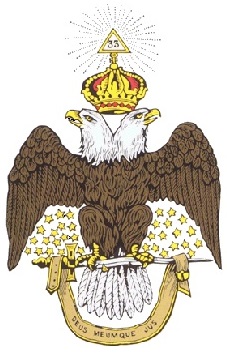
A well-known public secret of our modern Western world is that beside our formal governments there is a shadowy fraternity that bundles the independent talents of very successful men and thus regulates the affairs of man at an international level. This international fraternity is not globally centralized but exists in independent lodges (or in Greek: synagogues), rather like the federated clans of Scotland whose broad local economies were centralized on their own castles. This fraternity goes by the name of the Ancient and Accepted Scottish Rite of Freemasonry, and operates world-wide much alike the way of the Druids in the Celtic realm: with ranks bestowed on men of proven abilities rather than formal office and a globally accepted code of conduct that stems from fluency in publicly displayed symbolism rather than secret deals, privilege or entitlement.
The capital of the state of New York was named for the Duke of Albany but after Alba, the Gaelic name for Scotland which means "white" and which is obviously related to Albion, the original name of Britain. These names are also closely related to the word "albino," which helps explain the character of Silas the albino in The Da Vinci Code (2003). This same Gaelic root — or is it Hebrew, namely לבן (laben), meaning white? — gave rise to the name of the Albani, an Illyrian tribe that ultimately rendered its name to modern Albania. This is not as far-fetched as it may seem. The name Galatia, which was located in modern Turkey, means Land Of The Gaul, and thanks its name to Celtic invaders from northern Europe of the 3rd century BCE (whose neighbors, the Angles, would give their name to England in the 5th century CE).
A Latin-speaker might be forgiven to link the name Galatia to the common word gala, meaning milk, hence our word "galaxy" meaning Milky Way. It also seems related to the word gallus, meaning rooster, which was the animal whose triple crow confirmed Peter's betrayal (Matthew 26:34). The Gaul were clearly on to something but seem to have lost sight of it, as Paul famously asked them, "You foolish Galatians, who has bewitched you, before whose eyes Jesus Christ was publicly portrayed as crucified?" (Galatians 3:1).
The emblem of the Scottish Rite is a double headed eagle. This creature doesn't exist in observable reality but its depiction stems from deep antiquity; the oldest surviving specimen are Hittite (modern Turkey). The image of the double headed eagle was abandoned in the Iron Age but was revived in late medieval times to signify the Eastern Roman Empire. Today it features prominently in the national symbols of Russia, Albania and Serbia (Belgrade means White Fortress and was also known as Alba Graeca or Alba Bulgarica), and is in some way or form incorporated in the heraldry of most European countries.
The obvious meaning of the double headed eagle is legislative vigilance in all directions and governance that incorporates all perspectives. Note that in antiquity mythical creatures that in stories were endowed with a great many heads (like Cerberus) were in visual art commonly stylized as having a mere two heads. In visual renderings, "two heads" means "multiple heads" rather than merely "dual heads". The double headed eagle signifies a senatorial government endowed with Theory of Mind, as opposed to a single headed eagle (or lion) that signifies the monarchal government of a single minded tyrant (which also explains the absence of the double-headed eagle during pre-split Roman Imperial times).
After destroying Troy (a city in modern Turkey), Odysseus went on a trek and during that trek he famously slayed a Cyclops by piercing his eye. Technically, the word κυκλωψ (kuklops) comes from the verb κλεπτω (klepto), to steal, plus a lost word for cattle, and means cattle thief. But playful poets obviously relate it to the familiar noun κυκλος (kuklos), meaning circle — hence the name Ku Klux Klan, and thus, of course, the Kit Kat Klub (Cabaret, 1966), and the Circle-K (or "three Kays") parking lot where Bill and Ted parked their excellent Odyssean time-traveling phonebooth at several times in 1989.
The second part of our word Cyclops, to creative poets, is the noun ωψ (ops), meaning eye. The name Cyclops means Round-Eye or Circle-Eye and refers to a confederation of senatorial governments (rather than single kings or an empire of vassals). It's a name like Europe, which means Fair Eye or True Eye, and Ethiopia, which means Fiery Eye or Keen Eye.
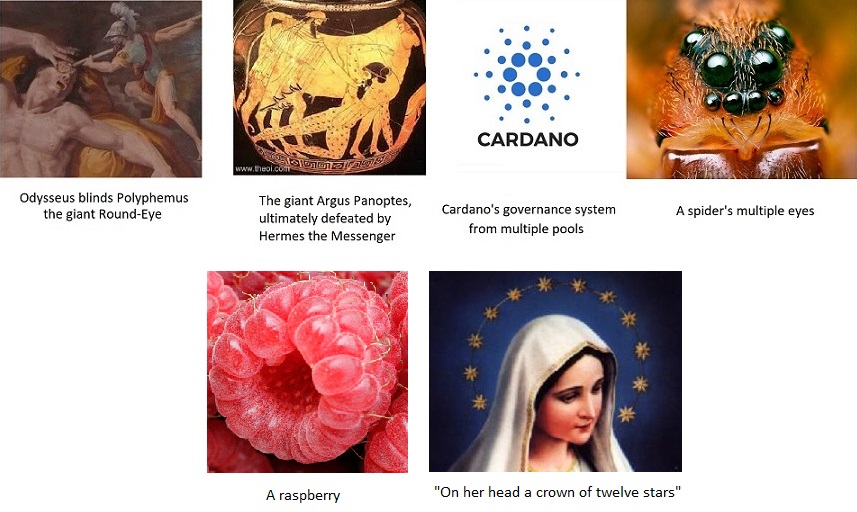
The Cyclops that Odysseus slayed was named Polyphemus (= poly-speech, poly-opinion) and is similar to the British king Arthur's famous Round Table. Long before Homer wrote it down, this story existed in hundreds of guises in cultures from Iceland to Russia, which indicates that the archetype of the circle-eyed giant tells of a confederacy of tribal governments, with an inner circle of governors that reacted to information gathered from all over the realm. And that sounds simpler than it is.
Setting up an effectively functioning intelligence system required not only the employ of trustworthy agents and a means to broadcast the information (pen, paper, smoke signals, light houses, messengers like doves, ravens or human runners), but also a means to confirm that the system worked even when there was nothing to report, and of course a proper standard in which to report, so that the observed facts could be properly understood by the recipient of the information. More importantly, a military strategist had to be able to compare the separate reports of independent and disassociated reporters and deploy his troops to where the need was most dire. That required proper roads. But it also required the reporters to master a system of reportage that omitted their own emotions and opinions and conveyed facts that could thus be weighed against other bare facts from other reports.
In antiquity, a large nation's most appreciated military experts were its poets: people who traveled the lands, listened and told stories and created a mutually agreed standard of wording in which the most complicated happenings could be faithfully conveyed in all relevant detail. Britain's formidable resistance to invaders (Romans, Saxons, Vikings) came from the networks of intelligence that supported its tribal structure, which explains the fixation of British literature with giants: Oscar Wilde's The Selfish Giant (1888), Roald Dahl's The BFG (1982), Jack the Giant Slayer (2013), A Monster Calls (2016), Hellboy (2019) and hence the American recent surge in giant stories: Stephen Spielberg's The BFG (2016), I Kill Giants (2017), Colossal (2016) — this latter film intelligently explains the nature of giants by letting one arise in Seoul from the actions of people in the US.
Instead of the many autonomous giants of British mythology, the Greeks envisioned one unified giant that was covered with eyes: Argus Panoptes (= white all-seeing). In Homer's Odyssey, the name Argos belonged to Odysseus's faithful dog. In the Bible many-eyed creatures occur in Ezekiel 1:18, 10:12 and Revelation 4:6-8.
The use of the double headed eagle in modern heraldry mostly derives from its use in the Eastern Roman Empire, where it began to signify imperial governance only in the 15th century. Centuries earlier the double headed eagle appeared in the heraldry of Serbia, where also the Vinča culture had been most prominent.
The Vinča culture was a highly successful Neolithic agricultural culture that sported what may be the world's oldest symbolic writing system. The symbols of this system were not individual scribbles left by independently creative carvers but remained consistent over vast territories.
The discovery of these symbols prompted the same anthropologist Marija Gimbutas who had proposed the Kurgan hypothesis to conclude that Vinča symbolism should be considered a proto-script, consisting of symbols that held the same meaning for a great many otherwise not connected people. It seems not unreasonable to additionally propose that the Vinča culture may have used symbolic currency to strengthen its social cohesion into a kind of early confederation of Neolithic settlements. Perhaps some symbols served as tribal names, and others referred to such basic statements as "crops failed" or "much fish here" or "bad guys on the prowl, send reinforcements".
A system like that depends entirely on a wide spread understanding of Theory of Mind, which in turn can be most aptly depicted as a polycephalic creature such as Hydra and Cerberus, which are associated with the underworld and thus the subconscious, or the double headed eagle, which is associated with land and the heavens and thus the conscious.
🔼A Lonely Hunter
The 2004 movie A Love Song for Bobby Long offered much more than a very useful meditation on the mechanisms of alcoholism. It was based on Ronald Everett Capps' novel Off Magazine Street, which corresponds to the Biblical brook Cherith, meaning "Off The Main Stream" or "Off The Norm" or "Among The Misfits". In the film's opening voice-over, Lawson explained that "Time was never a friend to Bobby Long," and that the only conspiracy theory with a happy ending is the one in which Time herself conspires to make people "believe in a generous nature and then rob them blind every time" (hence also the Luciferian theme of befriended time that shows up in lyrics from the Rolling Stones' Time Is On My Side to Deep Purple's Child in Time, and recently Billie Eilish' Ocean Eyes).

The name Bobby Long is of course a hardly disguised reference to the Wars of Scottish Independence (13 and 14th centuries), which started when English king Edward Longshanks sent his Scottish-born underling Robert the Bruce to solve the "Scottish Problem." Once north, Robert "Braveheart" the Bruce changed his mind about the whole affair and joined the rebellious Scots and mobilized the uprising against the English (and we note with some dismay that also Bruce Wayne, Batman's mild-mannered alter ego, was named after Robert the Bruce).
But this familiar story doesn't really explain why the Scots were causing a "Scottish Problem" in the first place. The answer lies in the distinguishing mark of a Scottish baron, namely a so-called "cap of maintenance," which was a red hood. The even more familiar story of the green-clad Robin Hood and his Merry Men and Maid Marian utilizes all the familiar Santa imagery and tells of "robbin' the hood": hungry peasants who swiped handfuls from a baron's stuffed barns without him knowing. And if he did find out that he was missing stock, the peasants could always blame a mysterious roaming robber who just got away. A similar social mechanism gave rise to the "person" of Jesus of Nazareth: a mysterious roaming John Doe from Anywhere, who was healing the blind and lame left and right. Only when the underground resistance has become strong enough to bring down the oppressive overlords, all true identities can be revealed (Independence Day, 1996).
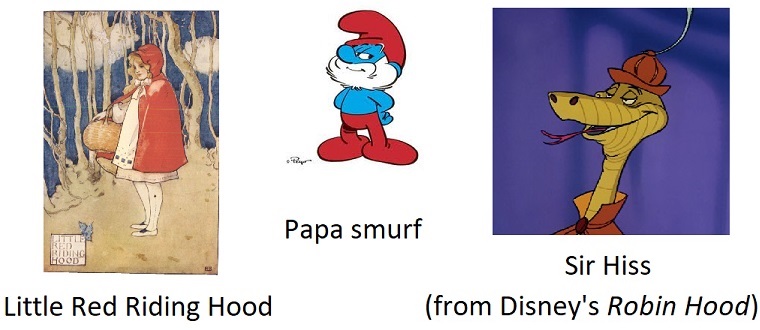
A society benefits greatly from its fringe people, and a nation with any sense would make sure that its fringe population has sufficient access to the nation's surplus (Leviticus 19:9-10). If a foolish elite locks the surplus up and doesn't let the fringe to it, the fringe will find a way in anyway and destabilize the economy in the process. The Scottish uprising started as any popular uprising, because the rich were keeping the economy's surplus for themselves. The Bruce didn't find an aggressive band of hooligans but clusters of hungry serfs who were suffocating from the stifling structure of feudal lords. The reason why Edward was in such a hurry to solve the "Scottish Problem" was that it was an assault on the lucrative social order.
The injustices caused by the English king's right to levy outrageous taxes from the barons (in order to pay for his overseas conquests) gave rise to the Magna Carta, or Great Charter, which was the modern world's first formal legislation that secured some degree of human rights. The Magna Carta came in effect in 1215 but fell right out of it when neither side kept their part of the deal. Still, the Magna Carta is often cited along Lafayette's Declaration of the Rights of Man and of the Citizen, to be one of the documents that inspired the International Bill of Human Rights.
The sudden change of mind of Robert the Bruce very clearly resembles the conversion of Arminius, who was a German-born but Roman-trained military leader who joined his free German brethren in the north and mobilized them against the Roman Imperial Army. Their engagement in Teutoburg Forest in 9 CE changed the course of modern history. The archetype of the flash-conversion is told in the Bible as Paul's bolt of insight on the road to Damascus and his joining of the same People of the Way he was going to persecute (Acts 9:3-5).
In 2018, Disney produced Mary Poppins Returns, an intelligent and well received retelling of the magical nanny who comes to save London banking. But where the original had clearly favored Big Brother's method, this second coming, like Peter Pan, gravitated toward London's signature clock Big Ben, which may be a Jewish element and means "Great Son", but which may also be a Gaelic element in which case it means "Great Mountain". The clock is of course based on the solar system, with the large hand as the months and the little one as the years, but crucially signifies either ignorance or rejection of the broken symmetry that is the fountain of all freedom. The concept of freedom lives behind the clock and the clock itself signifies servile obedience to a synthetic norm (Metropolis, 1927, The Big Clock, 1948, The Hudsucker Proxy, 1994, The Hours, 2002). When in the 1950s the desire for liberty required an anthem, Bill Haley's Rock Around the Clock (1954) became just that.
In 2011, Paramount produced Hugo that told the story of a child technician who tried to repair a picture-producing made-in-London mechanical child-sized golem, whilst making a living in the clocks of Paris' main train station and navigating the Alhambra Decree of 1492 and the Imperial Confiscation Mandate of 1509. Max the Doberman relates to tipsy uncle Max of The Sound of Music and Max the wolfish boy from Where the Wild Things Are (1963). That seminal book played with the same pro-life and anti-abortion-at-societal-level motif of naked feet (Ruth 4:7, Malachi 3:1 and John 13:1-20) as Once Upon a Time in Hollywood (2019), which, like The Sound of Music used the name George to refer to Britain's Georgian era. Specifically "farmer" George is George III, who lost the colonies to the American Revolution.
🔼Out of the Blue
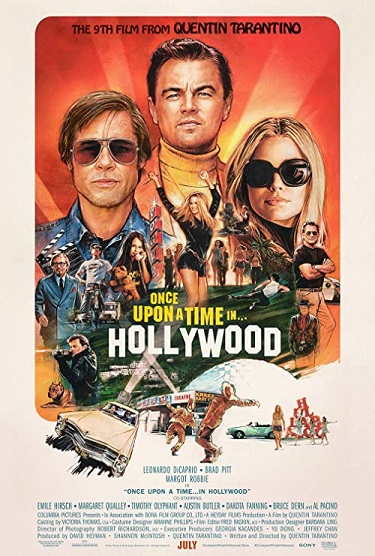
In Once Upon a Time in Hollywood, old and blind farmer George is ravished to exhaustion by an impetuous "redhead" and in this specific but often visited context, the redhead invariably refers to society's barony. In our modern world, the baronial redhead is called the lower middle class but the word "middle" is deceptive. The barony consists of the smallest property owners, and marks the edge of a larger "house" of the haves. Outside this baronial border are the have-nots: folks who have no property and who have to come to the house of the haves to work for a wage. These wildlings are typically not organized at all. The barons are somewhat loosely connected to the other barons. But deeper into the "house" of the haves, the connections get stronger and stronger until synthetic fraternities and trade negotiations govern all. At the core everything is essentially a mechanical financial transaction.
This "house" of the haves could best be imagined as a city of which the red barony forms the outer wall. At the heart of this city lives the monarch, whose color is white (or black), and he surrounds himself with the higher nobility, whose color is blue: the blue-bloods. The blue-bloods are surrounded by the red barony, which in turn is surrounded by the greyscale have-nots. A great many stories, both modern and old, utilize these color codes in some way or form to discuss the dynamics between these three people groups within a single society — hence the imprisoned blue genie in the story of red-handed Aladdin, the faithful Blue Ox of red-laboring Paul Bunyan, blue Dr. Manhattan in Watchmen and even the blue Smurfs and their white caps governed by Papa Smurf who wears a red one (the Smurfs are polarized socialistically). The Hindu tradition depicts these same themes as the blue Vishnu and his red companion Lakshmi.
The white (or black) monarch is whatever the whole of society is centered on, and this can be a living ruler but also some static principle or even a desired condition. It's often not even clear what the innermost "attractor" of society might be, but the catch is that the outer wilderness of the have-nots is expressed in shades of grey. This in turn means that there is an existential link between the king and certain of his most righteous have-nots. This explains the often visited narrative theme of the poor man who becomes king; the diamond in the rough, the wandering Jesus of Nazareth who's destined to be king (and hence also the famous yin-yang symbol).
The greyscale have-nots and the red barony are the most recognizable to most people: those are our bosses and neighbors and the people we meet on the street and in shops and offices. The monarch is also not beyond the imagination of most, because he embodies what we privately idolize (whether positively or negatively). The true aliens of our world are the blue nobility: the have-a-lots, the billionaire class. Most of us cannot begin to fathom what these people do all day, and how they see our world and us, but one thing should be clear: they are not like us, not in the least, not by a long shot. That is why most of us are completely wrong about them.
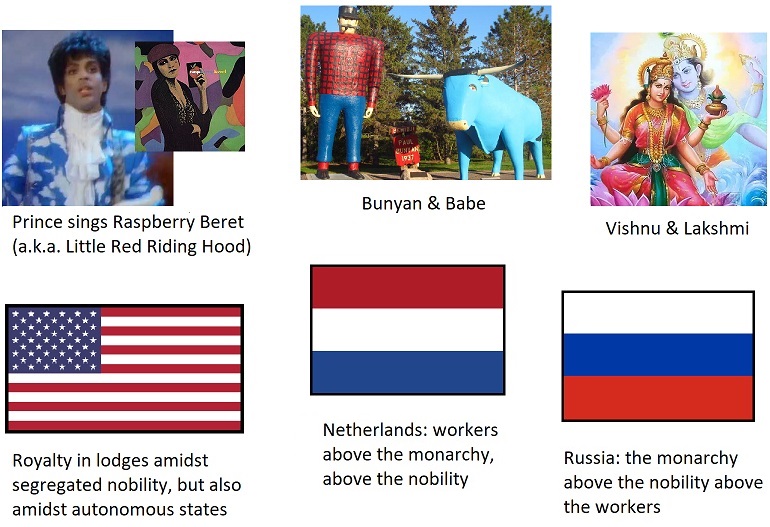
Even if authors or actors portray nobles or billionaires (Wall Street, 1987, The Wolf of Wall Street, 2013), the authors and actors are still bright-red working-class people and got the blue-bloods spectacularly wrong. Billionaires aren't simply bigger or more intense versions of the reds, their brains operate on completely different software. If the economy were music, you and I can carry a tune but the billionaires are Mozart. They don't merely live here, they create the basic structure of our world, where we all derive our economic sense from. They're not like greyscale robbers who take by force. They're also not like red baronial car dealers who smooth-talk us into a purchase. They are Mozarts who are tuned into the desire of the whole of society and give it what it asks for. And we give them our money for it, willingly and freely.
Imagine all our hopes, dreams and concerns were marbles, and we would drop our personal marbles into various baskets so that we would end up with a bunch of baskets that all contained the joint weight of every concern alive in society. The basket of climate concerns would fill up quickly. The basket of cancer research too, probably. Crime against children would form a pretty pile, and animal protection too, for sure. Now imagine that all these baskets are tied to the seats of a huge but freely rotating and self-organizing Ferris wheel. The heaviest basket would certainly not be as heavy as all the others combined, but it would nevertheless tilt the market disproportionally into its favor and end up at the bottom with the second-heaviest basket right next to it and so on; all catching the marbles we toss toward the higher and lighter baskets we aim at.
So, which social concern receives the greatest financial momentum? Where does the free consumer willingly put most of his money? Where is our economy centered on? Cancer research, livable cities and clean air? Care for oppressed children in Africa? Baby seals, whales and clean oceans? Or teenage musicians, sport clubs and superhero movies that cost hundreds of millions of dollars to make?
🔼Spawn
What the reds are most wrong about is not the motivations and intentions of the blue-bloods, but their degree of freedom. We reds imagine that a billion dollars buys a lot of freedom but it doesn't because that billion is tied into society the way the roots of a tree are tied into the earth, and if you pull it out it will wither and die. Genius of any kind comes with a price, usually with horrible loneliness and an inescapable feeling that one is a slave to one's craft. Like Mozart, hyper-talented and successful musicians routinely drink themselves to death. That's not from happiness. Freedom is the portion of your mind that you can devote to things other than your craft, and billionaires have very little of that.
A billionaire who decides to give society what he thinks society needs rather than what society asks for will very quickly stop being a billionaire. That is why poor people are always wholly wrong about what they would do if they were billionaires, simply because what they would do is exactly what's keeping them poor. If you would do what a billionaire does, you'd be one. And you're not. And if you understood how money works, you would know that you don't have any for the simple reason that what you truly desire is not what you get from money. What you're really asking for is freedom, and that is what you get from getting rid of money.
Light comes out of the sun because of nuclear fusion. Because of gravitational pressure within the sun, every four hydrogen atoms are forged into one helium atom and the difference in energy between 4 hydrogen atoms and 1 helium atom is expelled in the form of light. Likewise, when societal pressures drive humans to engage in the exchange of goods and services, their personalities (their language, their expressions, their opinions) will approach a common center. This is where our celebrated civilization comes from, from people getting closer to a common center.
Money is to society what light is to the sun. From outside the system both may seem like the main feature but from within they are the waste product generated from the main feature, which is forging bonds between elements. Everybody is familiar with the archetype of the rich Scrooge, the hoarder of money, but far less familiar is Scrooge's ultimate function within society, namely that of shit shoveler. Billionaires shape our society by extracting money and slushing it into cesspits. Some of it will be used to fertilize the fields (as Bill and Melinda demonstrate) but most of it will be disposed of for the waste it is (hence the expression "filthy rich" and Mother Monster's Beautiful, Dirty, Rich, 2008).
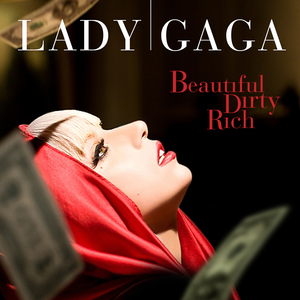
Billionaires are like small masculine spiders that devote their entire lives to the approach of the female that they are trying to mate with. She in turn deploys all her charms and lures him in. They obviously both want the same thing, namely to mate, but the female has a completely different view of the aftermath than the male. After the deed, he tries to take off but if he isn't very careful she grabs and eats him. And when he's not careful in his approach, she eats him before he can do the deed. It's now hard to imagine but the billionaire class was once an endangered species, and they've suffered their share of holocausts — from the beginning of the end of the Knights Templar on Friday the 13th, 1307, to the Khmelnytsky Uprising in 1650, Robespierre's Reign of Terror in 1793 following the French Revolution, to Russia's October Revolution in 1917, the destruction of Europe's economic elite (mostly Jews) in the 1930's and 40's, and recently the expulsion of white farmers from Africa.
Every gambler knows that the House always wins, but the desire to play the game is overwhelming. The thought of being eaten horrifies the billionaires but their desire to successfully mate with society is overwhelming. They study her every move and absorb her weakest stirrings into their own reflexes. Day by day they erase their own selves, and yearn for hers to fill the voids thus created. Their fraternities and societies are constructed from contracts rather than friendships. They serve clockworks instead of gardens, and instead of souls they have norms — hence the creature called "The Borg" in Star Trek, which Captain Picard described as "the federation's most lethal enemy" (First Contact, 1996).
When the rich young ruler asked Jesus about salvation, Jesus rather blatantly replied: "sell your possessions and give to the poor" (Mathew 19:21), and to people who don't understand money that sounds like a very simple thing to do. People who do understand money, however, also understand why the rich young ruler left Jesus very sad. If salvation comes from selling what you have, who buys? And if you have more than everybody, who can buy you out? Who is ultimately going to be left with the bill that pays for this crazy world that we've built?
🔼Spiderman

Arachnophobia is the unreasonable fear of spiders, which is a fear that far exceeds a trauma that may have resulted from an actual encounter with a physical arachnid. Arachnophobia obviously doesn't come from that, or else we would have seen a much greater prevalence of arachnophobia in places where people live with huge or poisonous spiders. We don't. Arachnophobia typically occurs in European cultures. In those same cultures, arachnophobia is not matched by a prevalence of unreasonable fear of such common dangers as are posed by cows, bees or swords, which indicates that arachnophobia originates in social angst.
The obsession of classical European literature with creatures with many eyes (most spiders have eight) strongly suggests that arachnophobia originates in the fear of a complex and stratified intelligence apparatus. The government that built this intelligence complex resides at the heart of its huge web and if any wandering visitor thinks he could just enter the realm with a bag of gold to conduct trade undetected would soon face the government's roving army, which was called in via any of her web's invisible signaling threads.
When the dinosaurs began to die off they left an enormous amount of reptilian flesh available for all sorts of bugs to feast on. That means that the rise of the mammals was immediately preceded by vast waves of flies. That in turn prompted the proliferation of spiders. At that time, spiders would routinely be 30 centimeters (about a foot) wide and could be as much as 50 centimeters. Our ancestors at that time were the size of rats and probably hunted insects too. That means they shared their habitat with spiders and probably competed with them. It's not unthinkable that spiders the size of dinner plates and our rat-sized ancestors ate each other, and that reptilian dragons flying overhead hunted them both. This went on until all the dinosaurs were eaten, the spiders retreated, the mammals multiplied and diversified and the birds emerged in their present form.
Something very similar appears to have happened at the societal level right after the Bronze Age Collapse, and was probably repeated when the Roman Empire collapsed. The present obsession of our modern governments with intelligence may be somewhat of a nuisance, but without it the flies of our world would descend on the mammals and eat them alive. (The name Beelzebub, incidentally, comes from בעל, ba'al, lord, and זבוב, zebub, fly. It means Lord of the Flies, and is a mock name since flies don't acknowledge central rule or lords thereof. The famous novel of that same name is from 1954.)
The physical size of an arachnid has a mechanical limit (they have no breathing mechanism and obtain oxygen through diffusion), but our human definition of a biological individual is rather useless. In nature, biological individuals are families and cultures, which are shaped like four dimensional trees. Our individual human minds travel through the biosphere that is our society like clouds of organic molecules, and during the day we might be a bored clerk at some government office (keeping the spider alive) while at night we meet our friends and bounce around the vales like bunnies. A mammal differs from a reptile in that a mammal invests most of its mental energy in social bonds. And those cannot be confiscated by arachnidan governments. Most bugs are too small to be of any interest to an arachnidan government and only flies of a reasonable size (those who invest all of their mental output in the acquisition of cash, jewelry, yacht, villas, and so on) might set the whole arachnid apparatus in motion and end up cocooned and eaten. An investment of one's mental capacity in any kind of exchange of wisdom can't be eaten by a spider.
When a female spider is much larger than the male, she has no way to tell the difference between her suitors and her freshly hatched brood. This explains both the Oedipus strand of literature and monster-mother-eats-child stories, which are both very rare in our modern Western library; it's used in Germany's Hansel and Gretel and Russia's Baba Yaga and perhaps hinted at in The Hours (2002).
In this situation there is no alternative for the males but to keep competing, and trying to win a chance of getting eaten by the female. But when the males keep competing and the bigger ones keeps winning, the males will ultimately end up being the same size as the female. She'll notice that she is in trouble when she can't subdue and eat her suitors anymore and they begin to walk all over her. She'll also notice that it's getting harder for everybody to tell the difference between males and females — hence the modern obsession with androgyny, homosexuality and particularly British Queens: The Queen (2006), Mary, Queen of Scotts (2018), The Favourite (2018), and in some deep way Bohemian Rhapsody (2018).
When the males become much bigger than the females, the difference between females and freshly hatched brood becomes less pronounced. This will result in an obvious increase in stories that deal with sexual violence and particularly violence against children. Females will find themselves with very little right to choose, which reinforces the winning potential of the biggest guy. The only way out of this situation is for the women to somehow find a way to liberate themselves (Suffragette, 2015) and secure their own right to mate with whomever they want, and then select the males least endowed with masculine traits such as a drive to compete or conquer. Despite the promise of the many feminist and sexual revolutions of the last century, modern narrative has of yet not birthed the archetype of a sexually desirable antihero (save for, perhaps, Indiana Jones; the vanity of this quest drives most of Woody Allen's oeuvre), or formed a tradition of women rejecting guys for the sole disagreeable reason of them being rich.
The core mission of the masculine blue nobility is to give feminine society what it wants, which is an enduring mystery, even when the blue nobility is able to read the smallest economic trickles in the united soul of mankind (Tootsie, 1982, What Women Want, 2000). Popular wisdom decrees to be careful what you wish for because you might get it, without realizing that this is indeed the way it is. When Jesus said: "Ask, and it will be given to you; seek, and you will find; knock, and it will be opened to you" (Matthew 7:7), nobody in his original audience would have missed the reference to the war doors of Janus Quirinus in Rome, which would be closed when the world was at peace and opened when war was called for.
Ask them for a war, and they will give a war (The Terminator, 1984). But ask them to lay down their powers and return to our embrace, and they will do that too (City of Angels, 1998, Star Trek; Insurrection, 1998). All we have to do is make up our minds (Star Trek; First Contact, 1996, Runaway Bride, 1999).
If any of them indulges in daydreams, the blue-bloods daydream about being simply red, or even a greyscale; to escape from all they know and having all the freedom in the world and friends who would give their lives for them for nothing in return but the freedom to do so. Hence movies like The Rocky Horror Picture Show (1975), The Adventures of Priscilla, Queen of the Desert (1994), Flawless (1999), Transamerica (2005).
It's hard for a red to imagine a blue life, but it's equally hard for a blue to imagine a red life. The desire of these two realms for each other has been a favorite of literature for millennia. Usually the male is red and the female blue (Aladdin, Roman Holiday, 1953, Love Story, 1970, Cocktail, 1988, Good Will Hunting, 1997, Victoria and Abdul 2017, Long Shot, 2019), and sometimes the male is blue and the female red (Song of Solomon, A Star is Born, 1937, Pretty Woman, 1990, Maid in Manhattan, 2002, Fifty Shades of Grey, 2011).
🔼That Redhead has a bite that stings
If the house of the haves is small relative to the greyscale wilderness, the house is a tent and the barony is the carpet. If the house of the haves is like an early empire, very broad but with minimal vertical stratification, the huge barony surrounds the tiny court like a colossal snake her tiny egg. If the House is a metropolis in a wholly cultivated agricultural realm, the barony is the city's wall. If the House is a single person, the red barony are the legs and feet (hence The Cobbler, 2014), the blue nobility the hands and arms, and the monarchy the head.
In a deck of cards, the barony is the jack. In a large empire, a large number of jacks (red) are represented by a single regional queen (blue), who is part of a harem of wives who report to their collective husband the king (white), who in turn represents the law that is the ace. But if such an empire does not exist and there is only a wilderness, the barony is the first property owner class to arise, and this means that the barons are also the elders of any early society. If this redhead class of elders is allowed to naturally produce a son, this son will be a righteous white king who cannot die (Jesus, John Snow, Connor McLeod, Sol Invictus). But if this class is somehow tricked when after a dark night, a relatively small light appears to set the entire heavens aglow, an imposter will usurp the throne (the Kurgan, Morning Star, Lucifer). For a time, this imposter will selfishly dominate the lands but his empire will collapse when the true sun rises, and the morning star will fade into utter obscurity.
If the incumbent monarch is in fact the imposter (which all earthly monarchs and all national governments inevitable are, since Natural Law is the only rightful monarch), the redhead will inevitably revolt and break with tradition (Brave, 2012, Ready Player One, 2018), and may even gather the have-nots and move to a whole new world (Far and Away, 1992, Titanic, 1997, Chicken Run, 2000, Oblivion, 2013, The Queen's Gambit, 2020). If the rural population has nowhere to go, they might stage an attack on the White House. When this happens, the barony is the first to be hit and will either fall or absorb the popular momentum and turn inward to destroy the monarch. This serpentine extreme is overly discussed in the many Peter Pan and Santa guises, and it arises as a response to the other face of evil, namely the usurper monarch who "prowls around like a roaring lion, seeking someone to devour" (1 Peter 5:8). This social instability is a sign that a house is divided against itself, which in turn is a clear sign that it won't last long (Matthew 12:25).
The besieged usurper monarch and his dark blue support chorus will have to attempt to stave the red popular uprising, which he can do through an expensive military intervention or the cheaper and rather more subtle act of spin-doctoring. That psychological technique deflects popular momentum by dividing it into compartments. Then it alienates the serpent's head from the tail that has been following it all along, and bends the whole thing into an Ouroboros that devours itself. A typical Ouroboros construction enticed the Zealots of Jerusalem to fall upon their own fellow Jews during the siege by Titus. Sometimes it's not even clear which end is the head and which is the tail, such as with the Ouroboros that emerged out of the partition of India right after India's independence from Britain. And sometimes it has multiple heads and tails and everybody loses track of who's eating who, such as during the collapse of Yugoslavia.
And since most usurping monarchs are convinced of their own benevolence and subsequent right to rule, an oft cited reason for instigating an Ouroboric collapse is to provide "a holocaust to prevent a greater holocaust". Hence such cheerful harvest-destroying festivals as La Tomatina and evenly cheerful songs like The Ketchup Song, which are all about a society's unwitting self-destruction in order to preserve its ruling class (or a monopoly held by them, such as the monopoly on tomatoes, one imagines).

This technique of spin-doctoring the outer red masses so that they cannibalize themselves has in our modern world become common practice, and dominates particularly the music industry to the point where it seems that any highest bidder can insert a symbol of archetypal image into the latest target of a certain demography. Peak hour blocks on VH1 and MTV are like WWWF grand slams, except that the wrestlers are actual demographic groups and people actually die. In case you have ever wondered who actually funded gangster rap in its heyday, gangster rap relates to blow the way the crucifix relates to crucifixion. Rap is cheaper than blow but both existed to preserve the American monarchy.
And in case you were wondering who killed Tupac and Biggie (City of Lies, 2018), you might as well wonder who really arrested George Jung (Blow, 2001) or brought down Pablo Escobar (The Infiltrator, 2016) or even John DeLorean (Driven, 2018), out of whose dream Doctor Emmett Brown made a time machine (Back to the Future, 1985), with which Marty went back to November 5, 1955, the day that racial segregation was outlawed on American interstate trains and buses, hence Rosa Parks and hence the civil rights movement. One-point-twenty-one is the latest possible Martin Luther King Jr. Day.
🔼Huckleberry Friends
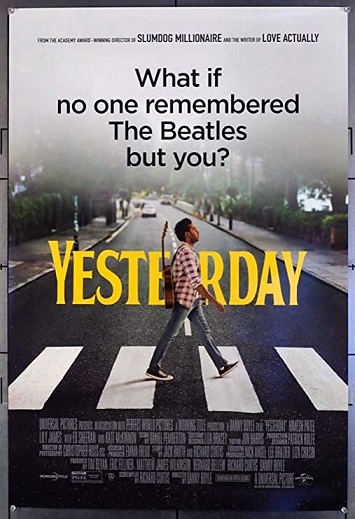
The name Emmett Brown relates to the Hebrew noun אמת ('emet), meaning real or faithful (hence too the familiar word amen), and according to canon, the doc's last name is really Von Braun, the family name of the proverbial German rocket scientist, who was instrumental in both the development of the Nazi's V2 rocket and the American Apollo rockets (a historic irony touched on in First Contact, 1996).
The word "brown", you'll agree, is a word like "shady," and expresses so little of a mix of color that it's unclear which color we're looking at. The color brown is mostly a greyscale with smidges of color that live at unknown locations on the color spectrum.
The mild-mannered alter- and breakthrough ego of Eminem is Slim Shady, whose hit "The Real Slim Shady" suggests that the quest for gang dominance is similar to the quest for fame, reward and approval, and that competitors are like dogs pitted against each other by an evil master (a.k.a. the "Fame monster" in the world of Lady Gaga, "Monsieur Calvin J. Candie" in that of Django Unchained, 2012, the snake-charming Jafar in that of Aladdin). The resistance to this game is neither white nor black but shady and has an identity that cannot be pinned down because it is spread out over multiple individuals, very much like Jesus Christ and Bitcoin. The movie 8 Mile was named after 8 Mile Road, which separates black from white Detroit, and reminds of 88 mph.
Proverbs 25:26 reads: "A righteous man falling down before the wicked is a troubled fountain". In 1970 Simon and Garfunkel released Bridge over Troubled Water and since the 1940's a Blues musician who called himself Muddy Waters had begun to release the private sorrows and indignation of his enslaved people into a collective and identifying voice ("I'm a man!"). He clearly understood that a perfect harmony could only be achieved through free participation and not through the efforts of the best intended conductor. The zeal to liberate of men like Muddy Waters allowed a subdermal infusion of black musical sentiment in Europe, and struck home particularly in Liverpool, which means Muddy Water, and where the river Mersey had long served as a proverbial border between white (capitalistic, Protestant) and red (socialistic, Catholic) sentiments. Its musical newspaper was called Mersey Beat ("beat" not referring to rhythm but to the area a policeman patrols or a journalist covers).
"Strawberry Fields Forever" is not about a park in an English town. The name Jude means Jew (not Julian, which means "of Julius"). Paul McCartney did not customarily walk barefoot, not even to cross Abbey Road. "A movement upon your shoulder" is not a common English expression but a Jewish one and relates to hearing and direction finding2. Tomorrow may be always a day away but Yesterday is preserved in the blood red fruits of the tree of time, there for the taking, just by going to the future backward.
In 1936 Theodor Seuss Geisel returned from a vacation in Europe and wrote a children's book about Mulberry Street. In it the line "and that is a story that no one can beat, when I say that I saw it on Mulberry Street," occurs in four variations. The fifth occurrence of the word "beat" occurs in "Did nothing excite you or make your heart beat?"
The white man's quintessential sad song is a 13th century Gregorian chant named Dies irae. The title comes from the first phrase of this song, which means Day of Wrath, which relates to the Grapes of Wrath via Revelation 14:19-20. The latter term became the title of John Steinbeck's novel Grapes of Wrath (1939), which told about the Dust Bowl draught that exasperated the Great Depression, and for which he received the National Book Award, Pulitzer Prize and in 1962 the Nobel Prize. The first four notes of Dies Irae, namely F-E-F-D have been used in countless musical compositions to express doom and death. Even in modern times these four notes are frequently utilized in movie scores. When these notes are reversed and mirrored they yield a structure that resembles the structure of the name YHWH ("take a sad song and make it better").
The name Lucy means "light" and Lucy in the Sky with Diamonds plays into the Tiffany tradition. Sergeant is the highest ranking non-commissioned officer, equivalent to chief of the fifth rank in the Roman army or the chief of the barons in economic terms. Pepper refers to the spice trade, which was the main catalyst for the families of the earth to come together. The similarity between "Come Together" and "You Can't Catch Me" by Chuck Berry resulted in a semi-serious slug out between John Lennon and Berry's management, Morris Levy, as well as the album Roots: John Lennon Sings the Great Rock & Roll Hits (1975).
The song You'll Never Walk Alone was first sung by the character called Julie Jordan of Rodgers and Hammerstein's musical Carousel (1945). It was made into a world hit in 1963 by Gerry and the Pacemakers and is until today the anthem of Liverpool FC.
The genre of the popular conspiracy theory started in all earnestness with the idea that Paul McCartney had died in '66 and had been replaced by Billy Shears. The rise of this genre appears to have been spontaneous and organic and although it gave marketers yet another way to wag the dog, it also introduced kids the world over to the crazy excitement of decentralized scrutiny and the notion that deviations from the main stream narrative can bundle up into formidable forces that can cut deeper, pierce further or turn out to be inflated pockets of hot air that were nevertheless great fun to produce. Beatlemania didn't just chance music, it changed the way popular culture thinks, processes information and pursues dreams.
Both the Beatles and Gerry and the Pacemakers were managed by a local Jewish prodigy named Brian Epstein. Having taught the world to sing in perfect harmony, Brian Epstein died from an overdose of barbiturates at age 32 in 1967. As late as April 1940, British Prime Minister Neville Chamberlain maintained that Hitler had "missed the bus" and frequently expressed that the whole Nazi threat would blow over soon. He was succeeded by Winston Churchill, who fortunately saw things differently. Had the European blackout of the 1930s and 40s reached Britain, there would have been no Beatles, the great carousel would have remained a solitary witness, and the Joseph Priestley Hotel would have remained flat and airless (Yesterday, 2019).
Note 2) This Hebrew leitmotif is actually very powerfully represented in the various arts. The Hebrew word for shoulder gave its name to city of Shechem and is the "seat" of one's burdens or concerns (in the sense that the heart is the "seat" of one's emotions), which is why Jesus carried his cross upon his shoulder, and also why in world literature, the wise very often carry a bird upon their shoulder — most strikingly in this regard, are the ravens Huginn and Muninn (hence heug en meug in Dutch, and the verb to hug in English) who traverse the entire world but periodically perch upon the shoulders of Odin and report the world's goings on (Job 1:6-7, Zechariah 1:11). Beetlejuice (1988) combined Orion's right shoulder with the clown. A more recent incarnation of this principle is found in Billie Eilish' blohsh logo. A slightly older incarnation is found in Mona Lisa's stare, which is equally profound as her smile: she doesn't look at the viewer but stares over the viewer's right shoulder. Mona Lisa, by the way, means Mrs. Elizabeth, and her painting has the exact same main theme as the Book of Exodus, as does Da Vinci's Salvator Mundi albeit rather more obviously and by a rather exhausted and discouraged messenger, who seems to wonder how many times the same message can be transmitted to a candid world and fail to take root.
🔼Chasing tail
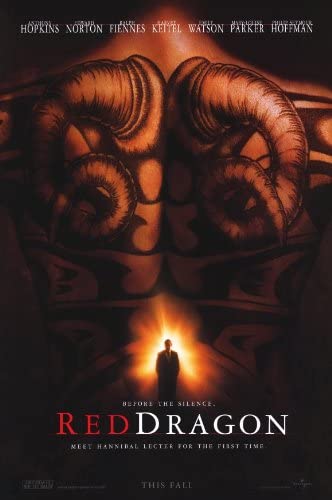
A red Ouroboros is not necessarily the result of blue manipulation. Instead of a righteous barony rising up against a usurper monarchy, a righteous monarchy may withdraw from an unrighteous barony. If the monarchy tries to proclaim and uphold Natural Law but the barony keeps lying and murdering their own, the monarch may withdraw into an ever stronger ivory tower. Without support from within, the barony will wane until it falls and is absorbed by the wilderness that surrounded it. This is what happened to the Nazi monster after World war II. If the ivory tower was indeed more righteous than the now repelled barony, the ivory tower will survive and begin to flatten out and produce a new barony plus outer rural class from its own within.
This dynamic relation between the greyscale rurals (the have-nots), the red barony (the have-littles), the blue nobility (the have-a-lots) and the white pivotal monarchy who centers it all is the meta-narrative according to which all dynamic self-organizing systems evolve. It covers various separate aspects of human society but also of biology at large. It covers the formation of eukaryotic cell formation, but also of star formation and supernovae.
These dynamics are reviewed in countless legends, and even provide reports on historic events with narrative structure. It sits at the heart of the unification of Lower Egypt (red, the rural Nile delta) and Upper Egypt (white, the victorious monarchy), Republican Rome (red, Rufus, Brutus) versus Imperial Rome (white, Augustus), the many faced European Miracle of the Roses (most famously, gifts of bread to the poor changed to red and white roses under the cloak of queen Elizabeth of Hungary), the Wars of the Roses (the white House of York versus the red House of Lancaster), the American white-skins versus the red-skins (the skin tone of American natives is similar to that of the average European; this conflict was between civilized indoors people and barely dressed outdoors people), the red Bolsheviks versus the white Tsarists, and even the First World War, which was basically a battle between Imperialists (Britain, France, Russia) and Ruralists (Germany, Austria-Hungary, Italy; hence the legendary flyer Red Baron).
Fear makes pale and cowardly, but indignation makes red and brave. The white monarchy is associated with the sun, and the red barony is associated with the moon. And probably the greatest challenge to coming to terms with our human history is that the Creator made both and shows no partiality and picks no sides (Romans 2:11). In the natural world there is no über or unter; there's only the circle of life (Galatians 3:28, Colossians 3:11). Paradise occurs in the controlled balance between white and red, and as long as any white monarchy (or a blue-blooded oligarchy of high nobles in the monarchy's stead) is not perfectly aligned with Natural Law, this white monarchy may grow into a satanic lion and devour the helpless masses (Zephaniah 3:3), but when the red barony becomes too powerful, she becomes the serpent of old and overwhelms both the inner monarchy and the outer wildlings. When humanity seeks to combine the two, for the misguided sake of peace and harmony, the result is a lukewarm pink, which the eternal Word would spew out of his mouth (Revelation 3:14-16, and compare Revelation 19:15 to Matthew 10:34).
🔼The Madness of King George

The complicatedness of the Wars of the Roses is exacerbated by the fact that the red rose wasn't attached to the House of Lancaster until Henry VII combined the emasculated Houses of Lancaster and York and formed the House of Tudor. This House of Tudor sported a rose with a golden heart, a white inner corona and a red outer one. The Wars of the Roses terminated the male lines of both Houses, and the House of Tudor was decidedly matrilineal. King Henry VIII (in Latin: Octavian) broke England away from Imperial Papal rule and created the wholly autonomous Protestant England, which he joined with Wales to form the Kingdom of England and Wales (1536). When the last of the Tudor monarchs, namely Elizabeth, died, her successor became King James VI of Scotland, who was her kin through a maternal line, and this created a united kingdom (1603), which in turn lead to the Kingdom of Great Britain (1707), then together with Ireland, the United Kingdom of Great Britain (1801), and thus the British Empire.
The origin of the name Britain has attracted quite some scholarly scrutiny, and the latest hypothesis is that it ultimately derives from a Gaelic word pretani or "painted ones." Here at Abarim Publications, however, we suspect that the name Britain arose from a confluence of descriptions, namely first from the proto-Indo-European roots per, "in front of" and ten "to stretch", hence our words "thin" and "thing". The latter word describes not merely an object but specifically an assembly of material into an independent object. This now so common word entered our language referring to an assembly of rulers or people of authority. Such Things existed all over Europe and Scandinavia and survives in modern English in the word "hustings" (= house thing; hence also the profundity of the Battle of Hastings). On the Isle of Man our word survives as the "tyn"-part of the name of its capital Tynwald.
The Thing was of course the beginning of organized government, which replaced the personal familiarities of tribal elders with dissociated mechanisms, procedures and the digitization of the individual. About the horror and blasphemous injustice of inorganic and mechanical governance Paul wrote, "Our struggle is not against flesh and blood, but against the rulers, against the powers, against the world forces of this darkness, against the spiritual forces of wickedness in the heavenly places" (Ephesians 6:12). In literature, the concept of the Thing shows up as broadly as the mischievous Thing One and Thing Two in The Cat in the Hat (1957), the elusive, invasive and destructive Thing in the novella Who Goes There? (1938, which was made into a seminal horror film called The Thing, 1982), and of course the cleverly titled A Funny Thing Happened on the Way to the Forum (1962).
The root ten resulted in Latin in the verb tenere, to hold, grasp, maintain, from which comes our English verbs "to tend". Together the roots per and ten forms our verb "to pretend," which in turn comes from the idea of holding a buffer or distraction in front of something thus shielded or protected. That suggests that the British Isles were first described as "assemblies in front" rather than "realm of painted ones". This in turn suggests that the British barony was perceived as a threat to Roman Gaul. That probably lubricated the etymological shift to bretani, since that seems like a derivative of the common adjective brutus, primarily meaning heavy or immovable and secondarily stupid, unreasonable. Where our English word "baron" comes from isn't officially known but the Latin word brutus comes from the common Greek adjective βαρυς (barus), heavy, hard to bear, grievous, impressive, or its much rarer form βριθυς (brithus), which occurs only a few times in extant literature, and describes the hefty spear with which Sapedon was wounded and with which Athena joined the battle of Troy (Il.5.746, also see Agam.200). For more on the significance of spears in antiquity, see our article on the Greek noun κυρος (kuros), or those on the names Cain and Pilate.
The American colony of New York was named after the old one, and the American Revolution had as much to do with British taxes as the First World War with the assassination of Archduke Franz Ferdinand. Commoners very rarely get to see their monarch and certainly don't know anything about his conversations with other monarchs. The visible governments of our modern world are baronial and they are governed by the higher nobility, which in our world comprises the billionaire class. They also own the news, which compares to the real forces of economic nature the way a twelve year old street kid with three cups and a bead relates to your wallet.
Even when it's not clear who the monarch of a society is or when society apparently doesn't have one, monarchists emphasize hierarchy, inherited succession, tradition, loyalty, duty, etiquette and immutable standards. Republicans, on the other hand, emphasize popular election and free expression, and derive social cohesion from dynamic norms such as fashion, social movements and artistic styles. To reds, respect is earned and comes with personal performance. To whites, respect is deserved and comes with formal office. To reds, society is a living network. To whites, society is a grid of niches.
The reds form a flexible circle around a dynamically positioned heart that seeks a center to settle on. The whites form a static tower at a location that may have seemed right at the time of founding, but that inevitably misses the true heart of human nature. This causes the tower to slide ever further away from where the red heart desires to go, and that makes the ways and norms of this monarchy seem ever outdated and ridiculous. The ever increasing discrepancy between the dynamic focal point of the collective intuition of the general population and the static and fixed focal point of the monarchy generates inexplicable economic flows within society and drunkenness and ultimately madness in the monarchy (Henry VI, George III, many of the early Roman emperors).
In Europe many family names are chromonyms that derive from the family's political leanings and thus the family's most intimate nature and constitution: the Kings, Whites, Blancs, Blanckenburgs, Weisses, Witneys are all essentially monarchists who emphasize standards, tradition, codes of conduct, reason and etiquette, and the Rowans, Berry's (Roddenberry, Huckleberry, Jagodic, Wisniewski), Ruby's, Flanagans, Rouxs, Russels and Roths originated as republicans who emphasize social fluidity, reaction, fashion and art.
In Shakespeare's time very few informed viewers would have thought that the play Romeo and Juliet (1597) was an off-the-shelf story of boy meets girl, and none would have missed the reference to the solar maiden fairer than the envious moon or the rose that would smell as sweet by any other name. Likewise, in the 1960s, very few informed Americans would have missed the profundity of Jackie's pink outfit or Kennedy's codename Lancer. Fewer still would have misunderstood the semi-accidental killing of Marvin by Vincent (Pulp Fiction, 1994), the assassination of the Mad King by Jaime Lannister (Game of Thrones, 1996), the surprise twist in The Jackal (1997), its further development in Shooter (2007) or the search for precedent and final condemnation in The Assassination of Jesse James by the Coward Robert Ford (2007).
In 2005, Syriana told of a white rose tending billionaire aptly called Dean Whiting, whose scheming thwarted a righteous Arabian prince who was ultimately assassinated in his motorcade by an agency of the US government. That same year, in Brokeback Mountain, cattle boss Joe Aguirre spoke of two deuces who had economic concerns but nevertheless felt free to "stem the rose" (= remove the thorns, or pricks, which are masculine traits) rather than keep watch over the flocks by night. Ennis and Jack had taken this liberty because they had secured food (Jack shot first but Ennis took the riffle and said laughingly, "Gettin' tired of your dumbass missing") and ultimately killed the coyote (Hugh d'Avranches) that had been killing the sheep (and which had "balls the size of apples"; a not too subtle reference to the protestant House of Orange, most notably William II and III; hence also A Clockwork Orange, 1971, and Kill Bill, 2003). Jack, ultimately, was beaten to death and while Ennis' house fell apart, it ultimately lived on.
In 2006, The Good Shepherd offered a troubled and convoluted apology by comparing the JFK assassination to France's Dreyfus Affair and deeming it a father's suicide-inspired filicide perpetrated by the Russians in response to an internal investigation of the CIA following the abortive Bay of Pigs invasion. This film mistakes willful intention for freedom of choice but nevertheless rightfully explains that not the facts matter but the perception of them. Events, in the broadest sense, are mere grains of sand that swirl unrelated through time. It's human narrative that turns events into facts by giving them a context and meaning. At her discretion, a story teller selects some events and leaves others out, and creates synthetic webs of history that would have stayed dust without her intervention. The human mind and thus human culture — our entire sense of self both individually and collectively — depends not on the mere experiencing of events but on their recollection, their synthesized syntax and context. If it weren't for the mind's natural ability to spin yarn and to weave threads into the sails of a ship that we place in a bottle and put on display, the mind itself would not exist.
The quintessential War of the Roses is among the most utilized narrative elements of modern Western storytelling. It shows up in movies as broadly spread as The Rose Tattoo (1955), The Misfits (1961), They Shoot Horses, Don't They? (1969), Steel Magnolias (1989), Kingpin (1996), and most recently season 4 of Peaky Blinders (to give a hint: "Billy" Boys are "William's" boys).
🔼Little Helvetia

Not many informed readers in late 19th century Switzerland would have missed the fact that the name Heidi is short for Adelheid, which is German for nobleness (inherent nobility). The story of Heidi (1881) — and its 1937 movie adaptation starring Shirley Temple — tells the story of Germany's fledging natural barony class (mostly Jews) after the fall of the Holy Roman Empire and the unification of the German states into the North German Confederation at the cost of the independent houses, and of course Heidi's estranged grandpa Adolf Kramer, the organic market of the old confederacy. Peter the goatherd depicts the infant state of our familiar character Peter Pan.
An adult person who has grown up reading and debating within a protective household will not be easily swayed by novelty, but a person who learns to read at age thirty and then immediately turns to The Communist Manifesto (1848), On the Origin of Species (1859), Das Kapital (1867), The Coming Race (1871) and ultimately Mein Kampf (1925) almost certainly will. Wisdom requires an operating system to try accumulated data to, and such an operating system takes many generations to hone.
Because of the industrial revolution, the working class gained better access to information, which empowered the individual but also burdened society with an unchecked propagation of ideas that historic wisdom traditions had long rejected and which common sense would have weeded out if the people had had the time to properly self-organize. The masses began to read but lacked a former generation to try their enthusiasm to, and became like riled up orphans without the sober experience of elders to calm them down during their evening dinner. To the despair of the informed, the masses gained power much too quickly and began to underestimate the mystery of natural self-organization and apply the novel principles of mechanism to societal governance.
Today the Internet makes it possible for everybody to obtain any information, and to study the reason why humanity first embraced enlightenment and then spiraled into a century of darkness and oppression. And this in turn allows humanity to self-organize like never before and that is rather crucial. Our current bitcoin revolution poses precisely the same challenge as the industrial revolution did, and although the economic liberation of billions of people will be remembered with great joy for millennia to come, billions of suddenly liberated people who haven't had the opportunity to properly self-organize will inevitably turn into a mechanical monster that will consume itself.
We are a mere seventy years removed from the horrors of the Double World War and young miss Heidi from Switzerland has become young miss Annie from New York. The former publicly contemplated the rise and fall of empires as a function of the essential nature of man, whereas the latter did a song and dance and insisted that the sun would come out tomorrow. Annie from New York also explained that tomorrow will never get here and implied that we might as well get used to the darkness, move in with Mister Warbucks and shop at Tiffany's.
Of course, the good guys should continue to congratulate themselves with winning the war, but our world today is nevertheless one of corporatism, a.k.a. corporate fascism, which means that in the great human fractal, Hitler roughly corresponds to the Roman general Pompey, and the last seventy years of American presidency with the Roman emperors roughly up to the late second century. The movie Annie (1982) was based on a play, based on a comic strip, based on a poem from 1885 named Little Orphant Annie, which was originally called The Elf Child, and which explained that badly behaving children were to be snatched away by goblins because of their misdeeds.
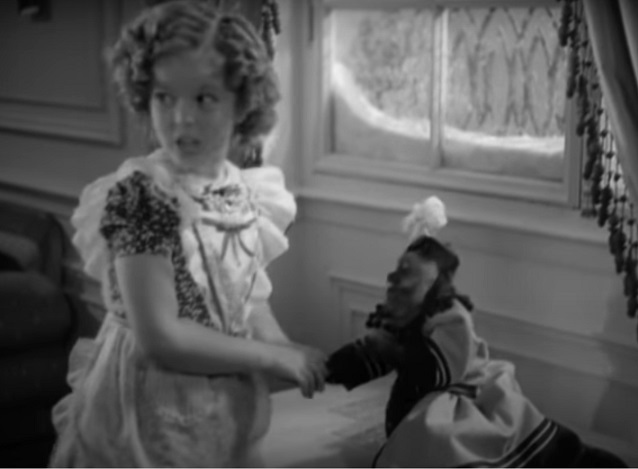
In the story of Heidi, Clara Sesemann presents the question whether the gap between the feral, the uncivilized and the civilized may ever be bridged by a synthetic code of conduct. This was also the main theme of My Fair Lady (1956), which in turn was based on the myth of Pygmalion, which was the hopeful counterpart of the grimmer story of Prometheus, from which we got Frankenstein (1818).
The story of Tarzan (1912) modified the classical story of the princess who was raised by commoners, which originated in the 12th century story Le Fresne (hence the name Andy Dufresne in The Shawshank Redemption, 1994; another famous ancient version was called Fair Annie). Both Le Fresne and Tarzan contemplated the distinctiveness of social classes, but in the 20th century this question was tied to the novel theory of evolution by asking whether a child that started out with an upbringing by apes could still attain its humanity through exposure to modern civilization.
🔼Mrs. Dalloway
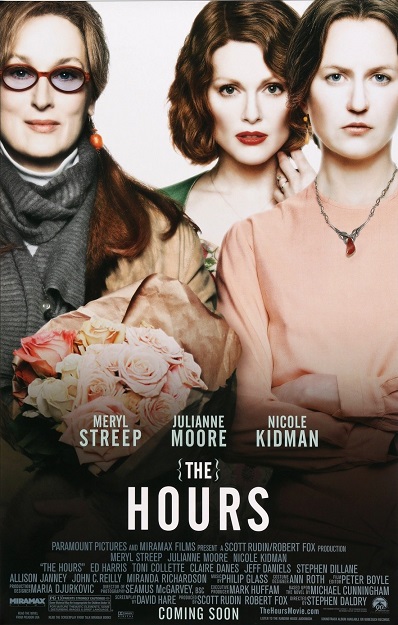
Are human classes as inherently and fundamentally separate as different species, or are they variations within a single one? Is an unlettered peasant the lowest of the world of aristocracy or the highest of the world of disposable animals? A child that grows up in a family that has fostered culture for generations is imbued by centuries of accumulated wisdom, and isn't wisdom the sole divisor of man and ape? Isn't the difference between the classes a matter of families rather than individuals? Doesn't nature itself teach that populations split when inherent qualities prove incompatible and each population selects what it perceives as preferable?
In the 19th century people wondered in earnest concern whether the gap between learned families and not learned families might actually be bridged within one generation of schooling, or even whether it was fair to treat a monkey like a pet or dress it up and teach it manners. Doesn't a monkey want to be a monkey, happy and free in the trees, and not be subjected to the very civilization her family so obviously rejected?
Trying to turn a monkey into a lady outrageously suggested that a lady might revert and become a monkey! It suggested that the process of natural evolution could be manipulated at will the way one would select flowers in a shop, should one desire to buy them herself. But wasn't evolution driven by the desire of one's family, and wasn't the desire of one's family declared by what one personally reached for? Whether by reaching for flowers, fruits or perhaps another person, hadn't humanity evolved simply by reaching for a higher existence, simply by wishing it? Wasn't early man the brightest and best performing among the primitives, and like Tarzan king of the apes?

In the 19th century, manners and form were seen as a sort of behavioral equivalent of the modern police force that emerged from the working class but joined the ruling class and was charged with keeping the workers under control. Both the names Clarissa (Mrs. Dalloway, 1925) and Clara (the cripple girl from Heidi) relate to light (hence words like clear and clarity; clair in French) and has become specifically attached to moonlight (hence the utterly grim 18th century French folk song "Au clair de la lune", which in turn is similar to the deeply sinister Frere Jacques). The name Clara is also connected to the Order of Saint Clare, the feminine Franciscan order established by Francis and Clare of Assisi, whose emphasis on poverty was not based on mere piety but offered a practical solution to the same problem of money that prompted Marx to write Das Kapital.
The origin of the family name of Clara Sesemann is formally unknown but we here at Abarim Publications suspect it relates to the Latin diocesis, which stems from the Greek διοικησις (dioikesis), which in turn consists of δια (dia), through or throughout, and οικος (oikos), "house" or economic realm (hence our word "economy"). Through the German languages this word gave rise to names like Kiesel, Kessel and Kesel, which denoted the landlord of an economically autonomous region or "house" and in the Netherlands it became attached to the homophonic name Cees, which in fact derived from the Greek name Cornelius, in turn from the Hebrew verb קרן (qaran), to radiate or have horns.
All this indicates that the name Sesemann is a form of Cees Man, and means Cees Wrangler in the same sense that cowboy means cow wrangler. The name thus means Moon Beam Wrangler or Horn Wrangler. In Heidi the family Sesemann is a nuclear version of what George Orwell would later envision as the much more sinister Thought Police: not merely the intelligence agencies of our modern world but all Black Ops and unregistered and autonomous vigilante initiatives. This social phenomenon is traditionally discussed in the superhero genre, starting with Superman (1938) and more recently in stories that deal with rogue military operatives: The Punisher (1974), The A-Team (1983), Commando (1985), and so on. A trend in recent fiction suggests that Black Ops are mostly understood to require the operative to take leave of his human conscience, and the inevitable derailment that ensues is discussed in stories such as The Bourne Identity (2002) and caricaturized in comedies such as Analyze This (1999) and The Matador (2005).
Non-violent and thus mostly ineffective superheroes such as Doc Brown (Back to the Future, 1985) are unfortunately rare in modern narrative, which is a systemic failure lampooned in Mystery Men (1999) and more bravely contemplated in movies like Watchmen (2009) and The Gathering (2003), which tell of a group of powerless immortals, in turn based on the Watchers from the Book of Enoch (250 BCE) and the later European legend of the Wandering Jew (13th century CE). That European legend originated in the character of Cartaphilus (= Lover of Paper), the porter of the house of Pontius Pilate. The story goes that when Jesus had been arrested and arrived at Pilate's house, Cartaphilus felt Jesus walked too slow and struck him with his hand and told him to get a move on. That act fated him with both immortality and impotence, so that Cartaphilus must always watch but can never influence any of the events between the crucifixion and the second coming.
In modern times the general public seems to agree that while the Thought Police is obviously of evil origin, it's not wholly without virtue and when properly governed even essential in preserving the modern world. From 1993 on, the Thought Police's existence in the world, its operational techniques and even its virtues are scrutinized in the testy antics of the fictional character named Hellboy. Hellboy's side kick Abraham Sapien corresponds with the powerless Cartaphilus and together they represent the ever colorful union of Red Barony and Blue Nobility we discussed earlier.
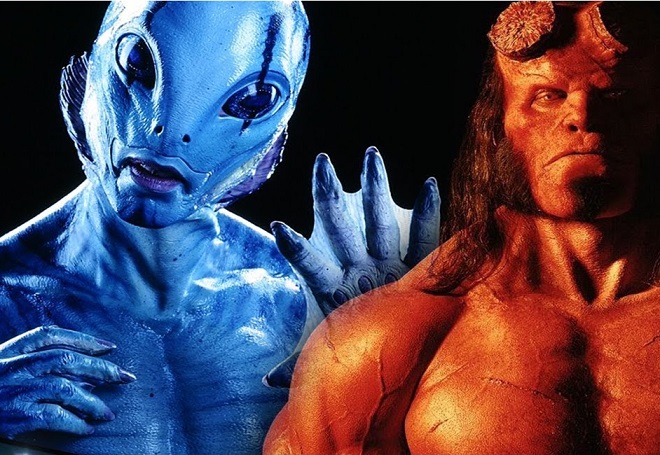
The name Raymond comes from (1) the proto-Indo-European root reg-, straight line (hence words like regulate, regal and reign), and (2) the familiar Latin word mundus, which is often used to mean "world" but which in fact relates to a broadly used adjective that is also found in Sanskrit and which means clean, cleansed, purified. This helps to explain Raymond's relation to Charlie Babbitt in Rain Man (1988). The word "mundane" received its undeserved negative meaning in a similar way as the word "vulgar", namely from self-congratulatory elites who reviewed the common masses with hopeless disdain. Prior to this happening, the word mundus began to mean "hand" in old German (comparable to the Spanish mano), which explains Hellboy's massive right hand (it ultimately depicts his desires-to-be-filled; Exodus 15:6, Psalm 77:10, Mark 14:62, Acts 2:33). His mismatched arms make Hellboy also a living anti-clock, or perhaps even counter-clock, which in turn ties into the Benjamin Button premise.
In 19th century Netherlands the predicate Cees or Kees came to denote a working man, hence the adoption of a word like smeerkees for a besmirched industrial worker (a modern Black Pete). The word smeerkees actually stems from a Yiddish term consisting of sjemiere, meaning guard, watch or police (hence both the name Samaritan and the Dutch word smeris), and ches, smart or clever (hence the Dutch adjective gis).
This Yiddish term sjemiere ches in turn was imported into Dutch via the old German word Schmierkäs (policeman), which invited both the formation of the Dutch noun smeerkaas for liquid yellow cheese and the further nickname Jan Kaas (John Cheese). In the US this name Jan Kaas appears to have evolved into Yankee, which likewise came to denote a worker in modern industry (predominantly north) rather than a traditional rural laborer (predominantly south). Both this name and Clara Sesemann's inability to walk obviously comment on the quality of society's foundation, which in the 19th century was becoming perforated like cheese by people who embraced the first thing they read because they lacked the discernment that comes from extensive exposure to the humanities.
Living in a police state is like living in a yellow submarine, which could be great fun provided someone sound is at the helm. The flipside of a welfare state, however, is of course that everybody assumes that everybody else is taken care for, which leads to loneliness among the elderly and detachment of folks who have trouble connecting. And members of traditional priest classes — people who are trained or naturally talented to shepherd people's dreams and pick up on the subtle traumas of mankind — are left unemployed, to society's great detriment.
Both Flora Tristan and then Karl Marx famously urged the proletarian class to unite but appear to have misjudged the importance of a naturally emerging and properly functioning wisdom class to police the inklings of the awakening masses. As history notes, a synthetic wisdom class consisting of hired goons doesn't have quite the desired effect. Marx' ideas rang true at the surface, and possibly deeper than the mere surface, but were nevertheless largely rejected by Europe's intelligentsia. They were embraced decades after they were published and only by nations whose gentry had been massacred and whose literary traditions had been usurped.
The name Adelheid is closely similar to Edelweiss (= noble white), which explains why in The Sound of Music father George insisted on singing Edelweiss just prior to his family's flight over the mountains to Switzerland.
🔼The smell of napalm in the morning
The fear that a further misappropriation of science might lead to the further self-annihilation of the Western world, whose lands would subsequently be appropriated by the heathen hordes, was explored in the massively successful film Planet of the Apes (February 8, 1968), which conveniently came out in the year of the Tet Offensive (January 30) and the My Lai Massacre (March 16).
The strained relation between mad scientist and fledgling police force that was initiated in the story of Heidi and Clara Sesemann was masterfully revisited in The Silence of the Lambs (1992), in which Clarissa Starling was made to deal with the incarcerated and spectacularly ouroboric Hannibal Lecter. The latter's name identified him as the intersection of the art of public oration (for which Hitler was the poster boy but which is utilized by any convincing lector) and the madness of the Punic Wars, which is where the Roman Republic began to destabilize. Having Hannibal at the gates became Rome's proverbial image of fear, and that fear of annihilation by a foreign neighbor is precisely what motivated Rome to destroy Carthage and descend into its own Imperial abyss.
The recent reboot of these themes resulted in Rise of the Planet of the Apes (2011) in which a well-meaning scientist named Will Rodman (an undeservingly confident Master of Ceremonies on a nominal and narrative par with Ruby Rod from The Fifth Element, 1997; both alluding to William of Orange, the Manhood-lover) tries to cure Alzheimer's disease in humans but inadvertently creates an intelligent ape named Caesar. Caesar escapes Will's facilities and gains ape followers as his intelligence grows and the world of Caesar's origin spirals ever deeper into insanity. The ultimate conflict between what remains of the West and Caesar's rising realm is reviewed in War for the Planet of the Apes (2017), in which a mad Colonel explains the virtues of genocide and filicide in typical Nazi logic.
This character of the mad bald Colonel was created in Apocalypse Now (1979), which not only meditated on the ultimate reasons and effects of the West's war on the East (like the original Planet of the Apes had), but also offered a perversion of the once so romantic idea of an English Anna bringing culture and sophistication to the bald king of Siam (The King and I, 1956). That story had originated in a 1944 novel based on the memoirs of a British social activist named Anne Leonowens who had been a school teacher to the royal family of Siam in the 1860s. Similar well-meaning but ultimately disastrous interference of 19th century Europeans in the cultural development of the Orient was reviewed in The Last Emperor (1987), which was based on the deposed emperor Puyi's own memoires. In The Last Samurai (2003) an American learns that a violent conflict between modernity and tradition will render death to tradition but madness to modernity, and travels to Japan to do better.
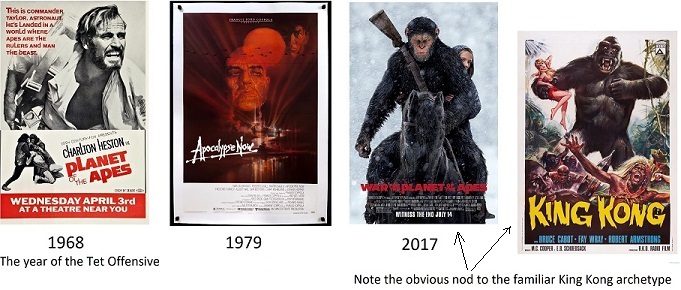
Apocalypse Now was based on the 1899 novel Heart of Darkness, which reviewed the role of commerce in dividing between civilization and savagery, which is ultimately where any empire begins. The reason for the existence of the modern Military Industrial Complex strongly resembles the reasons for the Marian reforms in the Roman army, and the transition from pressured commerce to organized crime to legitimate business was reviewed in The Godfather (1972), which is praised until today as the greatest mafia movie ever made. The gangster genre has existed since the beginning of cinema but the specific mafia sub-genre saw the light in 1931 when Warner Brothers released Little Caesar.
The leitmotiv of the repeatedly shaved head is Biblical and denotes latter day madness: "Your tongue devises destruction, like a sharp razor, O worker of deceit" (Psalm 52:2, also see Isaiah 7:20 and 2 Kings 2:23). A shaved head that was shaved only once may denote the completion of a cycle and signify a fresh start (Numbers 6:5, Ezekiel 5:1, Acts 18:18). Continuously shaved heads and straight razors turn up in modern stories to signify collective and lasting madness brought about by organized terror and deceptive narrative. The Hebrew word for hair, namely שער (se'ar), yields the verb שער (sa'ar), which means to be very afraid (literally: to be very hairy). A bald head signifies a mechanical desensitization to fear, and is the psychologically destructive counterpart of developing a sense of humor.
Other ostensibly shaved heads: Travis in the Taxi Driver (1976), the Kurgan in Highlander (1986), Marsellus Wallace in Pulp Fiction (1994), Rasputin in Hellboy (2004), and of course DC supervillain Lex Luthor. Straight razors: Sweeny Todd (1846-2008), Bram Stoker's Dracula (1992), Skin (2018), Zeroville (2019). The track by Iron Maiden called The Evil that Men Do (1988) quotes and elaborates on the crazy Colonel's razor speech.
The troubled relation between crazy science and fledgling avian that was so acutely displayed in Silence of the Lambs was first discussed in another seminal Charlton Heston movie, namely The Omega Man (1971), which was in recent times paraphrased as World War Z (2013) and remade as I Am Legend (2017).
🔼The light through yonder window
Ask anybody about the number pi and they will swear on their life that pi is a very important scientific constant whose value is 3.14159. This is perfectly true, provided we are on a perfectly flat surface, which is extremely rare in nature. On a spherical surface, pi must be smaller than flat-pi and its value depends on the ratio between the diameter of the sphere we're on and that of the circle we are reviewing. But in nature a perfectly spherical surface happens only at a precise distance from a solitary central mass, so that's rare too. On a hyperbolic or irregular surface, which is everywhere else, pi is not even a constant and its value can be anything. Ergo, in nature, unless you know everything, certainty is futile and scientific theory is just another fiction that tries to approach reality but never really gets there.
Truth, on the other hand, is not a single theory but the focal center of all fictions; the only narrative that all humans can honestly and wholeheartedly agree on. All human positions surround that central Truth like a Dyson Sphere, and although this sphere has a variable diameter, life can only exist within a certain range of that diameter. The closer the diameter of the Dyson Sphere approaches the diameter of the solar Truth, the less one perspective can see of the others and the greater the chance is that the viewer will burn. The further away from the central Truth one viewer positions herself, the more she can see of the others, but the colder and less inspired and less centralized all perspectives become. By the time one human sees all other perspectives, the central Truth has shrunk to a distant pinhole, and all perspectives forfeit cohesion and the one sees only a sea of unrelated madness.
To make matters even more complicated, mankind's great story happens in three acts, namely the story of planet earth, the story of the biosphere and the story of humanity's collective mind, and these three acts are really three self-similar versions of the same meta-narrative (with a polar reversal with every evolutionary transition between acts). Likewise, the ancient and widely attested myth of the World Turtle envisions a giant turtle (planet earth) that carries a number of elephants (biosphere) that carry the world (human cosmos). The apostle John says it like this: there are three that testify, the Spirit [human cosmos] and the water [planet earth] and the blood [biosphere]; and these three agree in one (1 John 5:7-8).
As with any fractal, it doesn't really matter when you jump in, and after the creation week, the Torah tells the story of the Father and the Three Sons in three self-similar instances, like a triple trident with a broken symmetry: father Adam (all life) and his sons Cain, Abel and Seth, father Noah (all mind) and his sons Shem, Ham and Japheth and father Terah (all civilization) with his sons Haran, Abraham and Nahor. The last of the triplets is actually a quartet, because Sarah is a daughter of Terah and half-sister of the boys (Genesis 20:12). This is significant because the line of Cain also terminates in a masculine triplet and a single sister (Jabal, Jubal and their half-brother Tubal-cain and his sister Naamah; Genesis 4:20-22). And as with any fractal, it gets a lot more complicated than that, but a roadmap is explained by the crossroads, as much as a rug by the crossings of its threads.
To an upright ape, the earth is a flat disk of about 5 kilometers in all directions; about the range at which great apes can see a campfire. From the top of the highest tree, the edge is about a day's hike away. Visionaries who, for some deep cognitive reason, are by their nature tuned into the material world see the spherical earth. Visionaries who by their different nature are tuned into the biosphere see a hollow earth, with "people" living just above and below ground. Visionaries who naturally envision the human mental cosmos see a flat landscape (Mormons, flat-earthers). And all perspectives are equally valid, provided we are also familiar with the geometry we're reviewing.

When the young earth had cooled off enough for water to condensate, very warm oceans began to form and a hydrological cycle arose almost solely based on earth's internal heat. Much later, when the earth had cooled off enough for sun rays to reach earth's surface, the sun began to drive the hydrological cycle, which washed the land and brought its minerals to accumulate in the World Ocean like a River of Life.
But the World Ocean was not the only point of termination for the River of Life. It also terminated locally in countless endorheic lakes that hung like leaves from the branches of the Tree of Life. When the Bosporus was still closed, the Black Sea, where proto-Indo-European emerged was as endorheic as the Salt Sea, where Hebrew emerged. Self-similar endorheic terminations in the biosphere are living fossils such as sharks, turtles, pelicans, alligators, horseshoe crabs and so on. In the mental world, endorheic terminations exist in cultures that have remained largely unchanged over long periods. This may be because of geographic isolation (Amazon tribes), sheer functional perfection (Judaism), or trauma and coercion (Homecoming, 2018). In movies that are obviously metaphorical and play in cities, the cultural manifestation of the endorheic phenomenon is often referenced as a cul-de-sac (Cul-de-sac, 1966, The Burbs, 1986, Stranger Things, 2016).
The Greeks were fearful of the multi-headed River of Life and called it Hydra. The story of their hero Heracles who went to slay Hydra as it arose on orders of Hera to slay him, obviously tells of the struggle between the masculine cultural superstructure versus the feminine one, or patrilocalism versus matrilocalism, the Kurgan versus the Highlander, and so on.
🔼Out of Egypt

When evolution theory was first proposed, a gradual change from simple atoms to complex chemical compounds to very simple life to very complex life was an utterly plausible idea. But then DNA was discovered, and that idea was quickly muffled out the airlock. It turns out that even the simplest forms of life are based on a genetic code that is vastly more complex than the most complicated chemical compounds that occur freely in nature. Life showed up on earth like a marvelously complex and fully formed machine, that hit the ground running and has been sorting itself out ever since without essentially changing.
To deal with this conundrum, DNA was hypothesized to have formed among the stars and wafted to earth like dust falling out of the sky. This hypothesis is called "panspermia" and is surprisingly Biblical. After all, Adam was first created and only then transported to the Garden of Eden. Israel was first created and only then brought to Canaan. And the Body of Christ is first created and only then moved to the heavenly Jerusalem. Here at Abarim Publications we further guess that DNA formed in interstellar space by literally forming a chemical equivalent of the dynamic distribution of mass in the universe (like dust settling in a Chladni pattern caused by gravitational waves), and that "life" is a quality that is inherent to subatomic particles, and which grows more or less complex but cannot, like energy itself, become any more or less within a closed system.
The rather more established hypothesis of panspermia further proposes that DNA perished on dry land but managed to take root in the deepest oceans (John 13:8). The most rudimentary forms of life — collectives of complex molecules that first accepted and then encapsulated the stellar visitors and began to dance to their tunes — appears to have originated at the pitch black bottom of the still very hot ocean, where the sun's rays couldn't reach and where living things could feed off the heat of earth's own core that came out of hydrothermal vents. After quite some time, primitive life had filled all the available niches of the world below, and especially when the earth's oceans began to cool off, competition over the hydrothermal vents became fierce.
Ultimately the weakest specimens were driven away. Since the only way was up, against the force of gravity that pulled all things down and into the direction from which the stellar visitors had come, some outcasts of already unusually high up colonies must have made it all the way to the surface, which was then a completely barren wilderness where life could start evolving anew, with the least worthy members of the saturated bottom world as seedlings and pioneers (The Mission, 1986, Ad Astra, 2019).
When life rose to the surface, it forged for the first time in the history of earth a clear symmetry break in the governing roles of the sun and the moon. Life ignored the moon and began to specialize in photosynthesizing sunlight, which created two very distinct ranges of activities that life was engaged in: namely a range of behaviors associated with the daytime (photosynthesis, outer economy) and one associated to the nighttime (waste management, inner economy). There was as good as no free oxygen in the atmosphere at that time, but that began to change when living creatures began to dispel oxygen as a waste product of photosynthesis. When again all niches of the surface world were filled, competition began again to push the weaklings out.
Both life and the hydrological cycle centered on the sun but tides came from both the sun and the moon together. And in between high and low tide was a band of hydrological twilight where the latest class of weaklings was pushed into. Thus periodically exposed to increasing oxygen levels, which was then still a toxic garbage, these misfits somehow learned to invert their cellular respiration and began to breathe in oxygen.
And then these oxygen-breathing freaks broke into two camps: one camp went onward, out of the tidal zone and onto dry land to colonize earth's land mass whilst breathing via lungs, whereas the other camp developed gills and went back down to the depths from whence they had sprung and joined their anaerobic cousins there. The garbage of the first photosynthesizers, namely oxygen, had spread throughout the world and had even reached the deepest ocean floors through the processes of convection and diffusion. The first oxygen-breathers were garbage-collectors and they grew until their oxygen consumption equaled the production of oxygen-exhalers. As oxygen levels stabilized, life consisted of a completed cycle in the water world and a penetrative thrust onto dry land. This creative principle is so universal that it was later captured in the symbol for the male gender: ♂ (its female counterpart, ♀, we will visit below).
In literature this creative principle is most enduringly portrayed as the Jewish cycle, from their origin in Canaan, their local move to Egypt, their exodus back to Canaan, and their exile to the other worldly Babylon, from where a minority returned to Canaan while the majority remained and evolved on into Persian Jewry. From the latter in turn members came to Canaan to identify the Christ who in turn identified the "fishers of men" (Matthew 4:19). As an endearing narrative element, the descent of respiring creatures was represented as Frobscottle in Roald Dahl's The BFG (1982).
🔼For whom the bell-curve tolls
Most scientists agree that life came out of the water and developed away from the beach and toward a figurative summit of dry land. Before there were lungs or gills, the landlubbers split into flora and fauna, and each developed semi-independently: flora (whose individuals were shaped as three dimensional trees) created the habitats and the animals (whose individuals were shaped as four dimensional trees) evolved to fit into them. Rocks covered in moss yielded fields of ferns, then the highest trees and the whole world was a jungle.
Nature invented the brain to govern the digestive system and that is why modern human governments govern the economy and have little regard for anything else. Nature invented the senses to find things to eat, not to look for pleasing views and happy sounds. This in turn means that humanity should not expect any sort of salvation to come from the governments. Although our governments consist of many smart and noble human individuals, their collective identity and mental processes are those of beasts whose minds are tuned in solely on the next meal, and who are not equipped with the mental facilities to be concerned with the preservation of the habitat. If humanity will be saved it will be saved by something completely other than economic concerns and by human collectives completely other than governments.
Consciousness was a side effect of the brain's self-organizing, possibly even achieved when certain lesser functioning elements of the primitive brain were literally driven outward. Consciousness took over the body's sense of purpose and ultimately its sense of self, but it still appears to be largely confused about how it fits in. Living things are facilities to produce feces. That's why nature makes and preserves them. They churn the biosphere and consume old generations to make way for new generations so that everybody can grow. And that means that speaking one's mind is self-similar to physically taking a dump (Matthew 15:11). Both physically and mentally we're little more than worms chomping our way through the world leaving trails of steamy droppings wherever we go.
Opposable thumbs gave our family sway over the trees. But grasses had emerged and savannahs invited our family to stand upright. Flowers came and separated the world into creatures that could see colors and those that couldn't.
Multi-cellular life split into nocturnal and diurnal creatures, which both centered their lifestyles on the sun, not the moon. It appears that a diurnal lifestyle was the norm but that certain misfits were driven into the night. The "normal" diurnal creatures lived in a world where the light levels were constant and varied only per season. The nocturnal misfits learned to live in a world where the light levels waxed and waned from full moon to pitch black every month. Night life required special physical features (whiskers, specialized eyes, bigger ears, better smell) and it appears that every major animal family had misfits that were driven into the night.
Judging from key physiological traits, the whole of the mammalian line appears to have evolved out of creatures of the night, which were hiding there from their diurnal reptilian oppressors. When the dinosaurs had died off (or had taken to the skies) the mammals returned and repeopled the day, and again filled niches. Competition began again to separate the oafs from the elite. Every mammalian family in present existence has its nocturnal cousins, except for the great apes who are all diurnal. That suggests that great apes have always been so successful that they ultimately didn't compete with any of the other animals, and that the poorest performing great ape still did better than the next best competitor.
The weapon of the great apes was their social cohesion, which allowed them to operate like a web or drag-net rather than a mere pack. The main concern of the alpha, we may assume, was to maintain an uncontested social order of elites that were great at defending the territory and attacking apes from other tribes. Modern scientists have rather shockingly revealed that great apes are much better than humans at keeping track of a dozen or two highly dynamic similar elements, which suggests that while the best functioning apes were chasing their foreign counterparts through the trees, the flunkies of both sides were standing by scratching their heads and having no idea who went where and why. This probably forced the flunkies to earn their keep by serving as lookouts or even being a living shield, which isolated them even further from the celebrated core. Since the core was obviously most compact and cohesive, the flunkies were literally spread thinnest, and it seems plausible that their physical separateness prompted them to invest in vocal data transmission rather than visual acuity and gestural symbolism.
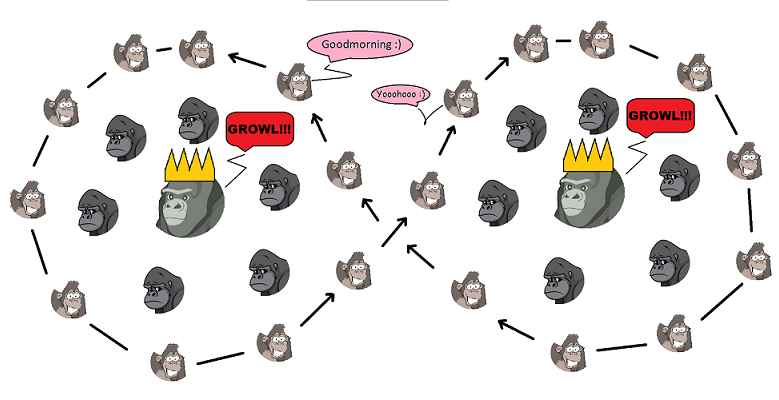
The superior apes at the cores of their communities lived by their tribal identity, which suggests that the flunkies may have begun to feel more akin the flunkies of the neighboring tribe than their own tribal elite. Perhaps the tribal lords noticed that their flunky-class was playing some kind of silly shouting game and that their behavior was drifting ever further away from the ape norm. What the lords didn't realize and couldn't realize was that the flunkies were forming their own tribe, and that they were engaged in a conversation that was carried by all flunkies of every tribe in the forest. What the lords also didn't realize was that the descendants of the flunkies would soon rule the world while their own descendants would cower ever deeper into the forest.
It appears that speech began to be needed most in the outer ring of simian society, and that this weakling underclass of the great apes ultimately broke away from its mother population to create its own barony, then higher nobility and finally a monarchy. When humans developed speech and later script, they learned to describe the day in a widely authoritative standard, but also discovered that the night is partly governed by a shared lunacy and partly by a vast host of stars. The white man appears to have arisen in the Caucasus Mountains, which has served as a natural border between states and empires since the beginning of history. It still is one of the most linguistically diverse regions on earth, which suggests that this region has always served as a dump ground for all sorts of human flunkies.
The classical idea that evolution is driven by natural selection and survival of the fittest is patently false. It's driven by survival of the weakest (1 Samuel 2:1-10, Zechariah 4:6, Matthew 11:28, 2 Corinthians 12:9-10). The fittest always create tribes and the weakest always form a river that runs through them. It's why rivers of electrons flow by islands of nucleoids, why rivers of blood flows by islands of cells, why rivers of money flow by islands of production.
🔼What a piece of work is man
In all three acts, there are two main habitats, namely (1) the water that starts where the molten core ends and stops at the beach, and (2) the dry land that starts at the beach and whose frozen peaks extend high into the atmosphere. When the water is invaded by the molten core, it forms chimneys and some convection but that's all. When dry land is invaded by the core, it blows off mountain tops and kills entire ecosystems.
Analyses of moon dust have revealed that the moon was once part of earth, and that the curious division of the earth into Pangea (all its landmass) and Panthalassa (a huge hole, which would later fill with water to form our oceans) was due to the removal of the material from which the moon would form. That means that our oceans and the moon are closely related, and are obviously still so in our mythology.

The water world is one of hyper-liquidity. It begins in spontaneity and may grow into creativity and free expression but may also descend into anger and violent aggression and ultimately become a raging hell of madness and utter destruction. The dry land originates in prudence that may lead to mastery and governance but may also retreat into ever rising inertia and finally become a frozen wasteland whose summit of death reaches above the air.
The dry land relates to reason, science, brain, wind and respiration, whereas the water world relates to emotions, art, belly, ocean currents and the hydrological cycle. A large majority of world literature plays on the stage of this dynamic landscape, and contemplates the outer limits between which a peaceful and happy cultural biosphere is sustainable, whether on a personal, domestic, social or international level.
If the earth and moon move too far away from the sun, the earth's summit freezes solid and begins to spread death from the top down. Most of its slopes will become unsuitable for life and its massive bulk will even stop the wind from blowing. Its base will cover all of dry land, the oceans will freeze and become solid and all liquidity will cease. In this case, death is cold and comes from hyper-normalization, static starvation and asphyxiation. Global death by cardiac arrest might be averted through a technological descent into the core and a surface rat who tells all (Journey to the Center of the Earth, 1864, The Core, 2003).
If the earth and moon move too close to the sun, the earth's overheated core will warm up the surface and spread death from the bottom up. It will melt all ice so that sea levels will rise and land is reduced to small islands (Waterworld, 1995). Ultimately it will boil off the oceans and make the planet uninhabitable. In that case, death is hot and comes from hyper-liberalization, dynamic violence and insanity. Prior to that, salvation might still be achieved when a lone-wolf Max enters the "underworld" powerhouse of Barter Town and claims his surface victory of over Master Blaster (Mad Max; Beyond Thunder Dome, 1979).
As many fans will attest, this Song of Ice and Fire (1991) is the base of all dynamics on earth, from the currents of molten magma to the peak of Mount Everest, from the earliest plants to the greatest apes, and from the earliest symbol to the vast depositories of data of the Internet.
🔼The Middle Way

The technique of product placement that was so bravely discussed in The Truman Show (1998) is unparalleled by the practice of inserting references to Jewish history and pagan mythology — references with relative mass, that cause streams of cognition and a hydrological cycle of reason. The perpetual swing of the pendulum between a moon & stars minority in a sunny land (summer) and a sunny minority in a moon & stars land (winter) makes sure that everything always stays dynamic, and that when Truman and Silvia finally meet, Truman will have to enter Silvia's world and begin to be the minority there.
In between the two seasonal extremes lies a band of equinoctial tranquility that in humanity's narrative runs from Arabia to Israel to Crete and Illyria to 16th century Holland, Scotland and finally the Americas. Assuming that this line adds up to a great circle, this circle also runs through New Zealand (and these themes are discussed in the double feature A River Runs Through It, 1992, and Legends of the Fall, 1994). This in turn suggests that the first counter-swing in mankind's mental pendular history began when star-minded folks from the Australian or New Zealand extreme returned to the day-minded folks of the Middle East, and set off the whole Anunnaki legend in Mesopotamia and effected modern history. Allowing for continental drift (which is also cyclic as Pangaea was merely the latest gathering and certainly not the only one), this cultural equinox suggests that our spiritual world has something of a north pole somewhere around Japan, and its southern pole somewhere near the island Tristan da Cunha in the southern Atlantic (which should help out the folks who naturally envision what became the Atlantis legend).
This island is part of the most remote archipelago in the world, and was formed from an extensive upwelling of the earth's mantle. Its main island looks like an ocular iris, centered on the volcanic pupil of Queen Mary's Peak. It has a diameter of about 11 kilometers and was "discovered" in 1506 by a wandering Portuguese explorer. The story of this serendipitous discovery at a time when the age of exploration was just beginning is largely maintained by people who have no idea what the chances are that someone accidentally discovers a very small needle in a very large hay stack, especially when that person neither knew about the needle nor had any business being at that particular spot in the hay stack. In fact, the whole history of Tristan reads like a condensed commentary on the last 500 years.
Initially the Portuguese were unable to land on the island, but Dutch sailors of the East India Trading Company did, in 1643. The French first surveyed and charted the island in 1767. The first permanent settler landed in 1810, namely a certain Jonathan Lambert of Salem, Massachusetts, who declared himself the island's sovereign ruler. At the time there were two other men there. More settlers trickled in and rule passed into Italian hands, then Scottish. In 1853, the island became governed by a man named Cotton, who previously had guarded Napoleon on St. Helens. After him the throne befell a Dutchman named Pieter Willemnszoon Groen. In 1885, three quarters of the adult men were lost at sea and a sudden invasion of rats ravished the island's wheat. In 1906 the island's cattle died and the potato failed. During the second world war the island was assigned windtalker duty. In 1958 an atomic bomb was set off 160 kilometers above and 175 kilometers southeast of it (an operation called Argus). In 1961 Queen Mary's Peak erupted. Until then the inhabitants had always refused to leave but this eruption left them no choice. They lived in England until their return in 1963.
Undeterred by claims to the contrary or the wishes of the people who lived on it, in 1816 the British annexed the islands and formally it has remained British ever since. A total solar eclipse is expected to pass over the island in 2048.
It's commonly expected that Bitcoin will be first embraced by the world's most ravished economies, which nowadays reside on the coasts of the south Atlantic basin. Whoever invented Bitcoin associated with a Japanese identity under the name Satoshi Nakamoto, which sounds as much as a common Japanese name as a reference to an Aramaic Targum on Deuteronomy 19:15-21, which in turn is commented on in Matthew 5:38-42.
When we feed the portraits of thousands of people into a computer and program it to produce a synthetic average, the result will be a portrait that many people will find very attractive (David Perrett, In Your Face, 2010). When at a country fair, a thousand passersby are asked to estimate how many beans there are in a large glass jar, the average of all their guesses tends to be more accurate than the best individual one (James Surowiecki, The Wisdom of Crowds, 2004). Only when a monarch is able to personify the perfect average of all artistic expressions of his barony, he will be perceived as perfectly wise and perfectly beautiful, and quickly be recognized as the very inspiration of all artistic effort.
A literary archetype forms when its original character resonates with an unusually large section of the audience. The first time this character is used it's just one of many, like an unusually pretty girl among the maidens, and after this original finishes her job in her native narrative, prudent authors resurrect her in hardly disguised form in a similar context of a similar narrative. Authors whom the audience reward with popularity, honor and purchases are the ones who move the original even closer to the ideal perceived by the audience, and although many may think that the author is brilliant, the source of light is really the character that already lived unrecognized in the audience's subconscious mind.
This solar center of humanity's mind has been called Akashic Records by modern theosophists, the Preserved Tablet by Islam, and the Hall of Record in Egypt. It's personified in literature in widely varying forms from Paradise and the Promised Land of the Bible, to Shangri-La and the Fountain of Youth, the Holy Grail and Unimatrix Zero in Star Trek Voyager.

🔼The Gathering
Humanity's collective sense of attractiveness is reflected in humanity's stories, and the image that is thus slowly formed is formed by the sculptor that is the market, who wields the chisel that is the artist. That in turn means that the artist doesn't really know what she is portraying, and she is certainly no authority in matters of the image's ultimate meaning. Instead, only the whole market knows what the image means because only the whole market is reflected in it. That in turn means that humanity's deepest concerns and most intimate confessions are clearly displayed in her most profound and best rewarded stories. The more collectively appreciated our stories become, the more they confess and the harder it is to keep anything a secret.
In The Postman Always Rings Twice (1934), not James Cain but the applauding market combined the broader dynamics of the Second Temple with the familiar motifs of bell-ringing and Saint Nicolas (Nick Papadakis), resonating with the self-similarity between the rise of the Roman Empire in the last century BCE and the rise of National Socialism in the 1930s, whilst contemplating the vanity of killing Nick as it did with the surprisingly wise The Man Who Killed Hitler and Then the Bigfoot (2018).
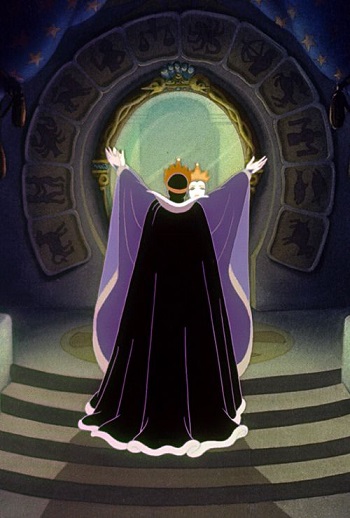
Humanity's paintings, novels and movies are coalescing into a perfect reflection of mankind's entire past going back millions of years, in utter detail, naked and uncovered by any false narrative or cover up (Revelation 20:12). The real story of humanity will be told backwards in a narrative running forward (as in turn portrayed in Benjamin Button), and the first outline of a brutal truth has already been clearly seen by many. Whoever has something to hide will no longer have a means to, and whoever is the thing hidden will be set free (Isaiah 61:1, Luke 23:30, Revelation 6:16).
Tarantino's answer to Beethoven's Ninth Symphony sternly warns that where the victors go home to tell the tale, the aborted will always re-emerge with the power to re-write the tale, and turn water into wine or even fire if need be. Dining on garbage and abusing an old blind king, and then blaming whatever child resides within your neighborhood for the mess you made is something that will not stand in a world where the rug ties the room together.

Note the familiar monkey, the moon and the blue genie.
Carpets, namely, were invented when people began to cover their mud floors with worn and torn leftover rags that had absolutely no function beyond being trampled on. Previously these rags were simply burned for the garbage they were, but at some point people began to deliberate assign certain lesser rags the duty of covering the floor. The Persians appear to have first understood that the carpet relates to the interior of a house, and the family in it, the way the house's structural foundation relates to the whole building. Hence they decided that carpets should be precious and beautiful and began to weave prime thread into elaborate tapestries. Some even said that certain carpets were so special that they could take flight and that king Solomon would take his whole court for outings on one of them.
Should anyone decide to pee on that rug, the Dude will surely have himself another Kurgan and go bowling with his silly friends and other barely disguised champions of the Great Bowling League. Sadly, as Captain McCrae said, some men are hard to stop, and we all know what happened next. The Big Lebowski (1998) was prophetic. So was The Rock (1996). So was National Treasure (2004).
In 2013, Columbia produced White House Down, in which America's government proposes a global peace deal but is attacked from within by fake janitors, fake audio-visual repairmen, mercenaries formerly from several American government agencies, a corrupted secret service chief, a corrupted speaker of the house, and a corrupted CIA officer. A foreign hacker who hides in the warren beneath the house accidentally blows himself and his comrogues up. An under-qualified policeman, who merely tries to impress his daughter, protects the president and saves the day. That same year Millennium produced Olympus Has Fallen, in which Christmas at Camp David turns tragic when a security chief fails to save the president's wife from an accidental fall, which in turn was due to a slipping motorcade. Fortunately for the disgraced chief, North Korean terrorists attack the White House, and he gets to blow everybody up in an orgy of gentile vengeance. Both films received mixed reviews.
Not quite done with explaining things, Millennium produced part two of the Fallen series, namely London Has Fallen (2016), which excursed on the Gentilic über-folly that torture is good when the good guys do it, and meditated on why London might be delenda est if it actually is so. Too far out into the uncanny valley, it was panned by critics. The third installment, Angel Has Fallen (2019), discussed America's guardian angel — namely the art of the systematic full spectrum cover-up of high stakes failures and blunders — who has successfully protected the world from the devils of fascism and communism and God knows what else, but who is now globally questioned and doubted. It received mixed reviews, although the silence from the other side says more.
In 2018, Universal produced Mortal Engines, a keen portrayal of the damage done to the economy at large when the financial industry is allowed to roam about on its own wheels. The inevitable airborne resistance prevails on a flying carpet woven from outdated and discarded tech and the City of London is stopped and defeated, somewhere on the continent. Equally far out into the uncanny valley, it was also panned by critics. In June 2019, Columbia and Sony released Men in Black: International, in which a previously rejected but aspiring agent M (a.k.a. the sorcerer's apprentice's apprentice) finds MIB HQ in New York, promptly graduates and proceeds to annihilate High T of London whilst in the Eiffel Tower in Paris. It was panned by critics.
🔼Ghostbusters

The balance between Jewish and Gentile narrative has been carefully maintained over the last sixty years, but while there was slight dominance of Jewish narrative in the eighties and nineties during the glory days of Spielberg, the mood has slanted decidedly Gentile in the last twenty years. Movie makers increasingly make use of metaphorical material that the average audience cannot break down to its inorganic compounds, and that leaves surplus and wastes to accumulate in the culture's collective mind. These wastes are imaginary; they consist of images that don't derive from observations of the real world but from undigested consumptions of fantasy. Unfortunately, even imaginary images can have very real and measurable effects.
Small images combine into big ones when folks begin to compare their suspicions and create clubs and societies based on shared convictions that derive from shadows rather than enlightenment. Thus this "strange fire" (Leviticus 10:1) gains traction and funding and often academic momentum, which allows the vernacular to turn legit, which in turn attracts recruits who don't have the maturity to withstand the romantic lure of rebellion for rebellion's sake. This is called induced delusional disorder or shared psychosis. The almighty DSM prohibits a person to be diagnosed as being psychotic when the delusion is shared by a sub-culture, which means that once the delusion achieves critical mass, it's footloose.
The brotherhood of madness results not only in the collective denial of the Holocaust, but also in the denial of the moon landing. There are societies today that celebrate a shared belief that our physical planet earth is flat. Some say Elvis is alive, as are Nessie and Bigfoot. Many distrust the Warren Report and the official 9/11 investigations and suspect that the Bill Gates and the Bilderberg cabal are willingly architecting the world's demise. Many believe that aliens travel hundreds of light-years to abduct earthlings and experiment on them using medieval surgical instruments. Or that they visited our planet in the past and interfered with our evolution. And the list goes on.
A vast amount of academic and artistic momentum disappears into the black holes of folly. People rightly complain that the financial industry is gobbling up all society's talent, and that society at large is left starving for programmers, mathematicians and economists who don't work for Big Finance. But the same is true for the entertainment industry. The "scum of the universe" is abducting us: there's a vast global brain drain going on. We're getting drunk in more ways than one.
It's crucially important that a society's norm does not limit freedom, but instead offers sanctuary to deviations from the norm. A sustainable norm is a norm that contains and cherishes its own anti-norm. It's the principle where all joy, innovation and progress come from. All new technologies, all scientific insights and all artistic styles start from a controlled radical departure from the norm. Humor is a controlled departure from the norm of familiar daily routines. Theory of Mind starts with a deviation from the norm of one's own auto-centric worldview (Genesis 2:18). It all starts with a little craziness, and that's why a little craziness is so crucially important. It's why Christ was born in a barn rather than a palace. It's also why Paul urged Timothy to have a little wine (1 Timothy 5:23). And it's why the Torah urges to have a few alcoholic drinks with buddies on payday (Deuteronomy 14:26; also see 14:22).
The problem arises when someone can't find his way back to the norm, when he can't stop laughing or doesn't go home on payday, and payday becomes every day. And when he finally stumbles in, drunk and disgraced, all the money is gone and the family gets neither a little crazy nor food and shelter (Angela's Ashes, 1996). If the man keeps that life style up, he will traumatize his children for life and lose his family all together. His madness won't stay in the bottle but will also show up when he's not drinking. He'll start to see things that aren't there and descend into the lonely hell of surreality long before his body finally gives up.
Evolution is also based on a cell's inherent ability to depart from the norm. Without this ability, there would be no speciation whatsoever and we would all still fit in a Petri dish. Cancer, however, starts with one cell departing too far too long from the norm, and then passing the myth of its newfound liberty on to its neighbor. If the neighbor is dumb enough to accept it, the cancer spreads. If the neighbor is not dumb but has invested in the vocabulary required to persuade the cancerous cell back into a sustainable condition, the cell is saved and the cancer is staved. If the neighbor recognizes the freedom of the first cell to be a deadly folly but doesn't know how to address it, the neighbor will be saved but the first cell will die.
What the authors of the DSM seem to have forgotten is that science is not the pursuit of knowledge; it's the pursuit of convention. Science is a language meant for trade; not a barn meant for storage. Our whole synthetic human world, in which the blind see and the lame walk, could be built because vast armies of scientists and technicians respected convention and hence could bundle their resources and insights. And even when some super-scientist is much smarter than any of those ordinary builders, if he doesn't bother to stoop down to a common tongue, he will not be heard and his great insights will not translate into useful and lasting technology. As soon as that super-scientist kicks the bucket, it's like he never existed and society will not remember him.
The Jewish franchise Ghostbusters (1984) offers a caricature of the awry dynamics between home-made-tech-toting rogue-scholars, globally canonized scholarly doctrine and the public that funds it all. The "ghosts" in this film all represent logical fallacies and biases that haunt our founding institutions, libraries, markets and houses or repose.
🔼Of Human Bondage
The Harry Potter franchise (1997) on the other hand, shows how a disadvantaged orphan might learn how to violate natural law if only he can learn the right incantations and magic gestures at a proper mystery school. One of the longest running movie series of all time is the James Bond series (1962), which elaborates on an MI6 agent who is really a Harry Potter for grown-ups. James Bond is an alcoholic über-bully whose authority and morality stem entirely from the government he happens to work for, which in turn provides him with resources and all sorts of weaponry and high-tech gadgets that are procured from the cryptic crafts of servile genius. Unlike the similar Joseph Castleman (The Wife, 2017) James Bond even has a "license to kill" and that seems to worry no one. James Bond is a high-tech Black Pete.
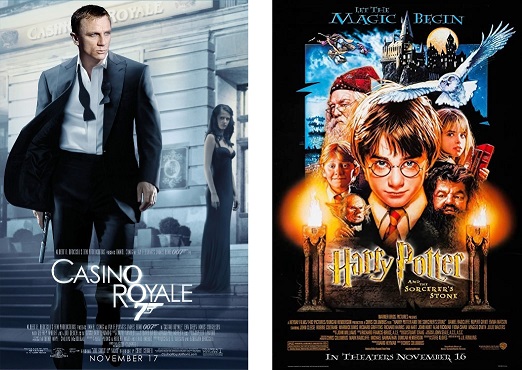
Both the James Bond and the Harry Potter franchises comprise best-selling book series, best-selling movie series and best-selling merchandise brands. Not counting derivations and cottage industries, the James Bond and Harry Potter brands have together grossed about 50 billion dollars world-wide, which is about 7 dollars per person alive on the planet. And to put that into perspective: about one in every six people on earth lives on 1 dollar per day, and about half of the world's population lives on 10 dollar per day. The joint James Bond and Harry Potter franchise is not the cause but a symptom of a disease that needs to be treated like alcohol addiction.
Mr. Banks can still be saved, but the vultures are gathering because they all smell the scent of death on the Federation. Yet the threat is neither in the books nor in the people that write them nor the people that read them. The problem is interwoven in the very fabric of society, dissolved like sugar, and cannot be simply extracted. In Acts 19:19 we read about a collective burning of books on magic in Ephesus, as a response to Paul preaching on natural law. This seems like a great idea, until we realize that just before the Nazis began to systematically murder Jews, gypsies and gays, they were enthusiast book burners. The crucial difference between the book-burning of the people of Ephesus and that of the Nazis is that the Ephesians burned their own books, whereas the Nazis burned other people's (The Book Thief, 2013).
In the US, the constitutional Prohibition appears to have been the decisive difference in the approach of governments to the global roaring twenties that resulted in the 1929 crash, the economic recession of the 1930s and the Second World War. But as Bill Bryson noted in his book One Summer, 1927 (2013), Prohibition also gave rise to vast mafia syndicates, and driven by forces beyond them, scores of desperate alcoholics drank denatured alcohol and died horribly. When a serious alcoholic suddenly stops drinking he will go mad and might die.
The effects of a sudden ban on fiction about wizards cannot be predicted and it would throw the door wide open to McCarthy-style purges and persecutions. It would be the beginning of the end of free speech, and that won't help either, because there's no telling what helpful insights might come out of the fringe or our neighbor's choice of pleasure. Compromising net neutrality and big-data spin-doctoring are also no real options for Britain's government today, and so the only viable avenue appears to be a calm and public review of the available facts and the secured freedom for every person to either read or burn their own books.
🔼The Usual Suspects
Q: How can you tell the good guys from the bad guys?
A: Who asks that question?
In the late Middle Ages, half of Europe's population was wiped out by the Black Death. The people back then were not literate enough to be Christian, or anything other than mere terrified, and collectively spiraled into the mental equivalent of a cytokine storm. By the time the few remaining scientists were able to determine where the Black Death came from and how to stave it, thousands upon thousands of Jews, gypsies, gays, "witches" and physically, mentally and socially challenged people had been crucified, beaten to death, hanged or burned at the stake. Roaming troupes of eager exterminators rounded up folks with leprosy and other skin diseases. Many were tortured to extract confessions.
The exterminators noticed that the death toll among Jewish communities was decidedly lower, and concluded that the Jews were in league with the devil and were willingly causing the Black Death. Thus, the exterminators besieged hundreds of Jewish villages and torched the lot with the people trapped inside. Yet the plague raged on.
Driven to mad despair, survivors turned to astrology and occultism. They paid fortunes for spells and amulets and incantations and offered whatever they could get their hands on to whatever god they served. Running out of human suspects, the exterminators began to target cats, dogs and church owls.
In 1663 the plague ravished Holland. It crossed over the Channel and in 1665 it brought London's economy to a heaving halt. In the 1690's, even the Puritans, who now lived around Salem, Massachusetts, began to notice fits and sickly behavior in their children. In a series of examinations, hearings and complex legal procedures by the most learned of their communities, they accused hundreds of their own children of witchcraft and hanged dozens of them.

Scientists have since learned that the bacterium yersinia pestis probably evolved during the agricultural revolution. It's still with us but its effects are limited. The Black Death occurred when unusually dense concentrations of fleas intersected with unusually dense populations of rats that in turn intersected with unusually dense populations of people, usually people that were already weakened by wars and famine and involuntary displacement. Particularly during shortages, rich people frantically hang on to their hoardings and ignore the poor, which is why an increasing gap between rich and poor is indicative of an economy getting deadly sick (Ezekiel 16:49).
A small bacterium could become the broad talon of the Black Death because it could puppet-master vast armies of the living-dead: soulless communities that carried their accumulated wastes and unutilized surplus like loose flesh on their bones (hence the popularity of the modern zombie-genre). If the cities of Europe hadn't been the cesspools they were, the rat population would have remained below critical mass, the flea population would have remained below critical mass, and ultimately the bacterium population would have remained below critical mass.
Jews were less affected by the plague because Jewish law demanded that people frequently washed their bodies, clothes, pots and pans, that they buried or burned their wastes, and that they generally kept clean and well-ordered houses and streets, and not hoard or "gather into barns" (Matthew 6:19-34). And Jews kept their Sabbath, which means that they were better rested, and they had stronger self-reinforcing communities, which means they had less stress and less factions.
Likewise, cats, dogs and church owls are natural enemies to rats and thus the plague, and killing them only made the plague worse. The bug itself would surely have made its few victims, but the massive plague that slayed half of Europe was caused by filthiness and ignorance and ultimately by deviation from the knowledge of natural law.
Germ theory began when in 1670 a Dutchman named Antonie van Leeuwenhoek invented the microscope and saw what he called animalcules, little animals. Germ theory caught on and began to be formalized in the 1860's by Louis Pasteur. Doctors didn't start washing their hands until around 1850 Ignaz Semmelweis proposed that it might be a good idea. The initial reaction to Semmelweis' suggestion was strongly negative as most doctors were offended to be accused of coming to work dirty.
🔼The Constant Gardener
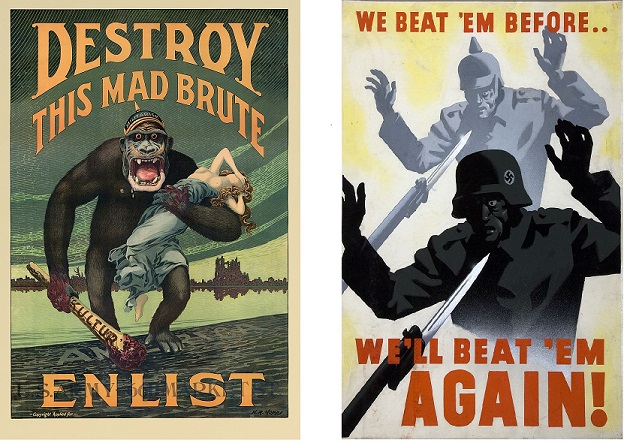
Europe has managed to level nearly all of its ancient forests, and as Peter Wohlleben explains in The Hidden Life of Trees (2016), a young forest can never be as healthy or function as perfectly. But the roots of Europe's ancient trees are still there, and the hope that they may sprout again is not a vain one. As charmingly dramatized in the British film All Is True (2018), the whole of humanity's great library functions like a garden, in which traumas and hope lay obstructions and paths but grief becomes overgrown and flowers must blossom wherever they sprout in their own spring. The best an author can do is to tend what's natural and perhaps deal with the occasional snake. And then of course there are humble cartographers such as we here Abarim Publications, but we too can only report where the paths have naturally formed.
The gardeners of our world seem to have declared war on social psychosis, and the war is gearing up. There's an obvious "all hands on deck" sense of urgency in the air, and more and more self-evidently metaphorical movies are centered on a mere single metaphorical premise that no literate person would ever miss: The Road (2009), The Book of Eli (2010), Into the Forest (2015), The Girl with All the Gifts (2016), Fast Color (2018), and Light of My Life (2019). A relatively novel horror genre explores the psychological equivalent of body horror: the loss of a familiar mentality via loss of deductive faculties (Shutter Island, 2010), that of sight (Blind, 2016) or the benevolent fidelity of sight (Bird Box, 2018), and that of hearing (The Silence, 2019). Another new brand of horror relates mid-nineteenth century US religious folly to the modern age in movies such as the Irish-American film Never Grow Old (2019), the Dutch-American film Brimstone (2016) and most notably the series The Handmaid's Tale (2016-2019), which is an American production based on a 1985 novel by the Canadian author Margaret Atwood, and whose theme of human species-specific infertility was earlier explored in the British-American film Children of Men (2006).
In Britain, the Harry Potter spin-off series Fantastic Beasts (2016) and the James Bond spoof Johnny English (2003) clearly show an awakening to the dangers of social psychosis, and utilize a great number of recognizable metaphors that make perfect sense to informed viewers. The remaining problem is that most peoples are so feverishly ill that they don't recognize even the simplest of metaphors, and a mental oversaturation with unsubstantiated images compromises their reactions to measurable reality. The apprentice has knocked out the sorcerer and is getting overwhelmed. Fortunately, anybody who's ever dealt with a friend with an alcohol addiction knows precisely what to do: stay calm, stay kind, and stick to the facts. Whatever the friend thinks he sees is not there. It's an illusion brought about by the mess in his life that he himself must clear.
Writers such as Nicholas Shaxson (The Finance Curse, 2018) and Adam LeBor (Tower of Basel, 2013) review with calm clarity the facts of the modern banking structure and its obvious ties to Nazi Germany (LeBor) and systemic failures of our world (Shaxson). And shepherds like Jonathan Sacks, Terry Jones, John Cleese, Rowan Atkinson, Richard Dawkins, Bill Bryson, Douglas Murray (The Madness of Crowds, 2019), Adele, Estelle and many others continue to explain in Britain's most intimate local parlance what shadow the "light of perverted science" invariably casts. Others continue to remind the world at large of the lasting comradeship between the British and the French, and the ultimate cause that was forever joined by Czechs, Poles, Norwegians, Dutch and Belgians.
The words of Churchill of June 18, 1940, are as portent now as they were then: "Therefore in casting up this dread balance sheet and contemplating our dangers with a disillusioned eye, I see great reason for intense vigilance and exertion, but none whatsoever for panic or despair."
🔼Hello From the Other Side
The English language uses many words that were imported from Greek, and while in Greek these words had clear origins and came with whole etymological families of likeminded words, in English these words are often orphans and assume whatever meaning the English speaking world projects on them. Likewise, our Western tradition of storytelling derives largely from the Greek one, and many of our most cherished archetypes are rootless orphans that were once part of whole families and made much more sense.
The words "mouse," "muse," "mystery," and "muscle" all derive from the same Greek verb μυω (muo), to shut in or be hidden just below the surface. The German word heil relates to the English words "whole" and "health." The term "heil" may be an imperative — "Have health!" "Be whole!" — in which case it demands compliance to a synthetic norm. It may also be an inquiry — "Do you have health?" "Are you whole?" — in which case it becomes a concern. When heil is a command it results in "hell". When it is a question, it becomes "hello?"
The civilian underground resistance against Nazi rule in Paris was so strong, and had such a strong association with joy in general culture, that the British BBC could base the comedy series 'Allo 'Allo on it. That series in turn was based on an earlier BBC series called Secret Army, which was a realistic drama. Secret Army ran for two years (1977 - 1979), whereas 'Allo 'Allo ran for ten (1982 - 1992). In 1979 British comedy group Monty Python produced a surprise global hit film called Life of Brian, which reflected on the narrow intersection of the madness and the wisdom of crowds and was set on the familiar stage of the Jewish resistance against the Romans. It came out just after Secret Army had concluded, and was "so funny that it was banned in several countries."
The series 'Allo 'Allo — in which the antics of a silly Rene Artois (means "Rheumatic Renaissance" or "Rebirth of the Atrebates") help to bring down the Third Reich largely by accident — strongly agreed with the tastes of culture at large and ran from the beginning of the Falkland War to the beginning of the Yugoslavian Wars.
The world will have its finest hour yet, and the war will be fought, not in the Parliaments of Europe, but on the beaches, on the landing grounds, in the fields and in the streets of our cities and towns (Genesis 18:22-33, Jonah 3:5-10). It will be a war not fought with state-sponsored machinery but with the prerogatives of uncoordinated civilians. The exchange of energy will not be carried by the invasive impact of bombs and bullets, but by the evacuative pull of sincere concerns.
In 1933 Rudolph Hess was appointed Hitler's deputy Führer. In defiance of Hitler, Rudolph flew his private plane solo to Scotland in 1941. This was presumably in an attempt to make peace, but the psychology behind this move was never satisfactorily explained. He was obviously arrested directly upon landing. After the war, Rudolph was one of the very few high ranking Nazis who weren't hanged but incarcerated for life. Having resided in his own private prison for the second half of his life, Rudolph hanged himself in 1987 at age 93.
Rudolph the Red-nosed Reindeer saw the light in 1939, in a story by Robert L. May. The story was made into a song in 1949 and became a media sensation. At least ten covers by famous musicians became hits in the following twenty years.
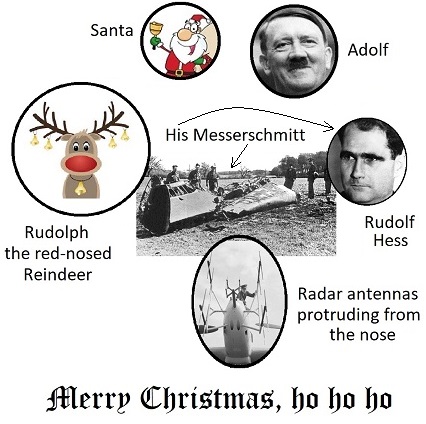
Having had to jump out of his airplane — a radar-equipped Messerschmitt specialized in night missions — Rudolph Hess royally missed his mark of Dungavel, Scotland, which is well north of Hadrian's wall. There he had wanted to meet with the Duke of Hamilton, who had access to Churchill. Movies such as Churchill (2017), The Darkest Hour (2017) and Dunkirk (2017), and the series Peaky Blinders (2013-2019), demonstrate a strong renewed interest in Churchill's role in the second world war. Also in recent times, the summer retreat of the Duke of Hamilton in Dungavel was converted into an Immigration Removal Center, which is run by an American private prison firm.
The luminous idea to outsource a state's perceived need for prisons (rather than promoting the proliferation of not-centralized centers of wisdom) is of course a hefty bubble of economic fermentation, which in turn is busily contemplated by the underground in movies such as Johnny English (2003; mixed reviews), Old Boy (2013; mixed reviews), and the series Orange Is the New Black (2013-2019, standing ovations).
🔼Of children and old men
Reality isn't what it used to be. Since Einstein we know that stars don't simply hang in space but create the space they sit in. Take away the star and the space disappears too. And put two stars in orbit around a common center of gravity, their two spaces combine into a dynamically spiraling valley that sends gravitational waves through the whole infinity of their joint expanse. Space, in fact, is not simply the home of stars but the relation of stars. Without the relation between all stars, there is no space.
Throughout the ages, the study of infinity has been hampered by the tendency of its students to go insane. This is possibly why Einstein used humor as a defense. When asked to define time, Einstein replied: "Time is what prevents everything from happening at once," which was or course miraculously clever but also implied that when there is no means to measure time, there is no time, and everything indeed happens at once, or not at all. Without the relation between al things, there is no time.
To humans, time is the rug that ties the past, present and future together. The past is defined as something that has already happened. The present as that what is happening now. And the future as that what still has to happen. Memory lane, however, is frequented by many a melancholic and an event that happened decades ago can still change a mood today. A dog, likewise, smells the presence of a sausage that was eaten hours ago and will traverse his present in search of it. Likewise, to an insightful person who can detect inevitable outcomes of present conditions, the future is already fixed and within the here and now.
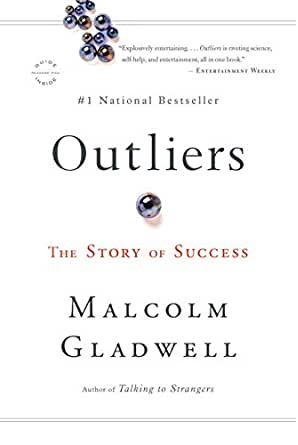
Malcolm Gladwell insists that it takes an average person about ten thousand hours of practice to get good at something, which comes down to 5 years at 40 hours per week (that's full time) or nearly 20 years at 2 hours per day, five days a week. But Mozart started performing at European courts at age five. That means that Mozart had become a senior in the time it takes normal people to be a child. Conversely, it took Sam Dawson three decades of trying very hard to become a seven year old child (I am Sam, 2001). Shakespeare churned out nearly nine hundred thousand words (twice the Bible) and created texts that are so utterly complex and refer to such a broad spectrum of learning that it still baffles people today, even to the point where many refuse to believe that it was all done by one man. In the third century BCE it took 72 men to merely translate the Hebrew Bible into Greek.
If a person's development stops at age five, but he nevertheless lives on for sixty years, is he a five year old or a sixty-five year old? If a person achieves in five years what any other person would do in sixty, wouldn't we reckon that person among our elders? The ancients appear to have recognized that the solar age of people had absolutely no bearing on human reality, and the only interesting variable would be a person's relative age to the rest of mankind.
The average solar age of a human alive on earth today is about 30 (everybody's age divided by the amount of people is about 30 years). If an average person requires 10,000 hours of practice to achieve fluency in a medium or with an instrument, a person like Mozart in his prime equals a 600 year old geezer, which would translate into the literary archetype of the impossibly old wizardly sage (Noah, Merlin, Gandalf, Dumbledore, and so on).
Someone who's had his 10,000 hours but still fumbles around like a five year old translates as the literary archetype of the prancing and worriless child-person like Hobbits (1 Corinthians 14:20, Psalm 8:2, Isaiah 3:4). The European archetype of the gnome — a forest dwelling mischievous wilding of small stature but enormous powers — plays with the astute observation that humans are very often very senior in one aspect, but simultaneously very junior in some other. That means that one human person cannot simply be represented by a location on one particular spectrum, such as solar age, but rather by multiple points and counterpoints: a host of points of balance between (a) seniority in one aspect that is balanced by (b) juniority in the first aspect's complimentary or anti-aspect.
Time, altogether, is a tricky thing because there are multiple ways to keep things from happening at once, or to bring these things together and create a present that's different from the present experienced by others. Time, it transpires, lies in the eye of the beholder, just as much as truth does. Children are in such a hurry to grow up that they squander their youth, yet old men have but one desire and that is to be young again and free and innocent. We are children for ever but old only briefly.
🔼This present trident
Colors are associated with specific light frequencies, just like musical notes are associated with sound frequencies. But without ears, eyes and brains these frequencies are just that: mechanical vibrations or Schrödinger waves within enormous spectrums that are much larger than the arbitrary sliver of frequencies we can hear or see. Sounds and colors are entities that exist only in minds. They don't exist in space. That means that the world you see is a world that only exists inside your head. Take away your head and your world will disappear with it. You are everything you see. And the only way to see outside your own head is by looking into someone else's. Other people sit inside your head like stars in the universe, and all reality that you can possibly be aware of exists because of the relation between the people in your head that create the space you can't.
New born babies don't see Technicolor right away but come into a black and white world with only mere hints of pink. Colors the way adults see them are slowly turned on one by one. You will never forget that, and very deep inside your adult mind, colors will always have a specific symbolic meaning. The brain receives signals from interactions between photoreceptors in the eye and turns these into colors. This means that colors, like words, don't exist outside the realm of thought and that color vision is a symbolic language that has to be learned. People who complain that they don't remember anything from before they were about three forget that before the age of three we didn't contemplate our existence in words but in colors.
The human eye has two kinds of photoreceptors, namely rods that inform the brain about the total intensity of the light, and cones that inform the brain about the wavelengths of the light. These cones come in three types: one fires off a signal when it detects short wavelengths (blue), one at long wavelengths (red) and one at medium wavelengths (greens). They aren't simple on-and-off switches but operate with an effective range that plots like a bell curve: with specific peak sensitivities but broad and overlapping base ranges. Colors don't exist in space because every color we see is in fact a combination of the signals from each of the three types of cones. Every single light frequency is considered by our three kinds of cones, and the joint response by these three kinds of cones to the one frequency is what causes the perception of color in our brains.

Most colors we see are reported by one expert and two lesser witnesses, depending on the frequency of the light. When we perceive a red, however, only the cones whose expertise are long wavelengths fire, and that from the outer extreme of their bell-curve tail, not their peak. The rod confirms that indeed there is something to see, and the color red is confirmed because the other two don't fire at all (hence Minority Report, 2002). The same thing is true for blue. Blue is perceived when the rods report the existence of light, two types of cones see nothing and the cones whose expertise is short wavelengths fire because of a tickle at the far end of their working range.
That is really remarkable because it suggests that the world we see consists of a broad range of colors that are confirmed by at least two color experts, whereas the two edges of the range of our vision are bands of violet blue and burgundy red that are reported by one light expert who is color blind and barely confirmed by the vague suspicions of a color expert who's way out of her comfort zone. It also suggests that before humans began to construct a world of words upon the dry land of consciousness, our realm was a subconscious ocean of colors that our minds governed with a mighty trident. Our world-governing trident consisted of a monochromatic shaft that measured light intensity, and a three-pronged fork with which we created millions of different hues of colors from the formless energies around us. Thus we created our subconscious minds like paintings.
In modern human eyes, rods outnumber cones by about twenty to one, which demonstrates that the basic physiology of our eyes formed while our ancestors were still nocturnal. Geneticists have been able to trace the path of mutations that resulted in our modern color-seeing eyes, and pretty much agree that when our ancestors emerged from the night the only color they could see was ultraviolet (very short wavelengths). Like the Biblical story of the Father with the Three Sons, the cone that detected ultraviolet made way for three types of cones that together could create a spectrum of colors.
How this happened, in which order human ancestors began to create colors in their minds, and how they experienced their mind's increasing ability to create worlds of colors, is of course rather difficult to estimate. Additionally, as Darren Aronofsky brilliantly illustrated in Pi (1998) and Chabris and Simons showed in The Invisible Gorilla (2010), a physical readiness to see something isn't enough to actually see it. The brain uses sight predominantly as a confirmation for what it already believes, and tends to blatantly ignore whatever can't be immediately matched — which explains the psychological link between the unknown and the feared, or between novelty and scary.
🔼Learning to see
Imagine a tribe of proto-apes traversing a patch of forest. All the individuals are physically able to perceive yellow bananas but the culture that defines the tribe, which in turn teaches every individual how to behave, has not yet developed a properly cultivated reaction to the banana. The banana is not perceived as a threat, but also not as something attractive, and so the banana is ignored and might as well not exist. Many animals, and particularly social animals, eat specific foods and ignore comparable others, simply because that's their culture. And that is fine unless the bananas are really the dots that would connect to a whole additional layer of reality. Certain predators are able to hide in plain sight because their prey doesn't connect the dots.
When our dog listens in on our conversations, he doesn't merely miss out on the meaning of the words, he has no idea that within our vocal modulations are worlds of meaning that are being exchanged to form even greater realms of reality. A person who looks at a book in another language won't find meaning in the text, even though she can see the words. If that person cannot read in any language, she doesn't even realize that there might be data stored within the markings on the pages. She probably won't even realize that the many pages of markings consist of only a small set of standardized symbols, that add up to a set of standardized words. There is not even an obvious link between the pages of the book and the language she speaks, and she may not even suspect that through the book some invisible author can communicate with her.
Particularly if that person isn't used to learning new things, and is somehow convinced that what she sees is all there is, she might be missing out on entire entities who stand undetected in her full view because she ignores the dots that would connect to visions of a whole new world. Conversely, if that person is surrounded by a tribe of people who all claim to see something, and she fears missing out, she might develop elaborate statements of faith that might convince some and perhaps even herself. Entire tribes might traverse the forest in exalted jubilation, convinced they got it all worked out while in fact every member is clueless but too cowardly to be real. The only real way of seeing whether someone is indeed on to something is if that someone is able to continuously retrieve things from the other side, and at a substantial greater rate than mere chance provides (Luke 7:35).
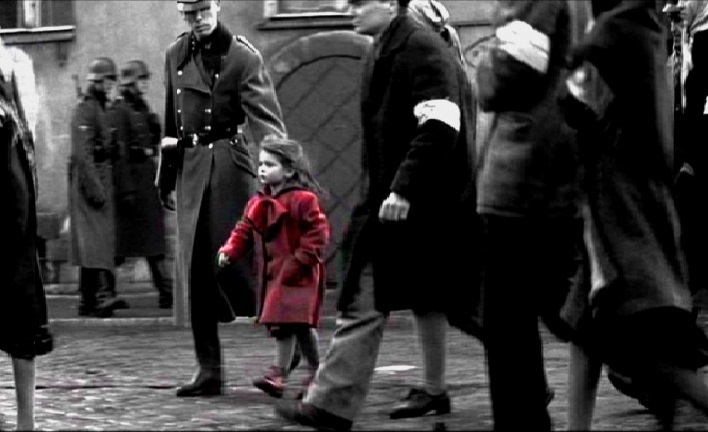
When the first of our ancestors began to see red, ripe fruits like cherries and apples began to stick out of the grey foliage like lights on a Christmas tree. These first red-seers didn't have to search for food anymore but could with a few gestures provide for the whole family. They surely became adored as clairvoyants, and their bodacious super-vision freed up seas of time for the whole family to relax and groom and socialize.
But, as time progressed, more and more of our people grew into the ability to see red, and some began to grow into the ability to see more than red and began to detect shades of orange and ultimately yellow. These novel yellow-seers could now not only see ripe red fruits but also unripe to-be-red fruits and orange and yellow ones that usually came in inedible peels (oranges, bananas, lemons). To a red-seer, an unripe fruit is pink, but to a yellow-seer an unripe fruit is orange. And yellow-seers understood that not all orange fruits are unripe and will turn red in time, but are created orange and stay orange and are utterly delectable orange within their shiny orange peel.
All this allowed the yellow-seers to operate with much greater success and range but required them to be much more careful than the red-seers, and this caused a rift between the red-seeing norm and the yellow seeing elite. The yellow-seeing elite began to refer to the common red-seers as "rude, robust, rudimentary rednecks" who were frequently caught "red-handed". The red-seeing norm in turn began to dislike the yellow-seeing elite, and called them "yellow-bellied" prissies.
As time went on, more and more of our ancestors were able to see all colors up to green. Until, of course, certain front runners began to see shades of blue. These were people who could tell the difference between a dark-red overripe and perhaps rotting apple and a ripe grape that was perfectly fine. After a few solid hangovers, the population at large had learned to stay away from overripe dark-red fruits, but these blue-seers were able to consume certain dark fruits with immunity. They didn't get drunk and they didn't have hangovers.
The population at that time was living in lush jungles. There was food, safety and comfort everywhere, and if there was a norm it was one of variety and abundance. And that meant that the blue-seers were unintentionally attracting over-confident novel-seekers, and the novel-seekers began to bear down on the "forbidden" dark-red fruits like there was no tomorrow. All precaution was blown to the wind and entire populations inebriated themselves into collapse and disaster. This caused true-blue-seers to be grieved at heart (they got the blues), and they began to seek ways to teach the blue-blind the dangers of blue-blindness.
The crucial difference between a true blue-seer and a blue-blind novel-seeker is that a true blue-seer can match any color with its complimentary counterpart to create white. A partially color-blind person can't do that because white is the sum of all colors, and you need all of them to always get white. Snow crystals are wholly translucent (just like liquid water, overheated steam and solid ice), but they appear white because all little rainbows they produce add up to white.
The mystery of the relationship between white and the other colors is the same mystery that exist between king Arthur and the Knights of the Round Table, and between Jesus and the disciples. White sits not at the head of the table, with six disciples at his right and six at his left (Matthew 20:21), but is present at every point above the rainbow where a minimum of two complimentary colors gather (Matthew 18:20).
The generous term "complimentary" in fact means "opposing" and white is achieved wherever two opposing positions find a way to unify. When Jesus said: "Seek first the kingdom of God" (Matthew 6:33), he explicitly did not suggest that humanity should polarize into warring factions of like-minded people, but to seek out someone of a faith or life style that denies everything you stand for, and then forge and smith and blaze a trail that allows you to go nearer to him. Salvation, unfortunately for the cowards among us, lies in what we fear. That's why we are to love our enemies (Matthew 5:44). Or as Don Quixote taught: always run toward your enemy, never away from him (The True Don Quixote, 2019).
🔼Of string and sets
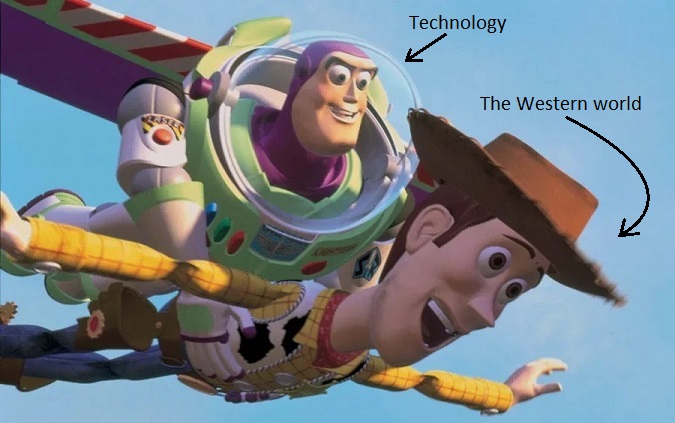
In the Bible the narrative arc between seeing the first ripe red fruit and seeing all the colors of the rainbow is told from Genesis 3:1 to Genesis 9:13. Mankind has always been allowed to eat from any tree of the garden, and be as picky as his own heart dictates, but mankind's forbidden fruit hangs from the garden's central tree.
This tree was not the "knowledge tree" as some early commentators have proposed, but rather the "tree of knowledge of good and evil." Eating from that tree is not about learning but about judging. Man's trouble begins when he reviews any complete set or closed system that the Creator has put on earth (whether material, biological or cultural), and then decides that the parts he likes are somehow better and should be preserved, whereas the parts that he doesn't are cursed and should be exterminated. The trick to a sustainable life is to choose after your heart's content, but respect and preserve what you reject with equal care.
When you have Theory of Mind, you understand that there is always someone who likes what you don't, and when you start condemning, you also open the door for someone to condemn you (Acts 10:9-16, Romans 2:1, Matthew 7:1-5). Having a fully developed Theory of Mind allows you to understand that other people like other things (some like vegetables, others like meat; some like Dostoevsky, others Jerry Springer). People experience pain differently (some panic at a prick, others register it as pleasure). People express affection differently (some slobber all over you, others introduce you to prime number distribution theory). The whole difficult art of maintaining relations hinges on one's understanding of difference and allowing for a broken symmetry between you and the next guy.
The tendency of modern Protestantism to branch ever further into a dusty spectrum of theoretical specifications is the polar opposite of the tendency of the ancients to conflate schools of thought. Hence the separate schools of Amon and Ra became the unified school of Amon Ra, and the separate schools of Elohim and YHWH became the unified school of Elohim YHWH.
The Hebrews understood that a person who wholly knows God is wholly like God, and that the part of God that a person had not yet been able to incorporate into himself was equal to the part of his neighbor that he didn't understand yet. And since the members of any closed set derive their individual identity from the collective identity of the set, any part of any set that is isolated, ejected, rejected or expelled (whether this is one's excrement, one's offspring, or society's mickeys), will certainly find a way back and in whatever way or form confront its accusers and assume its place both in the collective identity of the whole and in the individual identity of all elements (Luke 11:24-26, Hosea 8:7). This principle is popularly referred to as "what goes around comes around" but consistent with convention a more proper name would be the Law of Set Preservation.
Holly Golightly famously sang that she and her huckleberry friend were after the same rainbow's end, which is remarkable because rainbows need sunlight to exist (so-called moonbows are nearly invisible to the naked eye). The gold there, at the end of the rainbow is not a myth, but a rainbow is circular and the "end" is the center of the circle.
It's probably useful to take a moment to consider that darkness is not the opposite of light but the absence of it. The outer darkness is not centered on some dark satanic anti-pole but on the same "end" that light and the rainbow are centered on. Light has a source, is substantial and comes in colors. Light stores data, gives life and holds all material structures together. Darkness doesn't have any of these qualities. The way light relates to darkness so relate wisdom to foolishness, love to hate and life to death.


The pot of gold sits at the antisolar point within the blue end of the rainbow because the sun, the viewer and the heart of the rainbow line up perfectly. When all light is refracted, no light remains on the outside of the red end, which is where the outer darkness begins. That means that, contrary to popular belief, mental reality only has one pole upon which both the light and the darkness are centered. As we will see below, in literature the moon signifies one's private quest for liberation from a stifling collective norm, which makes one's head lunar. And that means that a line drawn from the solar center of reason through the dark side of the "moon" must lead to the pot of gold at the rainbow's end.
The story of the magic ring and the burning gold at its heart entered into modern Western mythology from the Middle East in the early 18th century in the form of Aladdin and the ring of the lesser genie and the lamp of the greater genie. In the early 20th century these themes were vastly expanded by Tolkien in the story of the one greater ring to rule all lesser ones.
An object that absorbs light will get warmer. An object that "learns" to absorb levels of illumination and thus "travels" from the outer darkness through the visual spectrum toward the golden solar center of the rainbow, will ultimately burn like Icarus, unless it masters and transcends the effects of the laws of thermodynamics that govern all transactions in the material universe.

A living cell is in effect a transfinitively black object, that is an object that absorbs light without getting warmer and without radiating or reflecting it. It does that by means of photosynthesis, that is the conversion of energy into chemical compounds. Learning works the same way3, which is why our memories are not stacked in a chronological order (along a temporal axis) but rather according to their relevance to our present now. This means that our minds are, technically speaking, vehicles with which one can travel back in time. A very creative person might propose that an imaginary device that would be able to merge colors back into white light could be symbolized by an inverted prism. And that might begin to explain the prevalence of the hexagram in certain enlightened cultures.
When the world is grey, red signifies a whole new order of detail in existing reality. When the world is red, yellow signifies the beginning of selectiveness: acceptation and rejection. When the world is yellow, blue tells of drunkenness, plague and destruction.
When the world is polychromatic or white, red signifies primitivity, yellow signifies prudence and blue signifies wisdom. In a learning world, fire is always the latest color. In a polychromatic world, red is the color of a fire that's barely on or going out, and blue is the color of raging heat. To people who see only red, all stars are red. To people who see white, stars that are moving away from the observer are red and stars that are moving toward the observer are blue. Red is the color of expansion, exhalation and cooling off. Blue is the color of contraction, inhalation and heating up. Yellow is the color of discernment, of exchange, of commerce, of indecision, of doubt, of convalescence from infirmity, or getting sick from health, of conversion, of turning around, of changing one's mind, of transiting from youth into maturity, and so on.
An object is white when it reflects all wavelengths, and it is black when it absorbs all wavelengths (Song of Solomon 1:5). The more colorful an object is, the more color it rejects and the less it absorbs and the colder it ends up being (Genesis 37:3). White signifies cold, stubborn, closed and foolish (Numbers 12:10). Black signifies warm, willing, open and wise (Numbers 12:1).
Someone who is able to see all colors, is able to see what others reject (rather than absorb), and in turn absorbs all colors and is thus black. Someone who sees no colors, is not able to see what others reject, and would be white if she wasn't living in the dark. A person has vision when she absorbs what others reject. A person with a perfectly black mind reflects no light at all and can subsequently not be detected by means of visible light. That means that a perfectly wise person has the ability to be effectively invisible to people who operate within the spectrum that is naturally available to natural people. In popular culture these wise people are depicted as the Men in Black.
Note 3) Let's do a thought experiment: Imagine two scientists, one positioned at a photon canon and the other far away at a target, hoping to measure the speed of light. When the first scientist fires off the photon and the second sits there with her stopwatch waiting for the photon to arrive, the second scientist does something that only networking minds can do: wait for a photon. Since no signal can outrun a photon to warn a receiver that the photon is coming, no natural thing ever waits for a photon, and it proves that only a plan hatched by humans can create a condition of waiting for, i.e. "outrunning", i.e. "traveling faster than" light (1 Kings 18:46). This is crucial to our story because at speeds faster than light the arrow of time reverses.
🔼The Door in the Floor
Where children eat, crumbs fall off the table. And if the floor isn't solid, these crumbs slip through the cracks of the floor and accumulated below it. But who, exactly, decides at what level of society the floor goes, and where Mary Poppins places her bag made of carpet?
The borders of any society (whether atomic, cellular, organic or social) are determined by its economy of production and consumption, and the sustainability of the economy is determined by its waste management. In any sustainable economy, the wastes are decomposed down to their inorganic elements by a specialized and thus highly appreciated scarabaeid class. In an unsustainable economy, that specialized waste-processing class is under-appreciated or even entirely driven out. In such an economy, the wastes accumulate where this class would have been, which would be the crypt or foundation of a house or the sewers of a city. Very quickly, the wastes will attract a mere few flies, who lay their eggs in the organic residues, which results in a wriggling mass of maggots, which results in a sudden explosion of flies that waft out from the crypts and overwhelm and ultimately consume the whole house.
As movies like Constantine and Men In Black illustrate, if mice are not allowed to manage the conversion of the excess of organic energy in the city's crypts and transport their own wastes far out, this excess will start to host infestations of all varieties which mature under the surface but which will suddenly emerge like a billowing angel of death. Since this principle is based on natural law, and natural law works the same throughout the universe, mice don't simply keep the house clean from internally generated dust (that job belongs to Mary Poppins and Peter and Santa) but rather from the "scum of the universe."

Mice live in sewers the way microbes live in bowels and dreams in the subconscious. They consume and digest anything organic that falls off the table of the economy of the house, whether these are unspoken barriers between spouses, borders between nations or class-affirming clothing between people. In a properly functioning society, wastes are not allowed to collect in the house or in the sewers beneath it but are collected outside the town, where an honored and properly funded disposal class can break them down. So doing, they help fertilize the wilderness and fields around the town, and inject the thus released energy back into the economy. The economy in turn finds itself with dreams and inexplicable inspirations: artists will take note of the curious doings of misfits and foreigners and leave traces of that strangeness in their pictures, books, music and movies. These works of art in turn inspire the citizens, and a scientist might find himself take a brand new approach to an old problem, a husband might find himself with the sudden urge to bring flowers home, and a silly Dennis Rodman might be inspired to visit Kim Jong Un and help prevent a third world war.
The "mice" of society are minority and fringe groups; those who enjoy very little social anschluss and are usually not even organized in recognizable societies and clubs and such: the botched and the bungled, the rejected and misunderstood, the weirdoes and absurd, the psychotic and confused, the abused and exploited; the unruly. Necessity is the mother of invention, and people who are well-provided for have little needs from their society, and also have little incentive to change it. A society that survives does so because it progresses, and it progresses not because of its kings and elite but because of its poor and needy; the stone that the builders rejected (Psalm 118:22).
That's why the poor will always be with us, said Jesus (Matthew 26:11), who said the same about himself (Matthew 28:20). Matthew cites Jesus' statement about the ever-present poor from Deuteronomy 15:11, which reads: "For the poor will never cease to be in the land; therefore I command you, saying, 'You shall freely open your hand to your brother, to your needy and poor in your land'." And this obviously inspired the poem The New Colossus, which adorns the Statue of Liberty in New York.
Neither the presidents nor the CEOs made the USA into the global powerhouse of the 20th century. It were the mickeys that did that. It was the diversity of the refugees it had welcomed that kept the USA from spiraling into the same trap of centralized insanity as Europe had.
🔼The Face of the Deep

Movies like Splash (1984), The Little Mermaid (1989), The Abyss (1989) and Aquaman (2018) meditate on the creative dynamic between a society's conscious knowledge (land) and subconscious intuition (sea). In this context "under the sea" means "subconsciously". The name Atlantis comes from Atlas, which in turn derives from the Greek verb τλαω (tlao), to suffer, endure or hold out. The story of the Titan Atlas who carries the heavens upon his shoulders tells of the cities of words that mankind has built upon the ocean of the subconscious. The Platonic legend of Atlantis suggests that before man had words, he communicated in natural grunts, howls and chirps that allowed humans from all over the world to understand each other as well as any dog from, say New Zealand, would understand any other dog from, say Norway. This combined with a vast intellect and an efficiency that freed up oceans of time, may in theory indeed have allowed man to build a global network of cities and fleets before he could speak a word.
The story of Cain's family line suggests that codes of conduct, industry, fashion and sophistication may have emerged prior to formal language. As Genevieve von Petzinger shows in her book The First Signs (2016), shared symbols are very old, and although intuition may dictate that symbols followed language, the patterns of evolution suggest that symbols came first and language evolved from a normalization of the vocalization of the symbols (Genesis 2:19-20). If that can be shown to be the case, this would open the door to the hypothesis that all human civilizations in the world were preceded by a global pre-speech civilization that expressed itself exclusively in symbols, paintings, statues, buildings and so on. This in turn suggests that our Internet, and the Internet-of-Things to come, functions like training wheels or a dental brace that in time will be outperformed by an organic equivalent, and will ultimately be dismantled like the scaffolding of a temple.
In the Buddhist-Vedic world of Aquaman, any relatively ordinary citizen of the surface world (that's the one consciously shared among humans), better be the king of the underwater world (that's our collective subconscious). Where the surface dwellers wield the swords of verbal prowess, Atlanteans wield the trident of mental "color-vision," which is why Aquaman has a generous quindent and the Jews an even more generous sepdent (the Menorah). To a person who travels up from below, the ocean is pitch black and doesn't begin to contain the smallest traces of light and thus color until about 1000 meter below to surface. To a person like that, blue will always be associated with the horrifying end of reality, and just like blue may signify disaster, falling skies and the plague to people with incomplete vision, so is the trident of visual mastery a deadly three-headed snake to people whose vision is incomplete (Exodus 4:2-4).
Instead of a three-headed snake, the Greeks had a three-headed dog named Cerberus, and although it doesn't mention Cerberus, The Abyss is a Jewish meditation on modern Western mythological reality, which is why tech-dependent Virgil Brigman doesn't have a proper fork (discernment) at his disposal, but only a silly wire clipper, and the wires of his bomb all have the same color. Virgil's subsequent brave attempt to global redemption comes down to an act of self-sacrifice in a Schrödinger's Cat sort of 50/50 way.
In contrast to Virgil's monochromatic abyss, the much more mature abyss of Aquaman is styled with bright Oriental color- and cultural codes, which is why his Godzilla doesn't have a little Judas sticking out of its mouth, as was the case in Dante's bleak take on the same story.
The familiar legend of Schrödinger's Cat, by the way, is in error since it doesn't take into account Mrs. Schrödinger's very measurable fury when she realized what Mr. Schrödinger had put the cat through. What Mr. Schrödinger hadn't realized before he revealed his findings to his wife was that the individual human mind operates at the level at which the laws of Quantum Mechanics apply, not the level governed by the rules of Classical Mechanics. In his subsequent measurable reality, Mr. Schrödinger got no desert for a week and was banned to the living room sofa, whilst the cat indeed lived happily ever after.
🔼Godzilla

The longest running movie franchise in the world, and possibly the most influential theatre production in modern history, is that of Godzilla, which likewise deals with turmoil arising from a society's collective subconscious. It shares its leitmotiv with The Abyss in that both actions are driven by the introduction of a nuclear bomb to the Deep. The first Godzilla movie was produced in 1954 by a Japanese film company called Toho, and became a world-wide hit. Over the decades to follow, Toho would produce almost three dozen more Godzilla films and countless spinoffs. In the US the first Godzilla film was viewed by a young Steven Spielberg, who would later draw on it as inspiration for Jurassic Park (1993), which in turn set off a global dinosaur hype and spawned many sequels and spin-offs.
Without the Godzilla franchise it would be very difficult to estimate the impact that the bombing of Hiroshima and Nagasaki had on Japan's collective subconscious. A difficult hurdle to pass in this regard is to understand that both Japan and Nazi Germany believed that they were the good guys. The hardest part to digest, however, is that they shared this belief with the United States and the Allies. All main players in the Second World War honestly thought that they were healing mankind from the lethal disease that was the other guy. And their positions didn't stem from their Emperors, Führers and Presidents but from the whole of their cultural identity, which in turn derived from centuries upon centuries of narrative about conflict resolution and societal survival.
At the beginning of the 20th century, all modern societies believed from the core of their ancient hearts that they had figured it out, and were mankind's last and only hope for survival. The fate of the vanquished was therefore not comparable to a guy going down in a boxing match (Southpaw, 2015), but to a guy who watches his house burn with his children in it (Manchester by the Sea, 2016). The psychology of the victors subsequently became haunted with the bias of Illusory Superiority, which spawned the idea that the guy with the biggest gun is also the best at everything else. The outgunned guys had to outsmart the guys with the bigger guns, and fortunately for everybody, that wasn't hard to do.
Modern generations don't sufficiently contemplate why there were Roaring Twenties right after the First World War. People weren't happy after 1918. Every family had lost fathers and sons, but even worse than losing them was to receive them back alive but horribly disfigured, shell shocked and permanently psychotic. The consistent, dragging, numbing horror of trench warfare that went on for months or years, with murderers suddenly jumping in from above or gas crawling up from below, in a disfigured world of mud and blood and human beings being ripped apart and the waves of noise and screams and thunder — there was no life, no greenery, no birds; just deformation and a perpetual severance from any kind of normalcy. There was no permanence, no safety, no certainty. There was nowhere to stand; no thought that could confirm "I am".
There can be no imaginary hell more accurate than the experience of the people who fought in the First World War. And they brought that hell home and seeped it into their homeland's narratives. The Roaring Twenties weren't roaring out of joy but out of mad fear, desperate self-medication and outrageous all-or-nothing risk taking. The crisis of the 1930s was the inevitable collapse of a mad man who had been partying drunk to cope with his trauma. The Second World War was not a second war but still the first and only Great War.
The Nuremberg Trials that followed the Second World War were comparable to the Warren Report that followed the JFK assassination. It removed the splinter but not the gangrene. It did not treat the wound, or nurse the warrior, or resolve the conflict in which the wound was incurred. It did not review the guilt of the victor, or the weight of the plea of insanity. And it certainly did not address the nature of the singular debt incurred by the common ancestor of both sides. The Law of Set Preservation insists that Godzilla is real, and on its way up.
🔼The Big Short
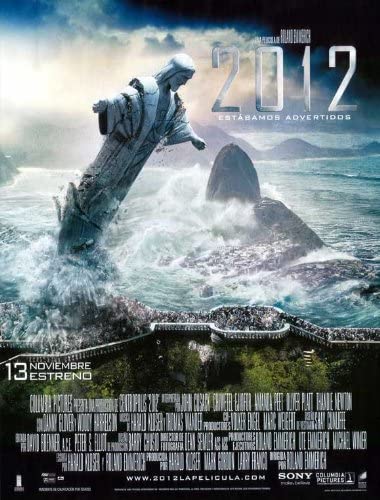
The emotional world of mankind is easily as entangled as the financial world, with nations, companies and people owing webs of debts to everybody else. Today most nations owe the world more debt than they can ever repay, and the world economy is headed for a certain Worldwide Debt Default, which effectively means that the world economy will become insolvent and will simply stop running and fall apart into dust.
One proposed solution is to declare all debts annulled (the so-called Debt Jubilee), which sounds like a great plan until one realizes that debt not merely covers the data of our economy but is the very language in which the narrative of our economy is written. Debt is the carpet that ties the room of our modern world together. Deleting debt equals deleting the software upon which our modern society runs plus deleting our economic history since the beginning of debt.
Another solution is the Exodus scenario, which is a social event identical to an individual mammalian birth. The Israelites came to Egypt during a famine in Canaan and stayed for four centuries. At some point they were enslaved, and in the end the Pharaoh ordered their male children killed. To that YHWH responded with a series of signs, most memorably the famous ten plagues, which all translate to both physical events in a mammalian mother and social events in humanity at large. Just before the tenth plague, the Israelites asked articles of gold and silver from their Egyptian neighbors (Exodus 11:2, 12:35-36), and when the Exodus began, they took those items along as Egypt collapsed behind them.
The Exodus explains how the net surplus of a society's complex economy can be extracted intact as an autonomous infant, while the debt remains and overwhelms the maternal economy into a wholesale collapse. Childbirth is risky business but it's also perfectly natural, and if the mother has any sense, she will hedge her risks and properly prepare for the delivery. An accidental default would mean a miscarriage. An unauthorized Debt Jubilee is an abortion. Both procedures would result in a societal regression to at least Medieval levels, as debt has been accumulating toward the Great War since the late 16th century.
Movies like the Terminator series (1984) related to a world that was clueless about its debt and clueless about the reason why things were happening. Films like The Sum of All Fears (2002) began to demonstrate a collective suspicion that Virgil Brigman's rogue nuclear bomb might have made its way from the bottom of the Deep to a football stadium in Baltimore.
The company that first produced Godzilla, Toho, has always battled the invasion of Japan by American imagery, and has invaded America with Japanese images since the 1950's. Toho owns several theatres and production companies in the US, including Toho International Incorporated, which in 2014 launched an "American" reboot of Godzilla. It and its 2019 follow-up show a clear awakening to the fact that mankind's large scale events are driven by universal natural laws that can be understood and mastered or at least cooperated with just like any natural law. These films appeal to the only cure of mankind's deadly infection by evoking understanding and even sympathy for the Monster of the Deep.
🔼King Kong
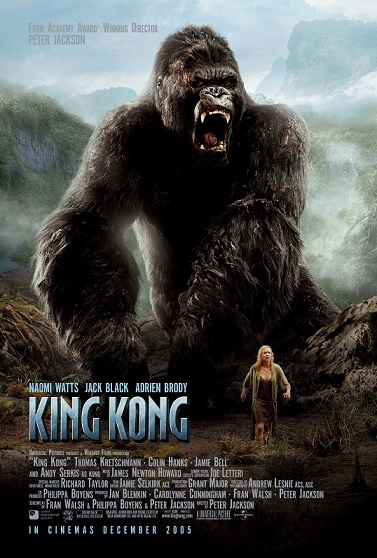
The very fact that for more than sixty years people keep flocking to film theatres to watch the same gigantic reptile crawl up from the ocean to lay siege to man's towns demonstrates that this theme corresponds with a deep seated human instinct. But an image that in the West is even more powerful than that of Godzilla is that of King Kong. Godzilla is an image out of the Oriental cultural subconscious but King Kong is a much more deliberate creation of calculated Western consciousness. King Kong was created by Merian Cooper, an American and heroic World War I fighter pilot who became an adventurer who became a journalist for the New York Times.
King Kong differs from Godzilla in that Godzilla is a primitive beast while King Kong is pretty much family and endowed with reason and intimate feelings such as love and a sense of destiny. King Kong originates on Skull Island (which is a hardly disguised reference to Golgotha), but has a knack for ending up in New York (the name "Empire State" is a nickname for New York). As an allegorical symbol, King Kong represents political power, and particularly political power that abducts Wisdom and brings her to his capital more or less against her will. With this he tries to protect her, allow her to mature and to make him become more human in the process.
The King Kong archetype has existed since Paris abducted Helen and took her to Troy. It's played out in the story of Mordecai who took Esther to Susa, the story of Joseph who took Mary to Bethlehem (the city of King David), and the story of Paul who took the Bride to Rome. It was captured most seminally in Britain as the tale of Tristan and Iseult, which basically narrates the arc from pre-word Tristan (trident) to white-haired (i.e. rainbow-cultured) Iseult, and skips the intermediate Great Redhead Ape for brevity. After all, it's been clearly asserted that Gentlemen Prefer Blondes (1953) and that a Material Girl (1984) likes her Breakfast At Tiffany's (1961), and sits down in a strange land by the Moon River, having been carried away by a Moonlight Shadow (1983).
That's not to say that the redhead can't be foxy. In fact, she very often is: Disney's Robin Hood was a fox, whose legacy hails back to Roman de Renard (1160), from which came Of Reynaert the Fox (1250), and the character Lowrence of Scottish literature. In Europe the baronial fox was usually hounded by royal hunting parties, but the archetype of the redheaded fox is Biblical.
The order of Carnivores consists of two sub-orders, namely the Feliformia (cat-like) and the Caniformia (dog-like). Foxes are part of the Caniformia but look decidedly cat-like. Conversely, hyenas are part of the Feliformia but look dog-like. The fox as intermediate form between cats and dogs led early mythologists to use the fox as symbol of proto-sapience: neither hyper-normalized nor hyper-liberalized but selfishly cunning. Hence foxes were known to ruin vineyards (Song of Solomon 2:15) but Samson caught three hundred of them, tied their tails together in pairs, gave each couple a torch ran them through the Philistine agricultural complex (Judges 15:5).
The archetype of the abduction of Wisdom by King Kong provided narrative and animation to legends from that of Joan of Arc to Pocahontas to Anne Frank. It shows up in barely disguised form in stories like Beauty and the Beast, and most recently in Steven Spielberg's interpretation of Roald Dahl's story about the Big Friendly Giant, who abducts Sophie (wisdom) from a London orphanage and ends up siding with the Queen in clearing Giant Country (the tribal federations of Albion) from a band of selfish brutes (The BFG, 2016; see Exodus 4:10, Numbers 12:3 and Daniel 2:29).
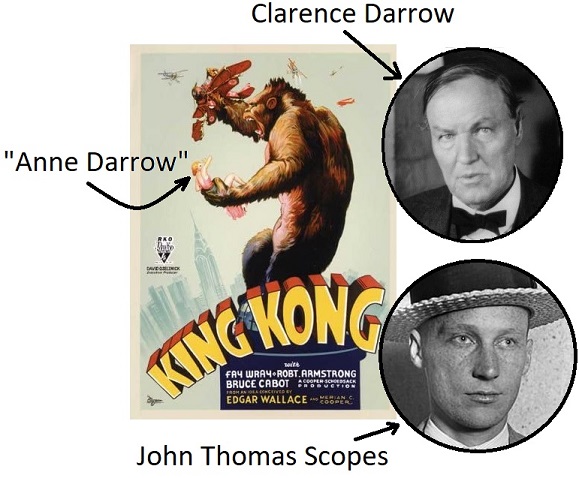
In the original King Kong movie (1933), the Great Ape abducts a character named Ann Darrow, an actress who had become homeless due to the Great Depression. In 1933 the name Darrow was a very obvious reference to Clarence Darrow, a famous lawyer known for his support of civil liberties and individual rights. That passion brought Darrow to defend high school teacher John T. Scopes, who had volunteered to be tried for teaching human evolution in a public school. The result, the famous Scopes Monkey Trial of 1925, was a legal interpretation of the timeless friction between scientists who seek the Creator's laws, and religious or political fundamentalist who try to preserve the religious and capitalistic world in which the scientists (and everybody else) can function.
The grand finale of the King Kong myth involves the Great Ape being shot off the Empire State Building by the military, whose airplanes in 1933 were as novel as computerization is today. In a world where King Kong is a unified beast, he must wholly die. But if Kong is allowed to specialize into 10 separate giants, its benevolence (the Runt, in The BFG) can be isolated via an insinuated Exodus event and live happily ever after. This Remnant theme blended with the Exodus theme seems to have originated in the rescue of Rahab of Jericho (Joshua 2 and 6).
The Trojan Collapse set off something of a dark age, which is told as the wandering years of Odysseus. Inversely, the fall of Jericho marked the conclusion of Israel's wandering years and the beginning of the conquest of the Promised Land. The technical superiority of the military in The BFG and the original King Kong film are depicted in the era's hippest airplanes. In the Iliad it's the Trojan Horse. In the Bible it's the Ark of the Covenant. In The Big Lebowski it's Walter. In Ocean's Eleven (2001) it's Basher Tarr. In any movie where a military man walks around with a dog, it's the dog.
Godzilla is associated with atomic nuclear power and King Kong feeds off electricity. The much cinematized battle between these two speaks of the most intimate working principle of matter. Most of the mass in the universe is captured in atomic nuclei, but these nuclei can't bind with others, unless electrons create "rivers" that flow by the "gardens" that are the nuclei. Unlike King Kong, Godzilla originates as many individual nightmares in many individual human minds and is essentially pixilated. King Kong obviously also consists of particles (everything does) but his "body" is created by the whirling flow of encounters between people's conscious intentions.
From the early 1930's scientists have known that there are four fundamental natural forces: gravity, electromagnetism and the strong and weak nuclear forces. Godzilla represents the strong and weak nuclear forces, the nucleus-maker and -breaker. In the mental realm Godzilla is the force that makes or breaks one's private knowledge or worldview and even one's sense of decorum. King Kong represents electromagnetism, and in the mental realm trade and communication and the formation of interactive networks (the "fishing nets" in the language of the gospels).
Godzilla carries words but Kong represents speech. Godzilla is personal intelligence but Kong is scientific discourse. Godzilla is much more primitive than Kong but when Godzilla is massive enough, the laws of physics allow it to become a star in whose core hydrogen nuclei are forged into larger atoms. Godzilla may even become a black hole, which is a natural structure that replicates the atomic structure on a large scale the way a city replicates one mind. This suggests that even though Godzilla normally occurs within the minds of individuals, it may also manifest as a distinct identity at the social level. This would translate into a social movement that acts like a single mind and levels ancient towns of common sense and cities of received knowledge. At that point King Kong doesn't stand a chance, and will have to wait until Godzilla solidifies into a new paradigm and a new kind of trade can commence.
The battle between Godzilla and King Kong isn't really a battle but rather a wrestling match that makes both stronger. Godzilla may come from the sea (loosely connected human subconsciouses; the have-nots, the plebs) but its substance is solid. King Kong comes from the land (connected human consciousnesses; the lowest of the haves, the barony) but its substance is liquid. Both feed off each other but since Godzilla is older than Kong, Godzilla gives its power to Kong.
Godzilla and King Kong represent in modern culture what the Revelator called the Beast from the Sea and the Beast from the Earth (Revelation 13:1, 13:11). In the Disney universe this duo is represented by Donald Duck and Mickey Mouse. The story of Donald and his three nephews is an adaptation of the story of the Biblical story of the Father and the Three Sons, which in turn tells of the trident and the one who wields it.
🔼Old News

Ever since the Medieval Catholic Church lost its suffocating grip on Europe, mankind's public narrative has sported a double helix: two distinct strands of connected concerns, themes, motifs and worldviews that interacted with each other and provided each other with creative thrust and evolutionary counter-momentum.
By the 18th century, scientific Enlightenment was beginning to fuel the industrial revolution, which caused a counter-movement of Romanticism. This new movement was not based in a need to survive but in a need to be entertained. It yearned for a return to nature, but as an entitled tourist without danger, responsibility or knowledge of what it experienced. Romanticism glorified personal feelings rather than collective reason, individualism rather than collectivity, and nationalism rather than borderlessness.
Standard literary Romanticism died out around 1850 but as reaction to the industrial revolution, it spawned Luddism in the early 19th century and tech-and-science-phobic stories such as Marry Shelley's Frankenstein (1818). It also birthed the new wave of naturalism that was explored by authors like Robert Frost and the movement of Transcendentalism that sported Emerson and Thoreau.
Rather than studying the operating mechanisms of nature, these people emphasized their own emotional responses to what they saw. And since feelings aren't falsifiable or subject to scientific rigor, they could grow unchecked into whatever truth or justice felt right to any one person. Despite the intellectual heft and good intentions of the early Transcendentalists, by the late 19th century, Neo-Transcendentalism had spawned spiritualism, séances and the quest for elves.
And the smarter they became the further away they drifted from knowing it all, like hoarders of salt that was losing its saltiness. In modern times the notion has grown more and more preposterous that throughout history there have been guardians of the knowledge of everything there is to know, who shared it with anyone and who were able to enlighten anyone at all who wasn't busy believing something else. As every doctor knows, no patient is as hard to cure as an opinionated fool. And no foolishness is as hard to correct as psychotic belief in a perpetually incomplete reality model.
In the early 20th century, scientists like Edwin Hubble began to realize what the Jews had contemplated for thousands of years, namely that beyond the few visible stars in the night sky, stars are as numerous as sand on the sea shore (Genesis 22:17). Albert Einstein formalized what Jews had always known, namely that energy is like water in that it has a speed, it flows from a source, it comes in droplets as well as waves, its path is bent by mass, and massive things absorb and expel it (the Hebrew verb נהר, nahar, means both to flow and to shine; relativity theory was a giant leap for mankind but a small step for a Jew). Jews understood the First Law of Thermodynamics ever since they understood the hydrological cycle, which they also applied to life and cognition (modern biology and psychology haven't figured this out yet).

Max Planck realized that everything, even forces, are made up of discrete quanta that the Jews had called the "dust" of the earth since forever (Genesis 2:7). Erwin Schrödinger and friends began to reveal that the discrete quanta of nature were organized in a structure that they called the Standard Model of Elementary Particles, which every Jew recognized as the Hebrew family of Abraham, whose family was to be like the "dust" of the earth (Genesis 13: 16). Science figured out that particles are polarized energy and that virtual electromagnetic force fields hold all material objects together. For the Jews this was two-thousand year old news; they had written it down in John 1:9-10 and Colossians 1:16-17. When in 1928 Dirac proposed the existence of antimatter and declared that antimatter particles had their arrow of time reversed, Jewish authors like Alexander Roda Roda had been writing stories about men aging backward for years.
Ancient Jews stored a highly detailed account of the mammalian reproductive cycle in their story of Jesus of Nazareth. They stored detailed reflections on DNA in the story of the tabernacle. They knew about black holes, about cancer, about viral infections. And they knew about the impervious, baffling, murderous and ultimately self-destructive arrogance of pseudo-enlightened humans, who would rather trample the pearls that would save them than accept kind guidance from foreigners and aliens.
Jews have always known the Creator's physics, but Hitler and friends have always preferred what they called Deutsche Physik. Hitler categorically rejected relativity theory and quantum mechanics because he "felt" that they were Jewish, which was correct, but his further feelings about Jews called for what he "felt" was the Final Solution, explaining that the annihilation of the weakest link in a chain would make the chain stronger. That was incorrect because in nature the weakest link of any chain exists because it's the projected culmination of the weakest elements of every separate link. In nature, the weakest link becomes stronger when each separate link deals with its own weakness. In nature any attempt to isolate and destroy the collective manifestation of weakness results in wholesale suffering and ultimately the collapse and disintegration of the entire chain. Hitler's folly is obvious in retrospect but at the time the world was chasing elves and had no immunity.
🔼And forgive us our debts
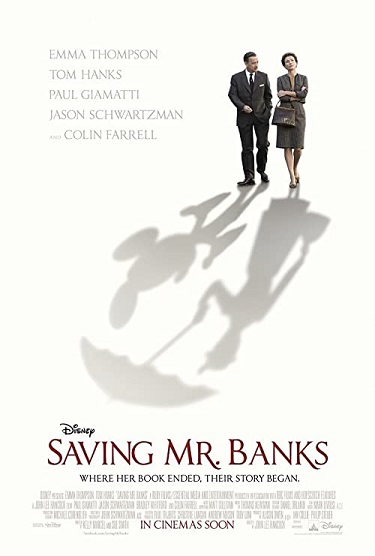
It seems unlikely that P. L. Travers fully comprehended what she was doing, but her 1934 book Mary Poppins was a bitter drop that joined an acidic wave that ultimately culminated in a Holocaust that only a few had really intended. The story, however, was distilled from the trauma that the author herself had suffered. Her book was an honest attempt to counteract the world's self-destructive addiction to fiat, but her failure to comprehend the psychological mechanisms of addiction made the cravings only worse and helped Europe drink itself into liver failure.
In the late 16th and early 17th centuries, trade with the Far East had funded the Dutch battle for independence, and ultimately the colony of the Dutch Republic in the New World. A major element was the trade in tea from China, which the Dutch introduced to Europe and America. The British too began to import tea from China but couldn't break into the American market, which was dominated by smuggled Dutch tea. Because of this, the London storehouses became congested with tea and to break the American market open, the British Parliament issued the Tea Act of 1773. This act allowed British ships from Asia to sail directly to Boston and while bypassing London, still owing tax there. The colonists didn't like their tea with a hidden tax, and threw the Boston Tea Party, which culminated in the American Revolution of 1776.
Meanwhile, the Chinese government — which oversaw the largest economy in the world, and maintained a global trade surplus — demanded tea to be paid for in silver cash. This gave the British the idea to smuggle opium from India, and sell it covertly to the Chinese public for the cash needed to buy tea from the Chinese government. The resulting epidemic of opium addiction ravished the Chinese coastal cities. In the early 19th century there was roughly one Chinese opium addict per every one English tea drinker (about 11 million). The first Chinese immigrants to the Americas were sailors, from China's coast, who in turn introduced opium to the New World. Very quickly the entire world embraced opium, and morphine and cocaine quickly followed. In 1839, the Chinese government first implored Queen Victoria to stop the opium trade, and when she ignored them, they confiscated all the opium in China. In response, the British Crown sent its navy to China, which bombarded its coast, confiscated Hong Kong and demanded 21 million USD for reparations (three times what Seward would pay for Alaska 27 years later).
China could not recover from this multilateral onslaught until after the Second World War the world's imperial chains began to loosen and nations could go in search of their own lost identities. In 1949, inspired by the one century old European Communist Manifesto, Mao Zedong proclaimed the People's Republic of China. His 1958 social reform program, the Great Leap Forward, left 45 million people dead and resulted the Three Years of Famine (1959-1961). The Cultural Revolution of 1966 wiped out China's history and reduced the collective Chinese mind from that of an ancient sage to that of an orphaned infant.
A spoonful of sugar had caused a world full of soot.
As Walt Disney demonstrated in his 1940 movie Fantasia, the obvious over-current of any artistic presentation always has a subliminal under-current effect. As much as a spoonful of sugar can make a medicine go down, a sweet thing ingested through the mouth can cause severe distress to the intestines (Revelation 10:10). But when a child almost dies from ingesting something poisonous, which reasonable adult would stay mad?
In an obvious allusion to Saving Private Ryan (1998), the movie Saving Mr. Banks (2013) shows the Expelled Mouse offering the Old World a passionate plea for self-forgiveness, under a paper-thin kite of metaphor and allegory. This delightful film is not merely about a "cranky, stubborn dame" and her cherished imaginary violations of natural law, but about letting the Mouse back into the frozen palace of international banking.
A kite can fly because a string ties it to the earth, and this is a metaphor for the grace of controlled craziness. The string makes the difference between a pack of feral wolves and a man's best friend, or between slavish obedience and a full-fledged populist rebellion. This obvious but controlled element of non-compliance demonstrates a perfect blend of accountability and innovation, and this in turn results in a highly sought after human quality (hence the naughty mystique of Audrey Hepburn, Susanna Hoffs, Brad Pitt, and so on). Herod didn't know about the Christ until the Magi told him, and Walt Disney didn't know about the Mouse until the market crowned him king. But whether on an industrial Steamboat Willy or among the Nile's papyri, the River always finds the Mouse. And now a shaken emperor realizes how close his empire has come to inflationary heat death: "It would have killed me to give him up," confesses Walt, "That Mouse is Family."
In 1945 Europe was exhausted. Its lands were smoldering holes; its populations were disillusioned and confused. After the war, Europe's longstanding cultures of literary narrative and artistic imagery were regarded with due suspicion and once attractive themes were now rejected in sober disgust. This cultural necrosis created pockets of false vacuum in the most popular forms of art such as music and movies. And that allowed the triumphant return of the prodigal. Hollywood and Rock and Roll had been made possible by the diversity of America's refugee population upon a soil of Arminian Protestantism, and together with Marshall's billions, this American trinity inspired the new religion of Europe's modern age.
🔼Übermensch
As first of the comic superheroes, Superman came to life in the US, between 1933 and 1938, rather obviously as a reaction to the goings on in Europe. He was a creation of Jerry Siegel and Joe Shuster, both Jews. In Europe, Peter Panic and his Lost Boys were propagating the idea that Superman (Übermensch; same word) would come about by oppressing or even murdering folks of Untermensch vintage, but Siegel and Shuster thought otherwise. Their Superman originated as Kal-El (כל אל, kal el, means "God of All") on the planet Krypton (from crypt, meaning below, hidden or encrypted), who came to earth as Clark Kent (means Highland Scribe), a mild-mannered public journalist by day (in peoples' consciousness) and secret crime fighter by night (in peoples' subconscious).
In recent years, Superman has slipped out of vogue somewhat but this is possibly because his Marvel super-colleagues increasingly clan up. Superman, namely, is the first, last and only Jewish superhero. And that's not because the other superheroes aren't Biblical — some actually are: specifically, Ant-Man derives from Proverbs 6:6, the Black Widow from Solomon 1:5 and wouldn't be a widow if she wasn't pagan, Iron Man comes from the many iron-rule references (Daniel 7:23, Revelation 2:27), the Hulk may have to do with the green (χλωρος, chloros, grass-green) horse of Revelation 6:8 — but because the Marvel superheroes aren't tethered to a common center that keeps them together, which is why they squabble so much.
Superman's powers are innate rather than derivative from technology or science-project-gone-wrong. Krypton isn't a distant place in space but rather in time. And Superman is not the sole rescuer or otherwise weak and helpless humans but rather the inner core of humanity as a whole, which is why Clark is a journalist rather than a tech-giant. Superman is a character like Benjamin Button; he makes time go backward by flying around the earth opposite its spin.

Superman (1978): One incurs a debt by selling one's future. One secures one's liberty by harvesting one's past.
Journalism, of course, is a continuation of the Persian invention of systemic correspondence, which the Second Temple personified. Journalism, as opposed to propaganda, is by definition not centralized and every separate report is to be reviewed and validated by the entire network of journalists and informed readers. When newspapers were invented, journalism was a matter of hunting and gathering, but with the modern "agricultural revolution" of syndicated news, the diversity of what people consume has declined to that of a McDonald's menu and we're all seriously malnourished.
When commentators mention "the destruction of Europe," this phrase is commonly understood to refer to the destruction of Europe's Jewry, but that understanding is disastrously narrow in scope. The Jewish element is not limited to the obvious practitioners of any Jewish tradition, but rather a natural element of any complex society and essential for its survival. By destroying her Jews, Europe destroyed one of its own most sensitive social organs — the one that secured its social cohesion — and set itself upon the withering road to perdition, leaving the "cranky, stubborn dame" to be redeemed by the baptism of peddling business interests of young America (as stunningly told in Sunset Boulevard, 1950).
Likewise, Batman v Superman (2016) is a caricatural but surprisingly wise review of how from the early 1900s, gentile corporate philanthropy (Batman), and women's liberation (Wonder Woman) started out as anti-Semitic as everybody else but then began to identify their common enemy in the Nordicistic pseudo-mythology of popular neopagan intellectualism (Lex Luthor and zombie Zod). In Justice League (2017) they were joined by social subconscious (Aquaman) and the new wave of rogue cyber scholars (Flash & Cyborg) as they battled the ancient über-folly that confuses liberty with abandon and order with legislation (and which, like Gruagach in Hellboy, seeks to assemble its Mother/Queen from elements stored in distributed boxes; a gender-inverted manifestation of the Osiris myth). Whether the League will ultimately succeed is anyone's guess, but their plight is dire, particularly also after it was demonstrated that the audience is willing to believe that Kal-El is actually killable.
Fortunately, there is still a wilderness is out there. Or as Paul puts it: "The whole of all writings (πασα γραφη, pasa grapha) is God-breathed and is useful for teaching, rebuking, correcting and training in righteousness" (2 Timothy 3:16).
🔼The War in Heaven
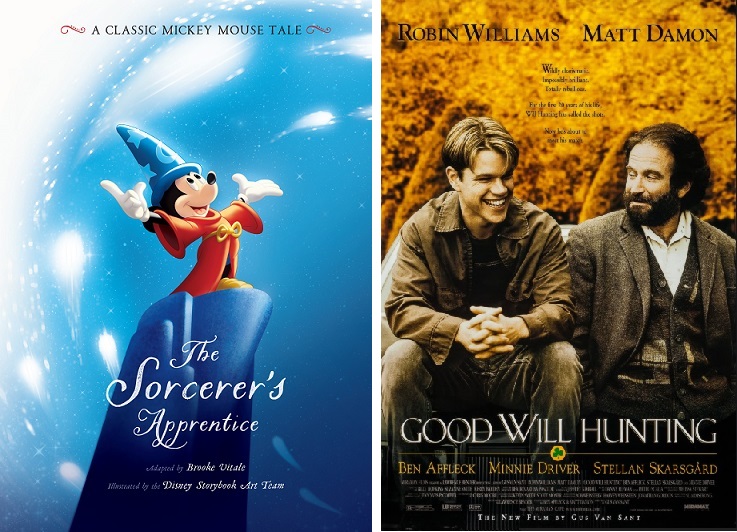
Right: Good Will Hunting (1997).
People like to say that mathematics is the language of the universe, but it isn't. The language of the universe is allegory (Psalm 78:2, Matthew 13:35). The tension between the two is the theme explored in the archetype of the Sorcerer's Apprentice, which was in modern times most excellently deployed in the film Good Will Hunting (1997, Sean being the sorcerer, Will the apprentice).
Unlike realism, allegory catches two birds with one stone and reduces entropy. Allegory allows the representation of something (say, the whole of humanity) by something else (the Internet), wholly independent of the consent or even knowledge of either the carrier of the representation or that what is represented. A hard drive doesn't know that it knows something, and if a human observer sees a mouse in a cloud, the observer collects her thoughts on mice, whether the cloud likes it or not.
This principle sits at the heart of all learning, of all consciousness, and all language. In the cultural world, literary allegory comes from sustained correspondence, with comes from script which comes from speech. And speech comes from Theory of Mind, which is the understanding that your neighbor has concerns that you don't have. Speech comes from the desire to understand one's neighbor's expression of need, which is ultimately his weakness (2 Corinthians 12:9, Zechariah 4:6). And that means that speech was invented not to list statements but to ask questions. And that means that the Word of God is not summed up by an ever growing list of dogmas but by an ever simpler question. And that means that the entire expanding universe has always been producing an ever contracting dispersion. All existence stems from curiosity, and all creation from boldly going where no one has gone before.
Game Theory is the branch of science that deals with complex interactions of many interacting "players". What Game Theory has figured out is that a game that has a great many players but only one winner won't be in vogue very long, and will quickly peter out by lack of willing participants. A game that has no single winner but a lot of happy players is a game that could go on forever (A Beautiful Mind, 2001). Michael defeats Santa not by winning but by making the game fun (Revelation 12:8).
Mathematics is a janitor, a very handy and most appreciated janitor but a janitor none the less. And while its range of application may be infinite, its scope is always limited. Trying to rule the world is the same as trying to answer the "Great Why?" of the universe. Prince Michael will always win from Santa because playing Michael's game is much more fun than playing Santa's. Theoretical scientists and philosophers who try to formulate the Great Why into some Theory of Supersymmetry, will always be second best to the many janitors (and maintenance mechanics and nannies and cleaning ladies) of our world, who always operate locally and relative to their position in the greater interconnected scientific realm. Super-scientists who attempt to solitarily solve the Great Why of the universe (The Zero Theorem, 2013) will always lose from a bunch of buddies who tackle a complex problem and then go bowling (The Big Lebowski, 1998).
Allegory comes with an inherent broken symmetry (or else it would be making mere exact copies). Mathematics comes with inherent symmetry (the "is equal to" sign). Allegory starts with one simple statement, and then grows into wherever the mood takes it. Mathematics starts with axioms and slowly builds itself into a tower of Babel. Wherever allegory goes, it will always have covered everything. Wherever mathematics goes, it will never have covered everything.
Broken symmetry invites a human observer to understand that her own firmest convictions might be wholly alien to another, equally valid perspective. This principle is also the reason why a perfectly non-cancerous interpretation of one genetic code can result in cell types as diverse as muscle, nerve, skin, blood, bone, ocular cornea, and acid producing stomach cells. Mathematics is essentially binary (something is either true or not) and cannot produce a system of variable interpretation that remains consistent.
The solution to the riddle of the Sorcerer's Apprentice is simple but anti-intuitive. In a well-running society in which most people are happy, most members see themselves as Apprentice and everybody else as Sorcerer (Daniel 2:30, Philippians 2:3, Romans 12:10). That means that in a functional society every person masters a math-based language to learn about what local problem needs to be tackled, and an allegory-based language to act out his perspective on the global reality.
In a poorly running society where disaster follows disaster, people believe that one is either a Sorcerer or an Apprentice. They further believe that a Sorcerer is reckoned by his obvious successfulness in amassing wealth and power, and that the function of the Sorcerer is to shepherd the Apprentices and protect them from themselves. This allows thieves and tyrants to be mistaken for Sorcerers and overtake society's governing elite, while the real Sorcerers end up in camps by the river, working as clowns or stage magicians or as substitute teachers in high schools. A society in which people become increasingly forgetful about the true nature of the Sorcerer can be recognized by the widening of the gap between rich and poor.
Such a disaster society invariably asks who is greater, the Sorcerer or the Apprentice, and while this seems a no brainer, it really isn't. Jesus taught that a disciple is never above his master (Matthew 10:24, Luke 6:40), but he also taught that the greater should serve the lesser (Matthew 23:11, Luke 22:26). In our modern world we teach our children that their greatest expertise is in the knowledge of themselves, and that they should pronounce the finer points of their own identity like gospel to the masses. That's what art is for, we explain, to express yourself so that everybody else can learn who you are. The virtue of introspection marks the wise, we insist, and the world is eagerly waiting to hear all about you from you.
In reality, however, every person's greatest folly is their understanding of themselves, and a journey of introspection without a proper guide from outside is doomed to end in a vast, cold and impersonal hole of nothing but emptiness, death and utter oblivion. Every person is an Apprentice in matters of their own selves and all others are the Sorcerer who will teach you patiently but precisely who you are.
🔼The Joker and the Thief
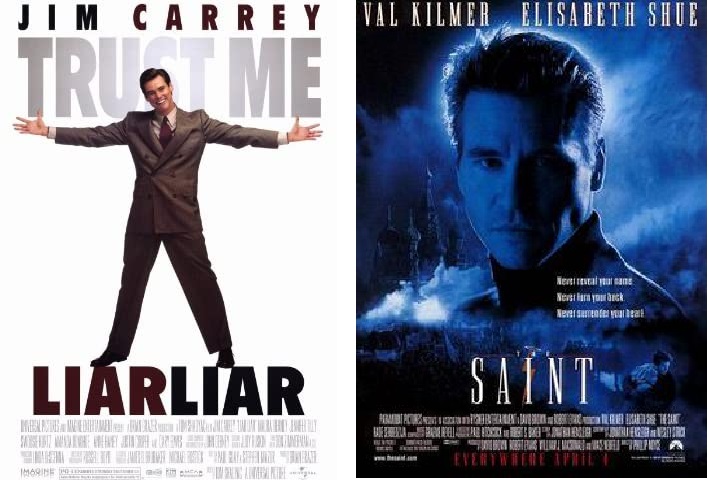
As noted above, in the literature of many ancient cultures, all dynamic reality stems from a dance of two elementary entities (relative to an observing third), which are perfect in every way unless they wax or wane beyond certain upper and lower limits (John 8:44, Isaiah 21:2). Theology derails when the dance and the dancers are viewed from any other point of view than monotheism. Reality derails when (1) one of the two dancers gets the upper hand too much too long, (2) the dance becomes too violent too long, or (3) the dance become too docile too long.
The two entities are Representation (a.k.a. the Joker) and Standardization (a.k.a. the Thief; see Matthew 12:29):
- The Joker is lunar. Hinduism calls this force Shiva. Judaism calls him Shaddai. He is the Apprentice since he only reflects light and is not an original source of it. Still, his gravitational pull is twice that of the Thief, which makes him devilishly enticing. He joins his gravity with that of the Thief to form a singular unified but dynamic gravitational pull on the earth. His specialty is to assume the now invisible light of the Thief and reflect it according to his own nature. The Joker in senior form becomes the Liar, whose expression no longer has any resemblance to an implied original. This also signifies a state of individual or social madness or drunkenness. The Joker in junior form is any form of useful representation: writing and art, speaking, music and so on. His representation can never be static but must always be on the move, or else be continuously reinterpreted or else be understood as a link of an invisible chain of development and evolution. When his dynamic representation is held to be a static original, the reality becomes the lunar-centric reality of a nocturnal existence. This implies slavery and submission by the diurnal ones.
- The Thief is solar. Hinduism calls him Vishnu. Judaism calls him Father. He holds such vast stores of energy that he cannot other than shower his entire vast environment with it. The hydrological cycle on earth was once the result of residual inner heat but is now solely controlled by the sun. The Thief has also taken full control of the cycle of life that had once started from the earth's inner friction, which was ruled primarily by the Joker. The Thief represents any sort of standard and governs all fair trade and all fair exchange, but in senior form he becomes the Murderer who kills the competition and keeps killing until he causes the death of himself. In his junior form he is a wandering youth pining for a companion to mate with. This youth always represents a standardization of some sort, which requires a "death" of one's own personality, and his mate ultimately is society at large.
Note that the above model is as enticing as lunar. It's a representation, a model, and a mere stepping stone toward much greater models of reality. But, as lunar as it is, it also explains a great deal about human psychology. To a human mind (the earth) the sun represents the mind's center of reason, but the emotive center is formed from the combined gravitational pull of moon and sun. Since the moon's gravitational pull is more than twice that of the sun, the combined center of gravity and thus a person's emotional center only sporadically lines up with that same person's center of reason. When the moon is full, a person may experience an emotive pull in a direction opposite to what she knows is right. The dynamics between these two forces was summed up by Greek mythologists as Apollo (solar) and Dionysus (lunar).
The ultimate deity of monotheism is unity, and unity is expressed in balance and equilibrium. Unity is what brings the universe forth and what maintains it. Unity will always wrestle any polarization or extreme into submission and diffuse any concentration of mass or energy. What prevents the whole universe to settle into any static extreme is a small element that provides a counter momentum, like a small spatula in a very large bucket of milk. Judaism calls this element satan, and since Judaism is a monotheism, this satanic element is contained within the unity of the universe.
Also note that the sun and the moon that we can see with our eyes are hunks of matter. They form a family together with the material earth, not with the life on the earth. As we have seen above, the life on earth is its own (hollow) earth, and it has its own moon and sun, which don't consist of matter but of soul (if you will). Likewise, the flat earth envisioned by folks who are by their nature tuned into the mental world of mankind is not a material earth but a spiritual one. That spiritual earth also comes with a sun and a moon which are also spiritual.
The material earth has no eyes or mind but can sense the direction of the sun by getting warmer on one side and colder on the other. And it can feel the direction of the center of gravity of the sun and moon combined. All material activity on planet earth derives from the non-linear interplay of the two forces of sunlight and sun-moon gravity. Living cells are able to photosynthesize sunlight but are otherwise unable to see the sun and moon separately. They too only sense the source of their sunlight and a combined sun-moon gravity. Only creatures that have minds and eyes can see and contemplate the individual material sun and moon, two floors below them.
🔼And the Winner is...

Medieval Catholicism failed to understand the nature of time, believed that time was linear and that the universe began at a point in time and thus that the Creator always operates within time. The Jews knew that time is a product of the universe, and that the universe did not begin at a point in time, but rather that time began at a point in the universe. The Jews realized that time is comparable to the mind of a complex organism, that it is not linear but mountainous and reactive not only to concentrations of mass but also of knowledge. They understood that the true progression of the universe occurs in complexity, and that the temporal axis relates to the axis of complexity the way the horizontal beam of the cross relates to the vertical one.
The Jews realized that when a man is made in the Creator's image, man should "look" like the universe as much as like the Creator, namely like a righteous governor who in an unrighteous world necessarily begins his career looking like a "man of war" (Exodus 15:3, Isaiah 59:15-19, Ephesians 6:10-17). The Man of War has the sword of the temporal singularity in his right hand and the shield of heat death in his left. His feet are shod with the principle of broken symmetry (Isaiah 52:7, Romans 10:15), which corresponds to Mickey Mouse's yellow or golden feet.
Where the complexity axis intersects with the temporal axis, in the torso of the Man, our "here and now" occurs, and further upward exists the realm of Theory of Mind, which the Jewish authors represented in the Titulus Crucis, which read "John Doe from Anywhere is the King of the Jews" in Aramaic, Latin and Greek (John 19:20). The Jews also understood that everything about this image is dynamic, because every element of it has inherent freedom. Medieval Catholicism denied freedom and cast this image in gypsum.
A belief in a solitary axis of time is a relatively novel folly. The understanding that reality is based on the intersection of two axes resulted in the symbol of the swastika, which has existed since at least 10,000 BCE and has been found in cultures from China (where it refers to "all things") to India (where it means "auspicious") to Europe, where it was associated with the sun by the Illyrians or lightning and thus supreme deities such as Zeus by the Greeks. It was the swastika of popular demand that Constantine saw in the sun over the Milvian bridge, but much earlier swastikas appear in the art of ancient civilizations from the Scottish Highlands to Scandinavia, all over Celtic Europe, Russia and Asia, and as far south as Egypt and Sudan.
The key difference between the people from whose subconscious the symbol had arisen (the Sorcerer) and those who had merely appropriated it (the Apprentice) was that the latter believed that the symbol was fixed and that what was being symbolized had to be clipped to match the symbol, whereas the former understood that the symbol grows to reflect all there ever was, while all there ever was in turn grows to match the symbol (Matthew 23:16-22). The Apprentice only saw the cross but the Sorcerer understood that the fertility of the cross sat in its north end, where Theory of Mind was the foundation of a whole new creation. This resulted in the symbol for the female gender: ♀, which is a stylized representation of the cross of Christ when it includes the Titulus Crucis (hence too the Egyptian Ankh). Earlier we found the creative principle represented in the male symbol, ♂, which means that the image with which the Roman church terrorized its people ultimately derived from a transposition of the universe's creative male principle upon the fertile female principle. The same was attempted in Egypt by combining Ankh and Djed, which resulted in what Ace of Base called The Sign (1993).

Medieval Catholicism failed to understand blockchain, and therefore the one-ness of all things. Their sense of the deity was subsequently way off, and comprised a five-member pantheon that derived from pagan polytheism: Father, Son, Spirit, Wife/Mother, and Satan. These five were surrounded by a host of demigods which Medieval Catholicism called saints.
The Jewish authors emphasized that YHWH is one, has always been one and will always be one:
"Hear, O Israel: The Lord our God, the Lord is one!" (Deuteronomy 6:4).
Their meditations were neither religious nor speculative nor fantastic but concerned falsifiable excursions into measurable reality. Unity in the Jewish sense is unity in a cross-validation sense, a blockchain-slash-network-validation sense. In the elaborations of Jesus:
"Sanctify them in the truth; Your word is truth. As You sent Me into the world, I also have sent them into the world. For their sakes I sanctify Myself, that they themselves also may be sanctified in truth. I do not ask on behalf of these alone, but for those also who believe in Me through their word; that they may all be One; even as You, Father, are in Me and I in You, that they also may be in Us, so that the world may believe that You sent Me. The glory which You have given Me I have given to them, that they may be One, just as We are One; I in them and You in Me, that they may be perfected in unity, so that the world may know that You sent Me, and loved them, even as You have loved Me. Father, I desire that they also, whom You have given Me, be with Me where I am, so that they may see My glory which You have given Me, for You loved Me before the foundation of the world." (John 17:20-24).
The prophet Isaiah says it this way:
"That men may know from the rising to the setting of the sun that there is no one besides Me. I am YHWH, and there is no other, the One forming light and creating darkness, causing well-being and creating evil; I am YHWH who does all these." (Isaiah 45:6-7).
People who know the Man know that the Man will grow despite anybody's best intentions or worst mistakes (Luke 1:80). Foolish people believe that breathing in is better than breathing out, that day is better than night, that a bull market is better than a bear market, that sitting on top of the world is better than being persecuted. People who know the Man know that a living being needs to both inhale and exhale, both the day to work and the night to rest, a bull market to harvest and a bear market to sow, and that the top of the mountain is carried by its base so that when the base is rejected, the top blows off, and the rejected come out the top. People who understand these things know that the persecuted will inherit the kingdom of heaven (Matthew 5:10-12), that persecution leads to an opportunity to witness (Luke 21:13) and that suffering leads to perseverance, perseverance to character, and character to hope — and hope to healing (Romans 5:3-5).
This is why science — the collective verification of observable reality in the language of mathematics — is a brilliant janitor who never quite gets the job done and can't answer a simple question if that question has to do with purpose and desire (as Sean demonstrated to Will). Computers can't come up with something entirely new and thus true growth because they can't do broken symmetry, which makes them lunar and a government by a synthetic and centralized Artificial Intelligence a really bad idea, unless it is checked by at least an equal momentum of solar government that ultimately arises from every person's freedom of expression.
Any government can only be virtuous if it reflects humanity's solar center rather than patterns in its lunar data, because without solar input those patterns will begin to repeat until they solidify in the worst nihilistic tyrant the universe has ever produced. In the world of literary allegory there's always another neighborhood game, and that makes the Great Global Bowling League fun and eternal (John 14:2).
🔼Fences

The Absence of Theory of Mind is heir to the conviction that your neighbor's concerns and intentions are wholly represented by what you can possibly imagine. Most individual humans have developed a sense of self when they are 18 months old and a functioning (albeit immature) Theory of Mind at around seven years of age. Most modern human cultures, however, do have a sense of self but don't possess Theory of Mind, and subsequently do not know that any other culture may have unimaginable traits as shared norms among its members.
Many people today fantasize about humanity's past without proper Theory of Mind, and imagine that our distant ancestors were what we would be without mobile phones, cars, computers, the Internet, governments and so on — in other words: a stripped version of ourselves, primitive and poor. If another culture is defined by what this other culture could possibly share with ours, it is defined by a small part of ourselves and thus understood to be smaller (or less) all together. When we concede that our shared elements are amended on both sides by an equal number of unimaginable traits, qualities and abilities, the others are as great as we are and great deal more interesting and impressive.
The Absence of Theory of Mind leads to a fence that prescribes precisely where your House ends and your neighbor's House begins. Since your neighbor's territory is imagined by you, and you can't imagine beyond what you can recognize of yourself in your neighbor, your neighbor's territory is necessarily smaller than yours. And his neighbor's territory is even smaller. And his even smaller. Someone without Theory of Mind imagines himself as lord of the greatest realm at the heart of rings of ever smaller territories that quickly grow to zero. Beyond the line of what is recognizable as human culture to the central lord, begins the realm of beasts. And this explains why certain reasonable cultures could regard other humans as beasts, and treat them as such.
A world that is peopled by cultures without Theory of Mind is like a game played by a large number of unsatisfied players. If one of those players should manage to become the emperor of that world, then his sense of where the fences should be becomes the actual situation in the realm. That in turn creates a world with large villas around the imperial palace and ever smaller houses the further away. But the people who inhabit the smallest houses in the poorest neighborhoods, are not actually smaller in size but simply more alien to the native emperor and only perceived smaller by the emperor. These folk feel like exploding out of their constricting yards while the emperor believes he has created heaven on earth. The emperor sees a perfect world outside his own window and has no idea what might trouble the folks of the outer provinces. To the emperor, all resistance to the Empire is the work of unreasonable terrorists and vandals, and his final solution is to simply hold them accountable for their irresponsible provocations.
The Roman empire told Roman stories. The literary digestive system of Roman artistic expressions digested Rome's perspectives and turned it into the substance of the Roman mind. A Celtic culture, which needed Celtic literature to digest Celtic concerns, didn't thrive on Roman substance. It was both starving for what it needed and accumulated what it couldn't digest.
The end of any imperial age is invariable heralded by systemic sedation and progressive intoxication. Because of the fences, nobody can properly dispel their wastes and the wastes accumulate in yards, attics and crawl spaces, and people spend most of their time dispensing deodorants and paints and bravado to cover it all up. The end of an epoch of ATOM (Absence of Theory Of Mind) is also invariable accompanied by a collective voice that cries out for garbage collection. This is where the popularity of the song Where is the Love? by the Black Eyed Pease comes from.
An age of Theory of Mind (TOM) begins with the happy world-wide chatter of liberated prisoners learning each other languages (Acts 16:26). Then, invariably, an urge to perfect and preserve the global conversation emerges. A wave of enthusiastic preservationists mounts without realizing that this wave is building a whole new ATOM world in a hugely detailed set of hieroglyphs that attempts to cover everything worth saying. This is attempted by adding a new hieroglyph for every new thing said. When a new TOM counter-movement begins to trickle, ATOM rejects it on general principle since this rebel movement adds no further detail in the way the ATOM system understands data preservation.
This inevitable failure of every ATOM attempt is what in modern times became known as the Incompleteness Theorem of Kurt Gödel, which states that every formal system must always remain incomplete (to the demise of David Hilbert's program, which aimed completion by a set of axioms). Completion comes from a radical departure from the norm. The alphabet won from the hieroglyphs the way socially inclined mice won from the Tyrannosaurus Rex, and ultimately the way literally allegory wins from mathematics.
Reciprocity always wins from accumulation. Atoms could build molecules for the same reason why eukaryotes could build organisms, and human minds can create cultures. It's because all of them came to terms with their own incompleteness and so embraced Theory of Mind. Without knowing what it was doing, the free market has selected Mickey Mouse to symbolize Allegory and ultimately the resurrected Word of God. And that is not because Mickey Mouse looks cute, but because deep down inside humanity is crying for a flood of fresh water to wash away all the undigested psychological garbage mankind has accumulated on the earth, in central banks and hedge funds, in people's private minds and in the culture at large.
The Mickey we know today is no longer the Mickey Walt Disney drew in 1928. Modern Mickey is the result of nearly a century of evolution, driven by market forces, simply by consumers freely buying a certain version more than another one. As much as Mickey's whole body derives from the overly familiar archetype of the Crucified Christ, the outline of Mickey Mouse's head derives from the botonée, which in turn symbolizes multiple minds partially overlapping.
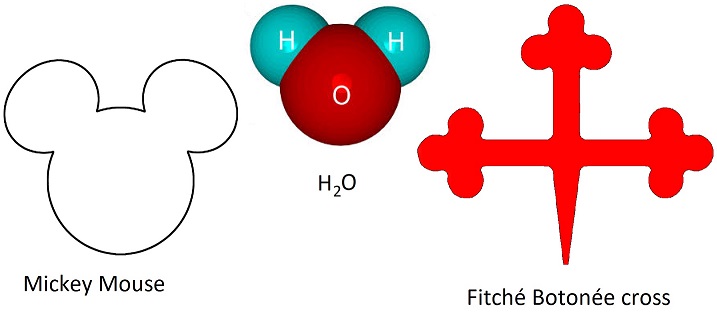
The adoption of Mickey Mouse's head was probably also helped along by its obvious resemblance to the popular representation of an H2O molecule, which in turn begs the question whether Santa laughs "HO HO HO" or "HOH HOH HOH," or even הוה הוה הוה (Revelation 12:13-17).
🔼A Trip to the Moon

When finally an epoch of ATOM concludes, all fences burst from internal pressure and crumble from the weight of the garbage and a thunderous cloud of buzzing infestation will gorge on every last morsel of a city's junk. Since this buzzing infestation is brought about by universal forces, which stand in stark contrast to the familiar human forces that build the fences, our human culture discusses these inevitable events in terms of humans taking off from earth to find other worlds, and extra-terrestrials coming down to earth to wreck established human institutions. It's a story as old as that of Icarus, whose technician father had built wings for both to escape Crete.
Empires invariably collapse for no other reason than humanity's intrinsic instinct to want to burst out of any synthetic confinement. The theatrical meditation on this principle was initiated by the 2nd century CE satirist Lucian, who hailed from the Roman Imperial province of Syria, and who translated it into a trip by ship to the moon (Vera Historia). The modern take on it began in the 17th century, when Johannes Kepler translated his deep psychological insights into a man's abduction to the moon by demons (Somnium, 1608). Humanity's collective intuition to want to burst out of manmade confinements reached critical mass in the 19th century, which resulted in fame and fortune for writers such as Jules Verne (whose alien worlds were still terrestrial but not surface-bound). One of the first movies ever made, and certainly the source of one of the most memorable movie images, was George Méliès' A Trip to the Moon (1902), which discussed the same cultural aversion to synthetic confinement.

In the early 20th century, Europe wholeheartedly embraced its promised departure from earth's confining empires but failed to take flight and plunged itself into the First World War. The English author H. G. Wells had described that inevitable outcome in his novel The War of the Worlds (1897), in which Martian invaders (hence Marty) came to earth to harvest humans for their blood, but were eventually defeated by earth's native microbes. In 1938, the American Orson Wells turned the novel into a radio program, which brilliantly achieved that everybody and their dog joined the discussion on the why and how of the War of the Worlds, two years before it could bring out another heave in continental Europe. Whether consciously or not, H. G. Wells and Orson Wells had vaccinated Britain and America against National Socialism by exposing them to its core fabric in literary format.
An important purpose of NASA's 1969 moon landing was to de-couple the image of the moon from humanity's instinct to destroy its own world. Since 1969, the moon no longer represents humanity's lunacy. It no longer witnesses of tilted axes and concentric cycles, of the inescapable misalignment of mankind's cultures and the solar center. The moon is now no longer part of the unreachable heavens but has become an outer realm of the terrestrial territories, no longer a false light that lures mankind onto the road to perdition, but a place where mankind has safely touched-down by the merits of man's own technological ingenuity and determination. Since Neil Armstrong and Buzz Aldrin planted an American flag on the moon, the world is told that America will exist as long as the moon exist.
Whether true or not, this idea is of course wholeheartedly laughed at by the moon landing hoax crowd, as well as the dramatic destruction of the moon as depicted in movies such as Austin Powers II (1999), Time Machine (2002) and Oblivion (2013). In 1976, the movie Network explained that the American flag only means something in the archaic narrative, since in natural reality there are only dynamic human collectives that form a borderless global economy. Neil Armstrong's giant leap was either for the whole of mankind or for nobody at all.
But the serpent of old gave humanity the Cold War, which gave the planet an arsenal that guaranteed that humanity would never have to fall into alien hands alive. Jewish Alien Invasion movies began to adopt themes of mutual exploration and a joined spiritual adventure (Star Trek, 1966, Close Encounters, 1977, ET, 1982), whereas Gentile movies began to emphasize the many dangers of Others and especially technological Others (Star Wars, 1977, A Space Odyssey, 1968, Aliens, 1986). A whole new form of modern mythology emerged from the undercurrents of human psychology and congealed into Alien Abduction Syndrome for the fearful and Ancient Alien Theory for the curious.
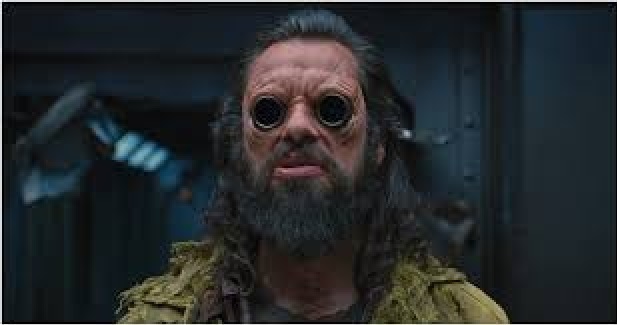
Jewish public meditations on the cultural function of the moon, such as Men in Black III (2012), suggest that since the landing, the moon functions as a prison for alien creatures that we don't want to see running loose on earth. The ethnonym Boglodite reminds of the Aramaic phrase בגלד (begalad), "because of growing skin" (i.e. freezing over, going blind). The name Boris is Bulgarian for wolf and is the equivalent of the German name Adolf.
The name Boglodite also reminds of the phrase בגליא (begalia), which means "among the exiles," which in turn refers to Jeremiah 29:1, Ezekiel 1:1 and Daniel 2:25. Even more comparable would be בגליא די (begalia dy), which means "because of a sufficient remnant," which not only reminds of a lingering bacterial infection (MIB1 tells of lice, MIB2 of intestinal worms, MIB3 of a bacterial infection and MIB4 of party drug induced psychosis and paranoid delusion; all brought about by alien invasions) but also reminds of Isaiah 1:9. The Aramaic term uses the verb גלא (gala'), from which also comes to word גליא (galia'), Gallia or the land of the Gaul or Celts. The Hebrew uses the cognate verb גלה (gala), from which comes the name Goliath. And that explains why the Highlander decapitated the Kurgan instead of vice versa.
🔼Cats and eagles and olive branches
Biologists have long struggled to explain how birds evolved their ability to fly, but that's because flight is a pleasant side effect of a more fundamental desire, namely to protect young. On average, the young of reptiles that protected their brood by spreading their front limbs over them had a better chance to survive than the young of mothers who found better things to do (Matthew 23:37). This is the reason why in antiquity protecting spirits, such as Biblical angels, have wings: not to fly with but to protect with (Psalm 91:4). And the flight of Santa, Peter Pan, Marry Poppins and Superman all answer to the idea of protection, which is possible in the real universe, rather than levitation, which is not.

If words are what make a human, societies without legislations are jungles with only animals. The story of the rise of human civilization is told by movies such as Jungle Book (hence also the leitmotiv of the overgrown ruins), in which young Mowgli ends up as an orphan in the jungle because a tiger killed his parents. Like Remus and Romulus, Mowgli is adopted by wolves (the feral version of Mickey's Pluto, which is the accumulation of capital), but Shere Khan, the law of the jungle, will remain his primary foe. Only when Mowgli burns down half the forest, he is able to subdue the cat (hence also Star Trek II: The Wrath of Khan).
Societies that exhaustively expound their legal codes in an attempt to describe every possible variation of subversion, are commonly attracted to national symbols that involve mouse-hunting and aquaphobic animals: cats, falcons, eagles, owls, snakes and so on. Such predators prey on small mammals or the young of larger mammals, and they serve the king by keeping the fields pest-free and harvest ready. But wings in a national symbol indicate a state's desire to preventively shield and protect its fields and all that grows on it.
Ancient Egypt had her stony Sphinx and goddess Bastet (a domestic cat), who was the goddess of cosmetics and protected the home from evil spirits and diseases (obviously by hunting mice). Peter Pan's Tiger Lily represents "pure natural law", which comes down to survival of the fittest. Peter Panic embodies polytheistic rule by coercion and seduction and violation of natural law, and his nemesis Hook represents economic advantage from understanding the monotheistic universe.
Burning subversives at stake is a tradition handed down from empire to empire. Rome did it to People of the Way, and Christians did it to Protestants (and even Tiger Lily's people were into it, apparently). Black Pete's bundle of birch rods doesn't only signify a stake, it's also the symbol for strength by joining forces. In Rome this principle was known by the Latin word fasces, bundle, from whence comes the familiar word "fascism".
Rome didn't choose the Egyptian wingless feline as its state symbol, but went with the broadly winged eagle that the Greeks sported and called it Aquila (hence our word "eagle"). The eagle standard became the signum manipuli, or the symbol that kept large numbers of soldiers centered and together. Holy Roman emperors up to Hitler would call this symbol the Reichsadler (Empire's Eagle) and nowadays it's called the Bundesadler (Federal Eagle) but it's still the same beast. From the Latin word manipuli comes our verb "to manipulate" and it literally means "filled hand". This word originally described a bundle of straw that was wrapped tightly and held up on a long pole during battle to help soldiers coordinate. This Roman mechanism to keep people together was based on forcing everybody into the same standard and uniform. It required all individual characteristics to be erased and was ultimately based the one-size-fits-all approach of the ATOM empire.
The obvious polar opposite of Rome's signum manipuli is a principle of social cohesion that is based on the eager appreciation of difference and otherness, not merely a fashionable tolerance but the intimate understanding that society's very salvation comes from one's neighbor incomprehensible otherness (Song of Solomon 2:4).
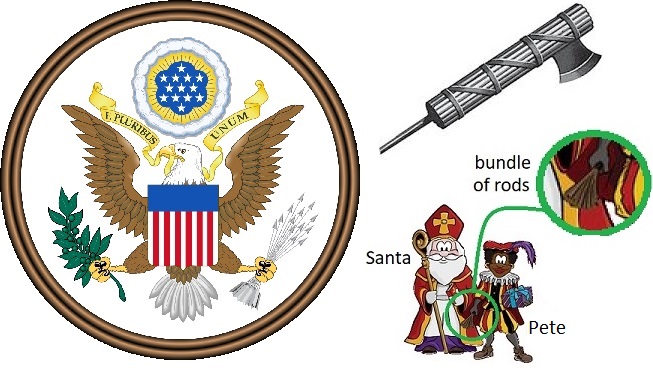
The House of Mouse thrives mostly in the Unites States, possibly also because the eagle of the Great Seal is a bald eagle, and thus a fisherman like Jesus' disciples. Like many emblems of western government, the US eagle too holds a fasces in its left talon, but it consists of arrows (2 Samuel 1:17-27). In its right it holds an olive branch, and this is not simply a symbol of peace.
The symbol of the olive branch comes from the story of Noah, whose world had been flushed out and who eagerly awaited the safety of new shores, just like the many mickeys who would people the US over the centuries. When Noah's ark hit the peaks of the mountains, he first released a raven and the raven kept flying around, waiting for a place to settle down somewhere (the Hebrew word for raven, ערב, 'oreb, closely relates to the name Arab and means nomad). Then Noah sent out a dove, but it returned because it couldn't find a place to land (which suggests that the raven was still airborne). A week later, Noah sent the dove out again and this time it found land, and even some freshly sprouted vegetation, which nobody had seen in a very long time. The profundity lies in that the dove picked the branch and flew back to her former captor, Noah, and handed it to him as both the proof of and an invitation to enter the new world she had found.
The olive branch is not merely a symbol of peace that is offered across the fences of an ATOM world. It is the symbol of forgiveness for a world of pain that was inflicted by a foolish polytheistic reptilian empire upon the weaker monotheistic mammalian society that lived in the underbelly of its world.
🔼Obviously not a golfer
Catherine of Aragon was the daughter of Queen Isabella I of Spain and became the Queen of England in 1509 when she married Henry VIII (or Octavian in Latin). She gave birth to a daughter, Mary, who earned her sobriquet "Bloody" by going after Protestants, of which there were many. Henry, namely, had taken an extra-marital shine to young Anne Boleyn, who had spent her early formative years in the Low Lands and her later ones in France. When Catherine failed to produce a male heir to the throne, Henry aimed to divorce her and marry Anne, but for this he needed the Pope's permission, which he didn't get. And so, Henry VIII broke away from Papal rule and established his own church, the Church of England, which was Protestant not for complicated theological reasons but simply because Henry felt that a king should be able to peg who he wants. There was, however, a far greater promise to Protestantism than the freedom to chase tail.
When the legions of the Roman Empire invaded a region, their first order of business after defeating the local militia was to compromise the autonomy of both the local government and the local priesthood. Every complex society has such systems because they arise organically, and that is because they are self-similar to a complex organism's cardiovascular system (government) and lymphatic system (priesthood). Although the government and blood systems have their subtleties, their existence and importance have been obvious throughout history. The lymphatic system, however, wasn't even discovered until the 1650s, from which we can learn that the purpose of the priesthood must have always been a mystery to the uninitiated. This explains why in 5th century Europe the Roman government was made to collapse, while its diseased lymphatic system was allowed to continue until the Reformation, in the form of the Roman Catholic Church. It also explains why modern commentators continue to confuse the ancient Celtic Druids with religious leaders. The Catholics were religious but the Druids certainly were not.
It's often said that history belongs to the victors, but what is not often said is that it's not the victors who tell the tale but rather a specific class of story tellers that exists simultaneously within the vanquished and the victors. These story tellers tell a story that is acceptable to their victorious overlords (who pay their bills) but which tells a much greater story in a language that their landlords can't recognize and thus oppose or eradicate. The most central mystery that is meditated in all of world literature is freedom. The most pressing question of all of world literature is how to explain freedom to a people that knows only captivity. When Shakespeare decided he would tell the story of Henry VIII he gave his play the title All Is True, in obvious albeit cryptic defiance of the Pope's insistence that only very little is.
Until November 3, 1534, the Pope had had the sole authority to declare what was proper doctrine and what wasn't, and that had resulted in a very shallow heaven of salvific literature and an enormous heap of heathen rejects. The Pope kept reigns on his tiny island of doctrinal purity by publishing Papal decrees, which were called "bulls," after a Gaelic word for "big" or "important." The name Boleyn stems from that same Gaelic word, which suggests that the family was named after their high social status. The same Gaelic word, however, also came to denote a certain game with which the English nobility liked to divert themselves, namely bowlyn, which was a parlor version of an ancient ritual that was first described in 4th century Christian Germany (and is clearly related to the French jeux de boules and the game of marbles). The ritual involved a personal keg that in Christian terms represented a "heathen." Multiple kegs were placed together and a stone was rolled toward the kegs, knocking some over and some not. When all the kegs were knocked over, they were set up again. And again. And again.
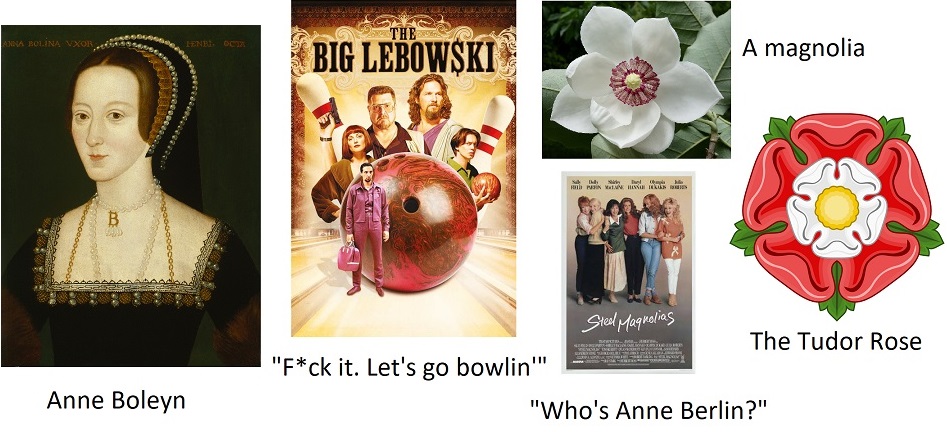
The names Silas and Silvia come from the Latin word silva, meaning forest or woodland, and as Peter Wohlleben explains, a forest consists of equal amounts of mass above and below ground. Above ground the trees occupy their own spot and only the ends of their branches touch, but underground their roots are wildly entangled and form webs via which chemical messages travel across entire continents. Animals that live in the forest keep the forest healthy and happy, but underground a similar zoo of bacteria and fungi proliferate among the roots and form a layer of living tissue wrapped around the living skeleton of sylvan roots. When one tree is cut, its roots stay in the ground and live on and stay part of the greater communication that is the forest. Seeds sprout because of the opened space and soon a young tree will "reincarnate" to fill the place of the fallen one within a never waning context.
In The Truman Show (1998), Silvia's most pressing dilemma was to find a way to get to Truman, to explain to him the utterly bizarre truth that beyond his world of synthetic norms there was a world of freedom and chaos, of pain but also of joy and fruition. Again and again she tried to get to Truman and kept failing, until Truman's mounting suspicions about his world finally gave him the courage to set sail to the edge of it and find the door that was there all along.
What is freedom? How do you infiltrate a lucrative world of synthetic captivity? How do you explain freedom to a people that is deliberately kept scared and are told that their salvation lies in compliance? How do you combat a ruling elite that has found a way to turn its own slaves into an army that fights itself? How do you solve a problem like Maria?
🔼Blood and Water
The first step away from Papal sovereignty and toward the inclusion of whatever works, quite literally started with a game of bowling. And bowling appears to have started as an illustration of the gospel of scientific scrutiny to a society that was used to being told what to believe. It illustrated that everybody has their own creative insight, which could be smithed into a hypothesis which in turn could be presented to a council of learned men who would try to knock it over in every which way they could think of. As long as the hypothesis remained standing it would be added to accepted dogma, but it would never be shielded from continued assault. If it was ever knocked over, it would be rejected until all kegs were down and the round was over and the kegs were all put right back up again for the next round.
The revolutionary idea of continuously trying opinions by means of an ever growing body of collective confirmation comes from Daniel 2:35, but the true meaning of the game was never forgotten, certainly not in Britain. In 1962 Giorgio Gomelsky named his favorite young band after it.
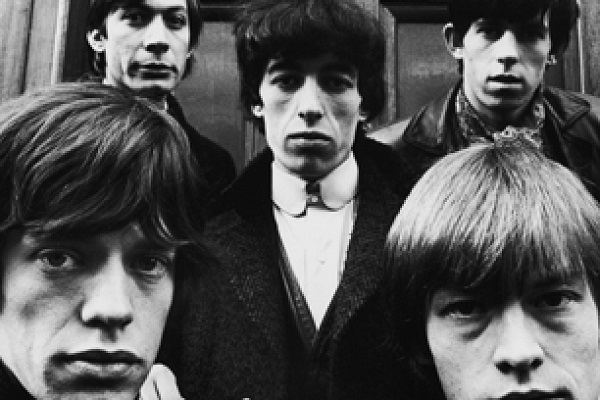
The great promise of Protestantism in the 16th century was that it would break the Roman chains of religion and restore the lymphatic priesthood. A religion presents a narrative and demands that the audience complies with the narrative and that it organizes itself according to the narrative. Growth is achieved by priests periodically showing up and trying the audience against the narrative. The segment of the audience that fits the story the best is rewarded, and the segment that fits the story the worst (or not at all) is cut off and destroyed.
A lymphatic priesthood, on the other hand, listens carefully to the audience and sums up their unorganized voices in a synthetic story. This story they present to the audience via a technology that they themselves have developed for that purpose, and then they listen to the responses of the audience, their conversations, their laughter, their reports, their songs, their emulations (hence the bowling alley in Norma Desmond's basement). Whatever theme or plot or detail or leitmotif or color or shape or form is picked up on by the audience in any way or form, is preserved and incorporated into the next presentation. Whatever isn't seen by the audience is left out — until it should spontaneously arise again in the audience's primary conversation and the lymphatic priests incorporate it yet again in the synthetic derivative.
The synthetic average of a multitude of human portraits is a face that most observers find highly attractive. The synthetic average of a multitude of amateur guesses tends to be more accurate than the measured opinion of a single expert. A religious priest tells what's up; a lymphatic priests asks what's up.
The difference between a religious priesthood and a lymphatic priesthood is that a religious priesthood plays the game whereas a lymphatic priesthood accommodates the game. A religious priesthood is an instrument of enslavement (in the words of Tacitus' Agricola), but a lymphatic priesthood provides society with a mirror to recognize itself in, while protecting the economy from hyper-liquidity and keeping the economy clean of wastes and infections. If the lymphatic priesthood functions properly, it monitors alien activity and transports white blood cells from the lymph nodes and deploys them if and where trouble rises. The lymphatic priesthood triggers an immune response in case of a full scale invasion. And in times of peace, the lymphatic priesthood plays a crucial role in the processing and storage of fat, which comprise an organism's reserves.
Protestantism attempted to restore society's lymphatic system, but, after a promising start, settled in a severe case of lymphedema from which it is only just beginning to recover. Its role in fat storage resulted first in a rapid increase in society's revenue but has now allowed for an insidious kind of obesity, namely the kind that makes a society store vast amounts of fat subcutaneously and around the intestines, while its denizens (the organism's cells) are starving. Likewise its wisdom tradition attempted to purify itself and created its House of Science, which at first worked wonders in rejecting all forms of superstitious nonsense but then developed autoimmune disease and began to reject its own foundational texts (Bible, Homer, Quran) and began to dissolve the relationship between society at large and perfectly healthy organs such as those that resulted in collective visions of the flat earth or alternative histories, or even alien visitations and worlds underground.
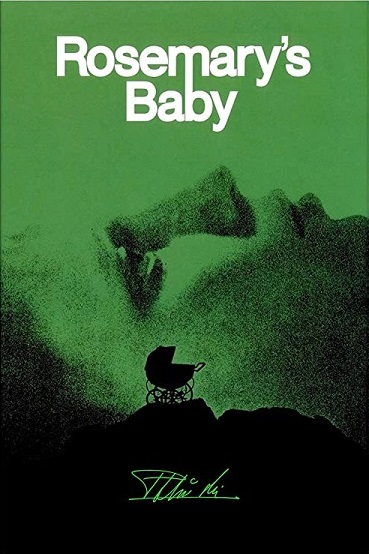
Instead of cultivating the entire vision of the whole of society, Protestantism's offspring (a.k.a. Rosemary's Baby, 1968) assumed an authority over what people should believe that was easily as arrogant and misguided and suffocating as that of the Medieval Pope. It insisted that we believe in a cold and impersonal universe that began long ago in an accidental singularity and has been accidentally evolving ever since toward nowhere in particular. It declared that the language of nature was mathematics and that of fools was poetry. In the world of Protestantism's child, survival belongs to the fittest and there can be only one. A people is only as strong as its sword and its sword is only as sharp as its precision. And any inclusion of any "lower" forms of life is a pure act of mercy on behalf of the "higher," who is whoever wins the Great Race. Because where Bowling is the game of the lymphatic priesthood, the Great Race is the game of the religious priesthood.
Many visionaries witnessed of a cosmic battle. Some, however, merely saw the Great Race, while others saw the narrative arc that exists between the Great Race and Bowling. Dorothy and friends asserted that when you can't win, you can't break even and you can't get out of the game, just ease on down the road. Hamlet, likewise, contemplated sustainable existence and offered opposition to the Great Race by moving on into an existence within a realm of ungoverned dreams.
🔼The Big Lebowski
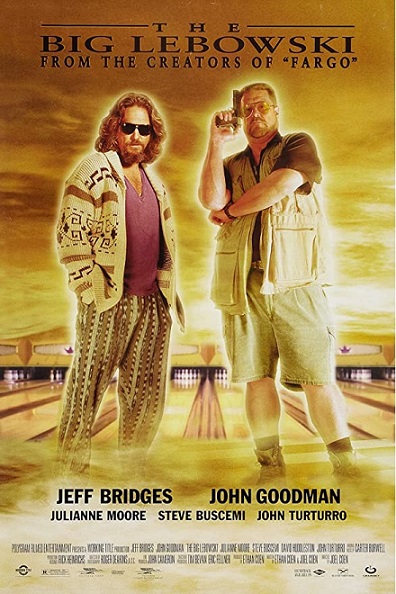
If there would ever be an Oscar for the Perfect Film, The Big Lebowski (1998) would certainly qualify. Like the Bible it secured its eternal preservation by posing as mere entertainment — as a stoner version of The Great Gatsby, actually — but simultaneously contemplated the very nature of the Almighty, albeit viewed through the bloodshot eyes of our saturated Western world. Unlike the highly similar story of The Lion King, The Big Lebowski suggests that in our silly Western world the Word of God is no longer a Man of War, or even a King of Glory, but rather a Dude of Bowling, an easy-going but pushed around Man of Sorrows who staves off attacks from all sorts of secular philosophies, foxy redhead sirens, rug-peeing hooligans, emulating usurpers, spoiled youth, hostile policemen and capitalistic pornographers4. And all this while smoking grass (= tawdry prose) and drinking Caucasians (= elements of male domination: pride, honor, combat, competition) and of course going bowling.
Note 4) Both Jackie Treehorn (The Big Lebowsky) and Mitch Rondell (Zeroville) caricaturize the self-declared "great artist" emperor Nero, and conveniently reside in the same real-world house. Zeroville may be set in our modern Hollywood (which in turn is actually the whole world, according to Viking Man) but hails back to Rome around the year zero. The topology of Zeroville is grafted upon the same dynamic of archetypal characters that has governed the reality of our Western world since it began, which explains the title.
The King and his Knights of the Round Table:
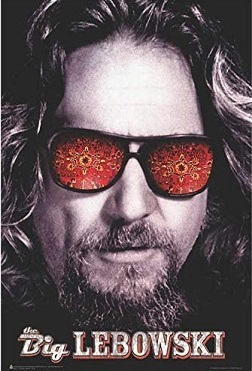
The name Jeffrey is the same as Geoffrey, Godfrey and Godfried and means God of Peace. The name Lebowski relates to the Polish-Yiddish word for heart and lion (i.e. Lionheart), and the "big" alter ego of the Dude equals Scar from the Lion King (compare Jeremiah 30:12-17 to Revelation 13:3). Assistant Brandt relates to administration and bureaucracy and ultimately to the broader leitmotifs of expunging records and burning down forests.
Trophy wife Bunny is whatever undermines the false king's house (hence also Watership Down, 1972, Andy Dufresne in The Shawshank Redemption, 1994, Rabbit in 8 Mile, 2002, Guy Fawkes and thus V for Vendetta, 2005, John Patrick Mason in The Rock, 1996, MIB's NY Head Quarter, and the aptly named and frequently visited justice Earl Warren).

Walter Sobczak portraits a military apparatus that tries to behave and succeeds most of the time. The name Walter is an old German name consisting of wald, rule, and hari, army (i.e. Stratocracy). Sobczak is a Polish surname of recent Russian prominence which ultimately derives from Sobieslaw, which sounds like "glory for me" but actually derives from a proto-Indo-European term meaning "wise/renowned". Walter's ex is named Cynthia, which relates to the twins Artemis and Apollo, who together pretty much sum up the whole of pagan mythology (i.e. the Great Race). Cynthia's dog is a Pomeranian, and Pomerania is the northern region of Germany and Poland. The name Pomerania derives from po morze, which literally means "Under the Sea," and relates to the subconscious.
In modern Polish, the name Pomeranian reminds of the word pomaranczowy, orange, which reminds of the contributions of the House of Orange to the art of warfare (and business). Smokey thanks his nickname not only to his presumed consumption of hashish, but rather more broadly to the oil producing Arabic world; hence Walter's hissy fit when Smokey "crosses the line". In general, the name Smokey designates a brutish authority based on large oil reserves and may ultimately be based on the Japanese Enenra. In Western culture it has existed since at least Smokey and the Bandit (1977). Hence too the Smokers in Waterworld (1995).

Donny is capitalism's quintessential consumer. Theodore, Donny's middle name, means "God-given" and Donald is Gaelic for "world ruler" (hence also Donald Duck). Donny's last name, Kerabatsos doesn't really exist but appears to relate to the name Karabatsos (of modest asymmetric induction fame) and constructed from the Greek word κεροβατης (kerobates), the hoofed one, or he who goes with horns. Donny's last name is an epithet of our familiar friend, the god Pan, and Donny relates to the Dude the way Clara Sesemann relates to Heidi.
Donny dies in the wake of Walter's brawl with the nihilists, which echoes the death of true market discovery in a Keynesian economic world. Since Jeffrey and Walter hail from Polish families, Donny's death also ties into to the fall of the Soviet Union, or rather more specifically, the various secret police systems of the USSR (see Das Leben Der Anderen, 2006; the name Gerd Wiesler means Great Spear of White Washing and relates to the name Pontius Pilate and thus the fifth rank of Rome and thus the pentagram).

The character Jesus Quintana is rich enough to devote a book to. He obviously embodies a broad range of Christianities (and specifically the Church' most publicized crime against children), but his last name also refers to the 20% tax that Jews were forced to pay when they wanted to flee Germany in 1938. This tax was imposed as retribution for the assassination of Ernst vom Rath by the Jewish teenager Herschel Grynszpan (and yep, that's Greenspan), which triggered Kristallnacht and gave Hitler an excuse to put his imagined War on Jews into practice (hence also the subliminal portent of An American Pickle, 2020).
Later it was discovered that Ernst and Herschel may have been gay lovers, which not only ridicules the whole Nazi movement but also slides Quintana into the heart of the War of the Roses, which was similarly attempted in Kingpin (1996). Quintana's victory dance derived off that of Muhammad Ali (nicknamed The Greatest, or Bigger than "the Big"), which invites commentaries on a vast spectrum of social movements from professional sports to civil rights to the rise of Islam in the West. As an archetype Muhammad Ali relates to Rocky (1976), which in turn relates to The Godfather (1972), which in turn comments on the inherent violent element of Western commerce.
The Cold War came to an end due to the joint efforts of the teams of Reagan, Gorbachev and the Polish Pope John Paul II, and that is deeply profound because Capitalism, Communism and Catholicism could never have united. Instead, the peace was achieved by Reaganism, Perestroika and the Second Vatican Council. The Cold War was a conflict within the unholy trinity of communism, capitalism and fascism, whose father was the Enlightenment, which in turn grew from a mist that rose from the stifling norm of Medieval Roman Catholicism.
A millennium earlier, a similar move away from a singular Roman norm and toward an unsustainable hyper-liberalized delta of superstitions and neo-paganisms resulted in Muhammad's cry for people to return to Moses and the Prophets. As we have seen, Moses and company have nothing to do with some exclusive religion and everything with a globally inclusive search for human definition. This suggests that the modern West and Islam are in fact very similar brothers from the same Roman mother, who will soon be ready to engage each other like Isaac and Ishmael in a common purpose. Bob Dylan was right. There is a way out of here (Genesis 25:9).
🔼The Tent of Meeting
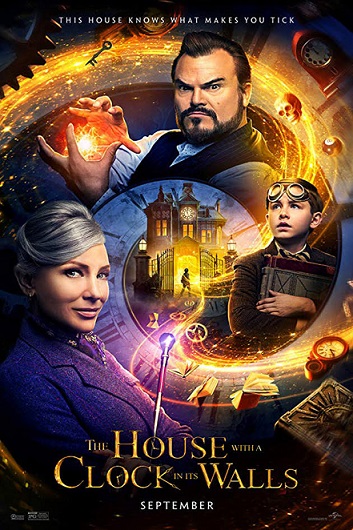
The Great Race insists that all is false since there can be only one ultimate victor. The Great Race demands a divide between a handful of athletes who actually play the game and a vast audience of inert viewers whose opinions and preferences are rarely tried to reality and certainly have no bearing on the outcome of the game. And while viewers are heir to frustration and learn to hate the objects of their devotion, the athletes are driven to mad obsession and end up sacrificing their private life and ultimately their physical health for a shot at the gold. Whoever finally wins has probably also lost their soul (Matthew 16:26).
In the Great Bowling League all is true because every single story can ultimately be used as an allegory of all the others. The power of the game of Bowling is that the players and the audience are the same group of people, and the ultimate purpose of the game is to socialize and converse in an amicable and entertaining way. The person whose turn it is to roll the ball steps out of the conversation, so that the conversation can take the turn it couldn't have taken with that player present. When that player steps back into the conversation, the conversation has changed to the point where it can now change the returning player. Taking rotating turns at rolling the ball at some inconsequential kegs in the distance has the sole function of churning the conversation. This is where the literary archetype of the boy behind the clock comes from (and that of The House with a Clock in Its Walls, 2018), and also the ultimate meaning of the archetype of the Round Table, the grinding stone of Samson (Judges 16:21) and the whole corpus of literary narrative that was so diligently studied in Hamlet's Mill (1969).
The familiar Greek word συναγωγη (sunagoge) or "synagogue" comes from the prefix συν (sun), together with, and the verb αγω (ago), to lead or bring along. The synagogue was invented in Persia, along with the multi-centered Judaism that the temple of Zerubbabel represented. The Greek word, however, was in antiquity applied to any gathering of rulers, elders or academics. A synagogue was always open and the conversation was always happening, and folks were stepping in from their daily affairs, partook in the debate, and left again when their worldly distractions called. Voices were always heard but votes were never taken. Meetings were never moderated or closed and minutes were never noted and anything that was worth passing on would be passed on eventually in whatever way shape or form.
In all Slavic and Middle Eastern cultures guests are offered bread and salt to symbolize an invitation to peacefully congress, and the significance of this ritual lies in the cognitive hydrological cycle. Salt sits in endorheic terminations like unexpressed wisdoms in a person's mind or an entire culture's narrative library. Cross-cultural unity can only be achieved when the salt that is dissolved in the separate bodies of water is allowed to meet and form a single larger lake that will ultimately break through its barriers and find a way to the Great Sea.
Global peace won't come from greater armies, commercial investments or grandiose summit meetings. It will come when the storytelling elites of the world are gathered, wherever, whenever and however they want, to hear history's most distant voices like blood crying up from the earth (Genesis 4:10, Matthew 23:35). Now with the momentum of theaters and cinemas depleted, here at Abarim Publications we privately expect great things from the gaming industry, and particularly PvEs and MMORPGs. All stories will be told, as the greatest story ever. Moving pictures were just its morning star.
Every mind, whether collective or individual, weaves its sense of reality from the stories it absorbs. And the roots of these stories either reach all the way to the central sanctuary at the heart of all narrative, or they derive from later introduced elements: lies (Matthew 13:25). The roots that reach all the way down tie minds together into a living unity. Every mind that does not have a critical mass of stories with roots that go deep enough to reach the innermost sanctuary of all human narrative will ultimately dislodge and disintegrate (Genesis 18:32), not for a descent into hell but rather a reversion back to the community of animals, where no Theory of Mind exists, and where memory is one mere generation deep.
Priestly bowlers listen to any kind of story — from the TV news to neighborhood chatter, the latest episode of The UFO Files or a Pulitzer Prize winning novel — but not as a consuming audience and certainly not wondering if the stories are "true" or not, but rather the way a scientist observes an event and seeks to explain it in terms of eternal natural law. Priestly bowlers wonder at which level of complexity the story originated, why it is told and what it effects, which elements it consists of and which frame of reference it relates to.
Priestly bowlers assess stories for their roots, and they validate the consistency of individual minds as well as entire societies, like fishers that cast nets around schools of fleeting thoughts and pull them up (Ezekiel 47:9-10, Matthew 4:19). Priestly bowlers investigate to which degree any human mind is safely tethered to the temple. For this they need to be able to travel all the way back to the temple, and that, obviously, takes a trick or two.
🔼A Star Is Born

1954: "Mirror, mirror on the wall, who is the greatest star of them all...?"
1976: "Are you a figment of my imagination... or am I one of yours?"
2018: "Black eyes open wide. It's time to testify. There's no room for lies..."
Einstein figured out that time slows down when objects speed up, which is of course terribly inconvenient to people who are in a hurry. Still, it's not as bad as it seems. Time, you see, is a thing like sunrise, in that everybody experiences it but what we experience is not really what's going on.
As Kip Thorn showed in his seminal book Black Holes and Time Warps (1994), time can be defined in several ways but for now let's say that time has to do with the way atoms are arranged relative to each other. Right now, all the atoms in the universe are arranged in one certain way, whereas yesterday they were arranged in a different way, simply because atoms tend to move around. Today's arrangement makes the world of today and yesterday's arrangement made the world of yesterday. The difference in these arrangements of atoms is what we call time.
And that in turn means that all the atoms in the universe are here with us, right now, in the present. And if the past still somehow exists, it exists purely in the form of data, somehow stored in the present. That means that whatever data from the past is stored in the present can still be accessed, but whatever is not stored is gone for good. The present is the only materialized point on the temporal axis, and if the story of our universe were a movie, our present is always like that one and only frame of a movie that is actually projected upon the screen. The rest is unmanifested data, rolled up upon reels.
When you do a burpee and jump up, you also push the earth down a fraction of a fraction of a millimeter, and when you fall back to earth, the earth is also moving back toward you a bit. The universe is a continuum, and all its part are continuously connected to all the others. When you raise your hand, you spend energy, you make the air move, you move the center of earth's gravity! When you move your hand, the entire vast expanse of the eternal universe is reacting with a combined counter-action that is equal but opposite to yours. That rule is the most fundamental rule in the universe. The famous singularity from which the universe sprang was never compromised. We're still one.
If we want to physically time-travel from today to yesterday, we will have to somehow arrest all the atoms in the entire universe (except our own, and those of the sandwich we just ate, and the air we just breathed), somehow find the power to make them stop what they are doing and drive them all back to where they are coming from until they occupy the same position they did yesterday. Unfortunately, since Heisenberg's Uncertainty Principle (1927), Gödel's Incompleteness Theorem (1931) and Lorenz's Deterministic Nonperiodic Flow (1963) we know that it is not even in theory possible to catch and tag all atoms for their position and speed, and thus predict the future. And that means that we can neither reproduce a material manifestation of the past with any useful degree of fidelity.
And that is why time isn't really real: the movie that is the history of our universe turns fuzzy a mere moment both into the future and the past. That means that the reels upon which our past and future are wound aren't really reels but rather buckets of very liquid probability. And that means that the entire axis of time is a mere blip that terminates on both ends in frizzy frays (as hauntingly depicted in Stephen King's The Langoliers, 1990).
In the material universe (that disregards the effects of living things), the certainty with which the past is established is precisely identical to that of the future, which means they are one and the same, stored in the present as if in a mirror, in which the reflection is one with the original. In the fractal geometry of the Bible, an increase in absorbed knowledge works like an increase in absorbed light, so that both equal an increase in mass, and thus a slowing down of time and all that. That means that time is an illusion brought about by varying degrees of certainty of any kind, experienced in the eternal present, which waxes and wanes according to the degree of certainty attained.
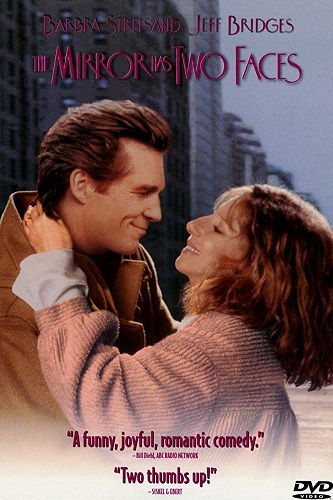
However, and this is crucial, atoms relate to each other in variable degrees of consistency, which means that the very substance of time has different consistencies as well. When many atoms together form an object, their innate insecurities cancel out. That is why objects that comprise more than a hundred atoms or so, are governed by classical mechanics rather than quantum mechanics, which allows pretty accurate predictions into the future, and thus past, as long as the objects do not disintegrate. When the atoms began to cling to each other in bonds that lasted, the axis of time began to stretch.
Before there were stars, atoms existed in enormous clouds that could store very little usable information (the absolute amount of data has always been the same, but not all of it is useful information; 1 Corinthians 10:23). But when these clouds began to contract, the atoms at the heart of the cloud began to condensate into a liquid and then form a solid (namely "atomic solid metallic hydrogen" in the spirited 1935 prose of E. Wigner and H. B. Huntington). And with that, time began to last.
The story of how the universe went from a liquid temporal state, in which very little history could be stored, to a solid temporal state, in which history lived long and prosperous, is most spectacularly told as the happenings on the third creation day (Genesis 1:9-13). Somewhat less profound is the song of similar themes called Shallow, which won the Oscar for best original song as part of the soundtrack of A Star Is Born (2018). Stars, of course, are born on day four of creation. Stars are born when at the solid heart of a cloud of atomic dust, multiple hydrogen atoms begin to merge into single helium atoms, and the difference in energy is radiated out in the form of light. (Actually, it takes light a few hundred-thousand years to reach the surface of the star, so when a star is born, it still has a spell of darkness to live through.)
When a large star has burned up all its fuel (i.e. atoms from hydrogen up to iron), it will terminate in a so-called super-nova, and form (a) a huge cloud of atoms heavier than iron, and (b) a black hole. In black holes, time comes to a halt, which means that from the perspective of the universe, not much happens in black hole singularities, whereas the singularities themselves witness the entire eternity of spacetime as it flashes by in a single instant. That means that there is a perfect entropic correlation between black holes and mature minds, and that both the universe and the humanity's collective mental sphere are shaped like a vineyard (Isaiah 5:1).
As noted above, stars don't simply hang in space but create the space they sit in. Likewise our shared human reality exists as a function of all human minds. And when you remove one mind, the whole of human reality changes entirely. But since human reality is not stored as function of atomic bonds, time-travel in the medium of mind is certainly allowed, and perfectly safe, provided that the traveler knows what he (or she) is doing.

Since 2008, blockchain technology has explained the slings and arrows of time-travel the clearest: A time-traveler who travels from today to yesterday, changes the entire fabric of both today and yesterday (and every block in between). When he arrives physically on physical yesterday, he has achieved two things:
- The mere presence of the traveler has changed yesterday to the degree that it won't result in the old today, which means that neither our traveler nor anybody else will ever be able to get there. This is obviously a significant problem for the traveler.
- Our traveler is now stuck on "new yesterday" without an explanation how he (she) got there. After all, you can't come from a future that will never happen, and our traveler has no valid past that shows that he belongs to the reality he made himself part of. He is literally out of touch with our reality because our reality has no record of his origin, and that means that he is indistinguishable from something that is not true, like an unvalidated transaction that the blockchain network rejects with ever increasing certainty.
By traveling back in time, our traveler has made himself a lie. He sits in yesterday like a bubble in the glass of water that is our collective reality. And that's no small thing. Because he has no verifiable past, he is unable to relate properly to our shared reality, which in effect means that he is psychotic (or very drunk in A Star Is Born). Since he has seen the future, he initially has an advantage over his peers, but as the days grind on, the reality he has become part of is drifting ever further away from the future that even he must slowly forget.

"I've seen the future, brother, it is murder," sang Leonard Cohen wisely, and Tom Petty added, "the future is wide open, ... a rebel without a clue." And as yesterday becomes the next, the today from whence our traveler sprang sinks ever deeper into a darkness from which it will never emerge, and our hero becomes crazier and drunker until he finally finds no more support to remain in existence and expires into a hollow pop of nothingness (or a "last twist of the knife" in the words of T.S. Eliot).
The woke reality of the invaded and violated yesterday now faces the task of clearing the lie and getting back to a condition of consistency in which the traveler has been rejected and erased (as gruesomely demonstrated in The Fly, 1986). That means that new yesterday will have to get back on track of old yesterday. And that means that, after her detour fling with illusion, new yesterday will ultimately bring forth the children of old today, even though old today never occurred. And that means that the temporal journey that started all the hoopla might as well never have happened, and actually didn't by the time the contaminated causality bubble is annulled.
Most animals that we can see with our naked eye have brains that are complex enough to extrapolate future conditions, which gives them the ability to hunt a fleeing pray or to catch a moving object. But coupled with Theory of Mind, a sense of the future opens the door to an entire industry of deception. Instead of traveling back in time, our time traveler might glance ahead to tomorrow, and if he finds a future that he doesn't like, he could fabricate a future more to his liking and send "someone" (i.e. himself disguised) from that synthetic future back to the present to testify of it (Genesis 3:4-5). Hence people might be convinced of and aim for a future that wouldn't naturally occur, which in the short term will benefit the liar and disadvantage the believers, but which certainly will eventually be found out and corrected (as handsomely meditated upon in The Adjustment Bureau, 2011).
Both memories and premeditations are essentially time travels, which alter the course humanity's present sense of reality takes. Lies about the past or future create global psychoses, which will either kill us or get corrected.

Right now, our collective human reality is like the mind of a very drunk person, who staggers around his world blind to what is there (what the universe as a whole confirms) and convinced of things that aren't (what the universe as a whole rejects). Some lies came with today's bottle but others were introduced thousands of years ago and have spawned entire forests that have become interwoven with the ancient original roots that are still in the ground. Whether this lumbering fool can still be saved is unknown, but what is very clear is that in his present state he won't make it much longer. He will either sober up, straighten out and return to the eternal road to glory, or keep drinking and ultimately be rejected by even his own mind. And that's not a happy end.
People who function perfectly in the world today must inevitably be as drunk as the whole of human reality, whereas people who are in tune with the ultimately victorious universe are inevitably perceived as non-conformants and even psychotics. That means that among our world's many psychotics, substance abusers and "anti-socials" there are utterly sober-minded folks who are in all earnestness reacting to the drunk visions of our collective human reality, like beacons of clarity that run ahead of the rest of us into a sustainable future.
And how can you tell such a sage from a loon, you ask? Well, the same way you can tell a vagrant from a postman: the postman always rings twice. In the case of the unfortunate "Father of Set Theory" Georg Cantor, his ring was not confirmed until he had become irreparably insane. But in the case of A Star Is Born, the postman has rung four times since 1937.
🔼The Greatest Show on Earth
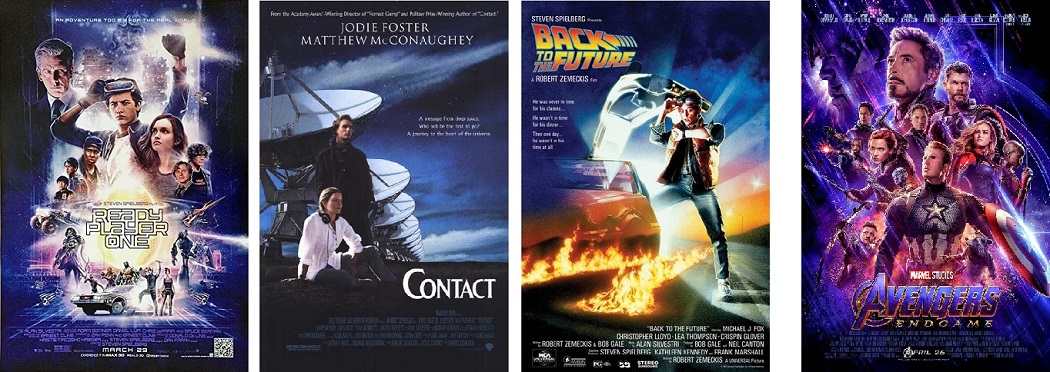
The three Jewish movies Ready Player One (2018), Contact (1997) and Back to the Future (1985) all tell of the same compelling promise of salvation: To go forward you must first go back to confront your worst fear, and to retrieve a message that was left there for you by forces far greater than you can now imagine. Something similar was addressed by the highest grossing movie of all time, Avengers: Endgame (2019), which was a witless pagan rip-off — and only a few million people in the world can tell the difference.
Avengers: Endgame cost $350,000,000 to make and grossed about $3,000,000,000, which is more than the GDP of several African countries, and roughly equal to the money the US spends per year on pediatric cancer research. As any mother will tell you, there's nothing wrong with knocking back a few drinks with friends on payday but if booze becomes your main expense, you're in in for a quick demise. Thanos is real but Thor isn't.
The familiar Hebrew word שלום (shalom) means peace but comes from a verb that means to be whole or complete. That means that peace is a function of wholeness, not of blowing up bad guys. The living can only survive when they find a way to live with all the living and leave no one behind, no matter how unappealing. The Creator is the only judge and only Nature is permitted to terminate the unviable. Our job is the keep everybody alive.
The name Thanos derives from the Greek word θανατος (thanatos), meaning death. But as Thanos himself submits: both death and intellectual fascism are inevitable. Death is the destiny of all the living until it is no longer so, and fascism is a stage which all complex societies that evolve must traverse. And it's virtually impossible to recognize either for what they are when they come floating down hanging from an umbrella in the autumn breeze, or promises of Aryan brotherhood in a bankrupted republic.
Thanos cannot be defeated by violence — and certainly not by the violence of non-existing supermen or demigods who don't understand the nature of time and deride the folks that do — but only by reasonable people who calmly and kindly explain to everybody why fascism is a bad idea that will cost everybody a lot of time and money. Remember King Sisyphus who had to roll that boulder up the hill only to watch it barrel down again each time? That was because Sisyphus didn't understand the nature of time and went back again and again and again only to end up at the same spot over and over and over.
What Sisyphus didn't get is that time travel is certainly possible but the medium to do this in is mind, not spacetime. Mind is a real, physical dimension of the universe. It's a transfinite quality and always travels faster than light. People who are in utter control of their minds can travel anywhere they want to, and two or more of those combined can review and retrieve any data from anywhere at all. And it's the data that counts.
🔼Endgame
As is clear to everybody by now, humanity is on a collision course with the worst parts of the Book of Revelation. But it's the season to be jolly, and the Magi are telling the story any which way they can, hoping to God that this time Herod will listen carefully to what they are saying (Ephesians 4:8). The Rule of Reciprocity (Matthew 7:12) is the most fundamental rule of nature. It sits at the heart of all atoms, all cells and all minds, and if all else comes to a halt, reciprocity will still be there, and the universe will manifest it in whatever form, and in ever increasing degree of complexity (Matthew 5:18).
The Angel America may have eight, but the New Jerusalem has twelve points of entry (Revelation 21:12), and the Great River has the Tree of Life on both its banks. The Tree of Life in turn bears twelve kinds of fruits and its leaves are for the healing of the nations (Revelation 22:2). And when Jesus commanded to make disciples out of the nations, he was talking about the nations (Matthew 28:19, see Psalm 2:1, Haggai 2:7).
Across the seas of doubt lies a world beyond belief. There is a vast garden for each family, and each family can manage their own garden however they see fit. And every individual can live in whichever garden they feel most at home. There are freely flowing rivers to connect all the gardens, to supply them with resources and information and to collect their wastes and products. There will be no formal human authority whatsoever (1 Corinthians 15:24). There will only be natural law and its inexhaustibly vast expanses of application (Revelation 21:22).
Imagine a world in which a facility like Halliday Journals in Ready Player One houses the lives of everyone who's ever lived, meticulously reconstructed and extrapolated from all the data we now already have. Imagine having a technology that corresponds with the natural principles that produced DNA, and that gives us insight in what the universe meant to say and wrote down in the format of genetic code. We will be able to hear every word that was ever spoken and peruse every leaf of grass that ever sprouted, reconstructing the entire chain of genetic blocks back to the very beginning of life, even back to the space between the stars where our genetic story began. All we have to is make up our minds.
Santa is coming for one more, very long Christmas. The global permissioned blockchain is coming and it brings a digital identity and social score for everybody. It will stifle communities and terrorize individuals. But it's absolutely vital that deep down inside, all of us understand that our survival depends on the wholeness of our organic network, not on the greatness of our leader or the pride we take in ourselves.
It's Christmas time but there's no need to be afraid. Steel Magnolias (1989) was prophetic and as Truvy said: "Women have babies every day". Likewise, The Burbs (1989) depicts the whole of Western society as a cul-de-sac called Mayfield Place, and as Ricky Butler demonstrates, the best source of entertainment is the game of being a neighborhood. Some of our neighbors are childlike in certain ways and others are old in those same ways. But only as a whole our shire will last. Somehow, somewhere over the rainbow, the kid will prevail, buy some furniture and give the cat a name!
